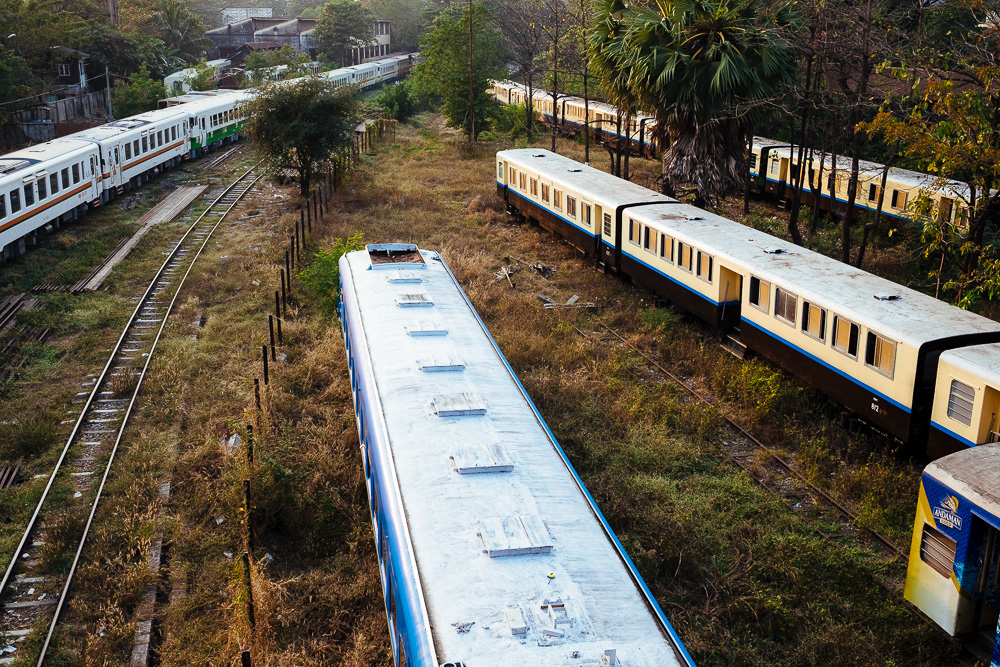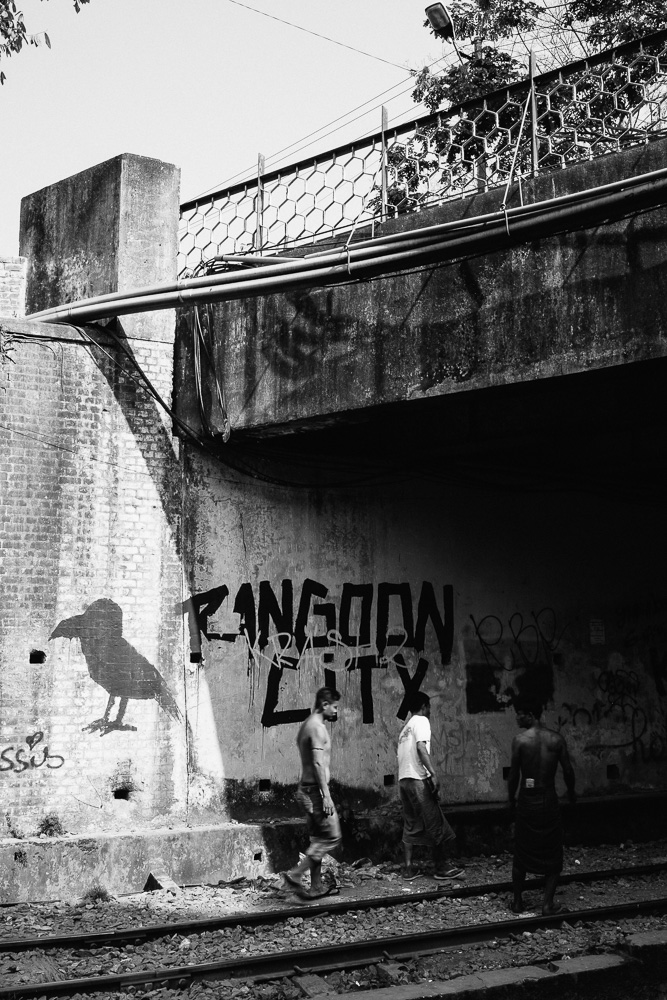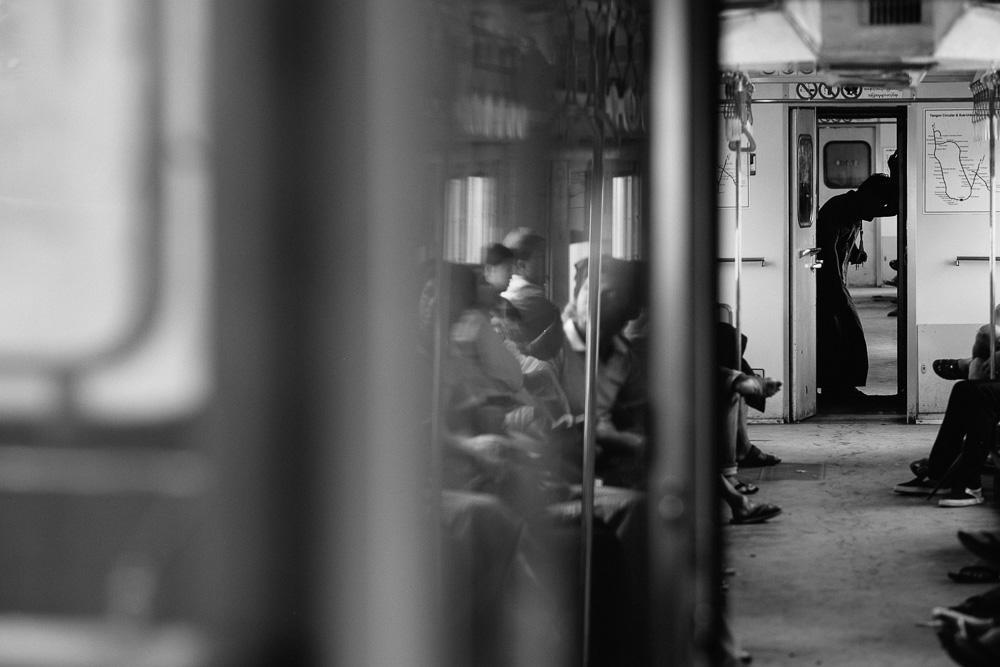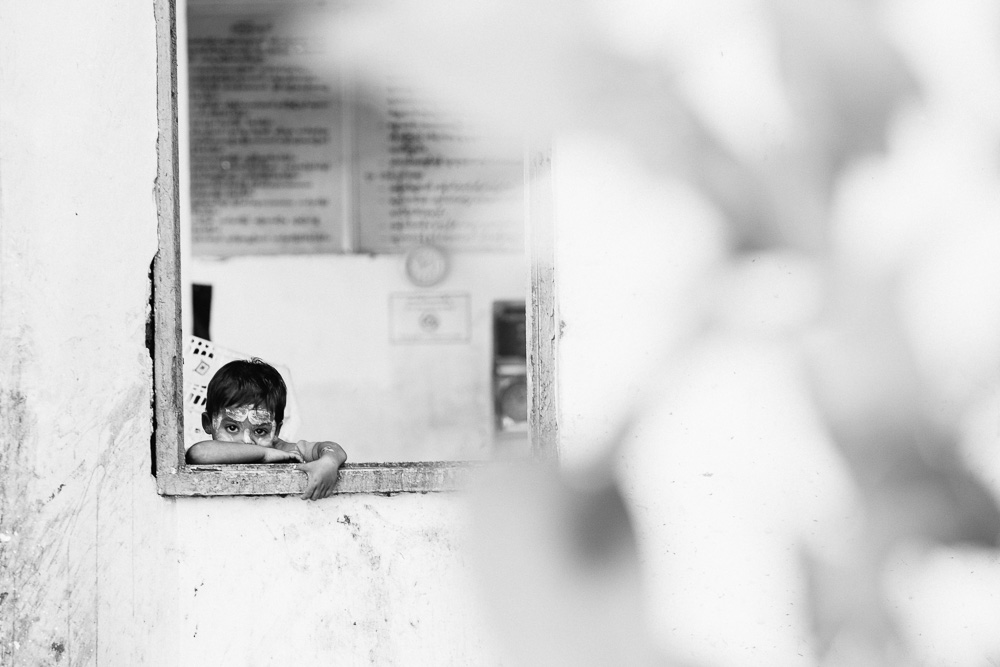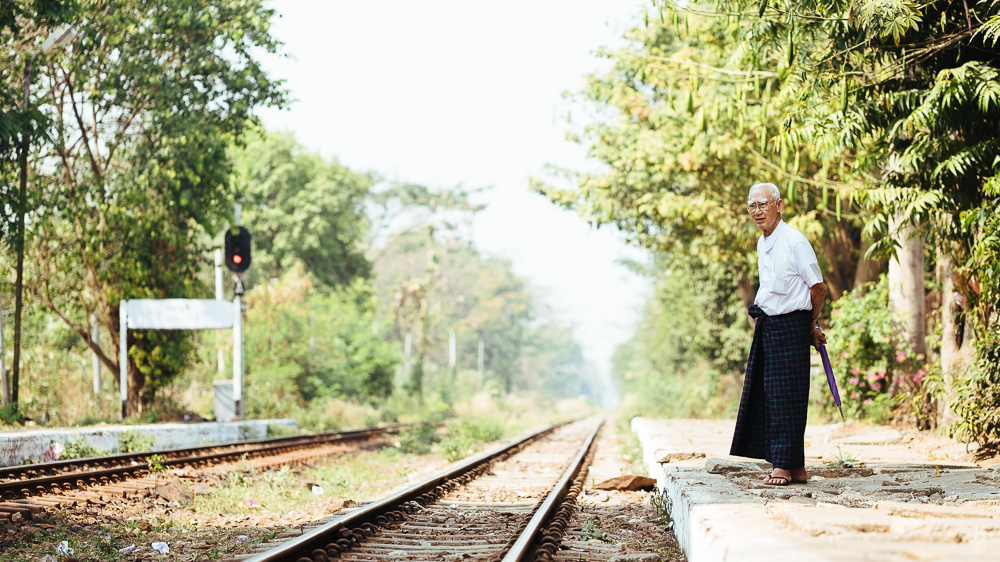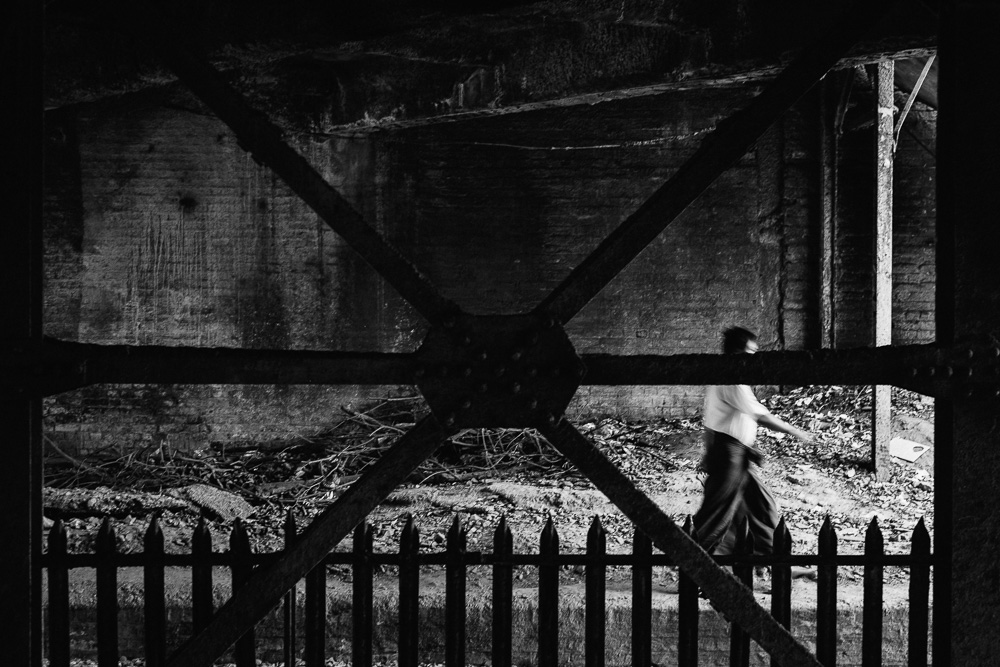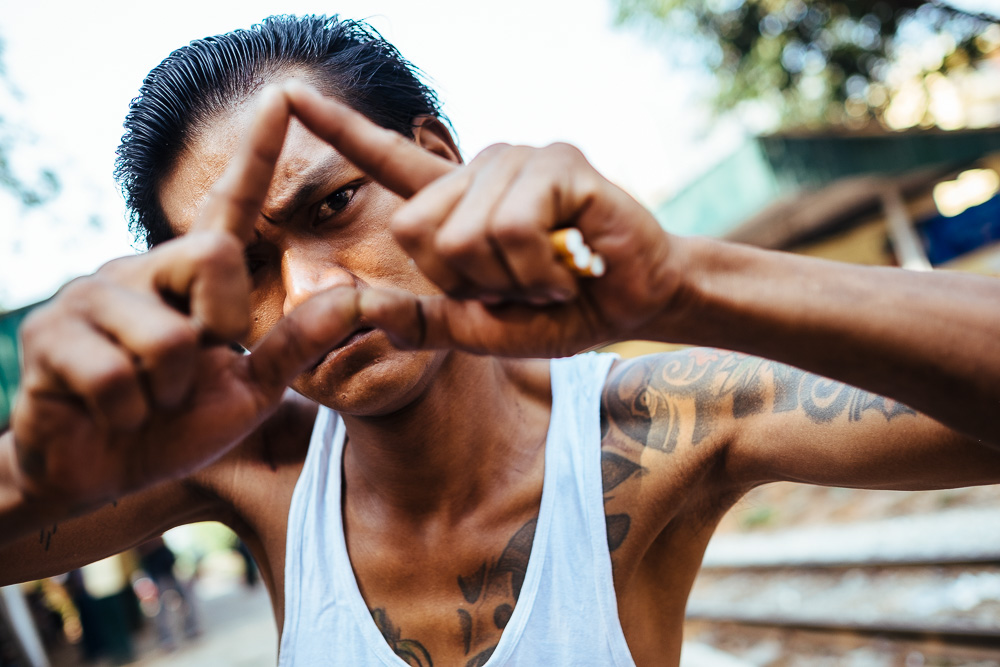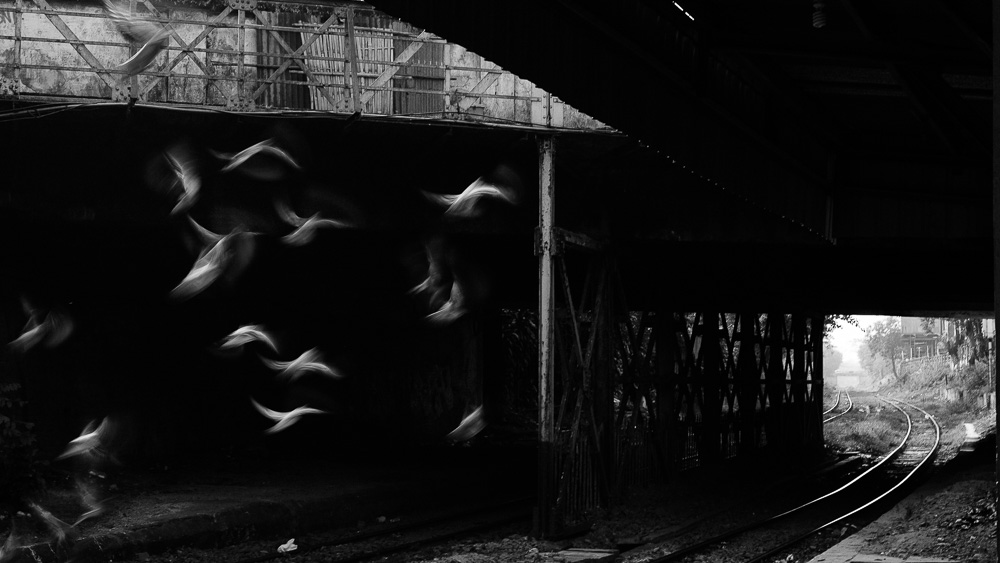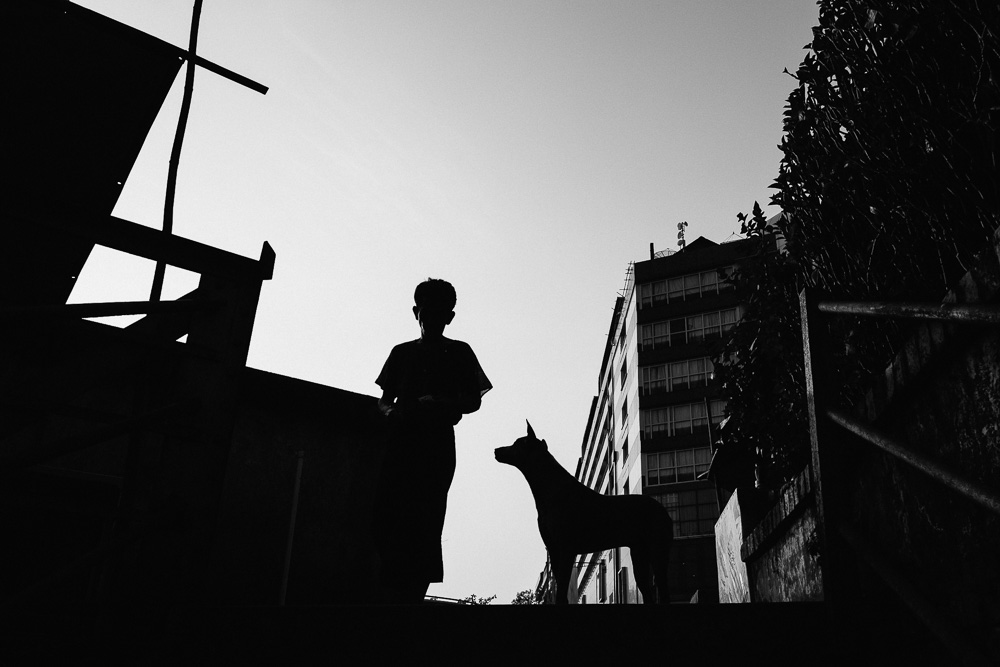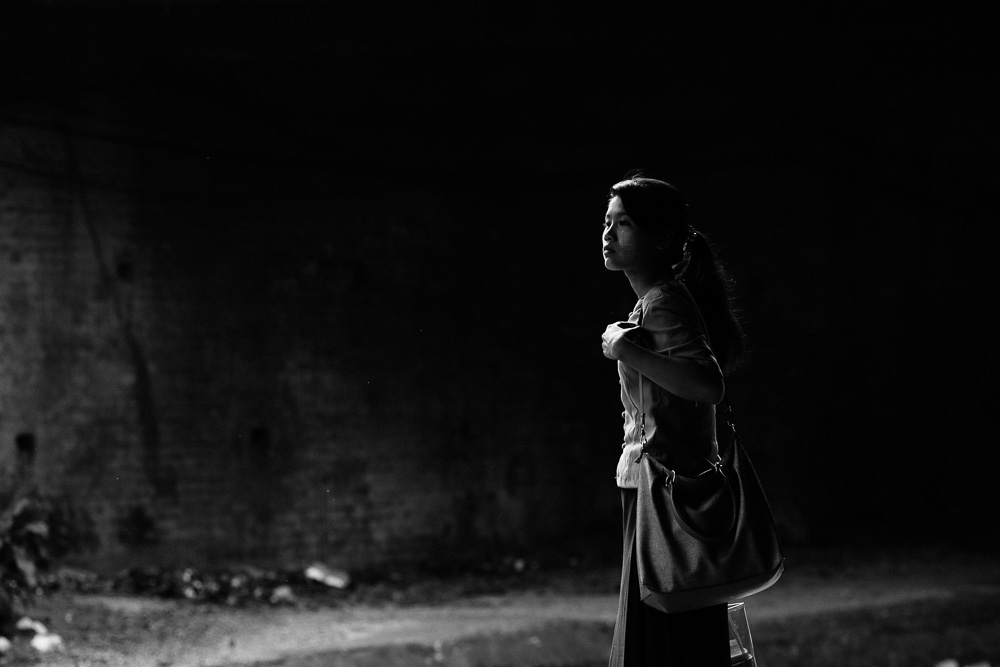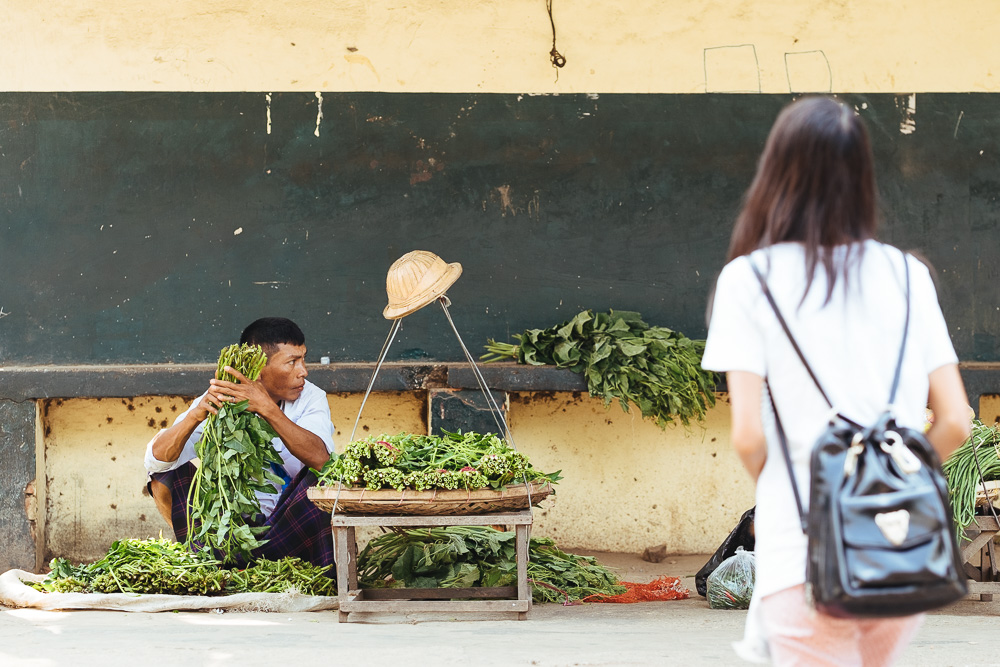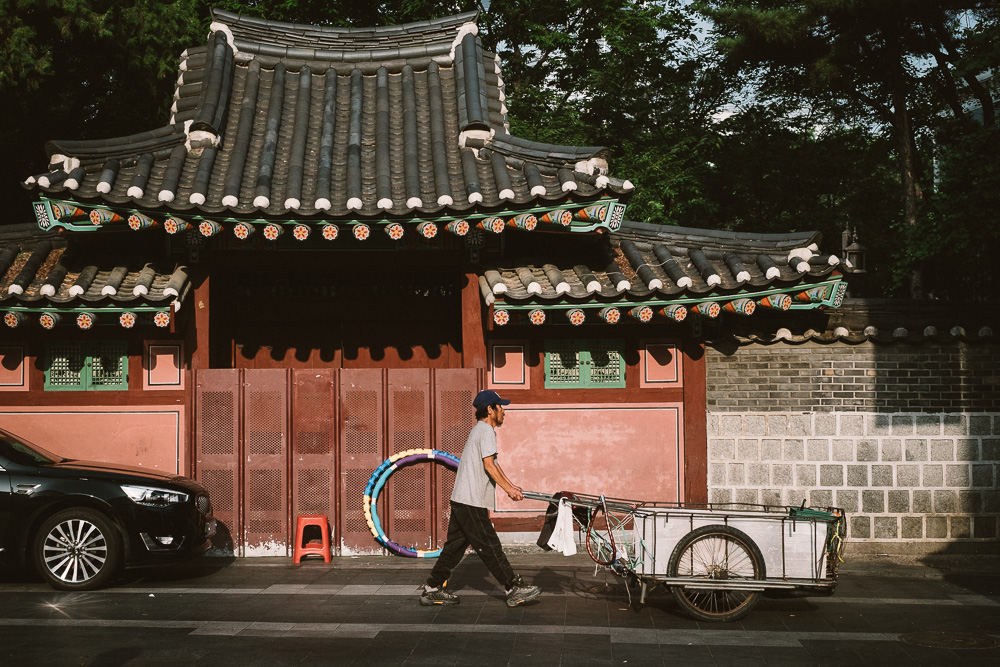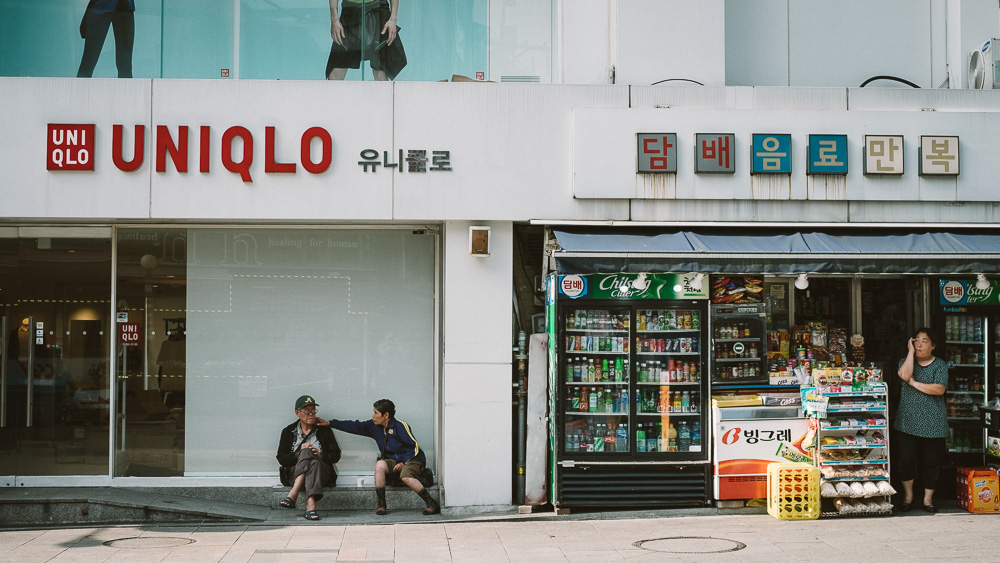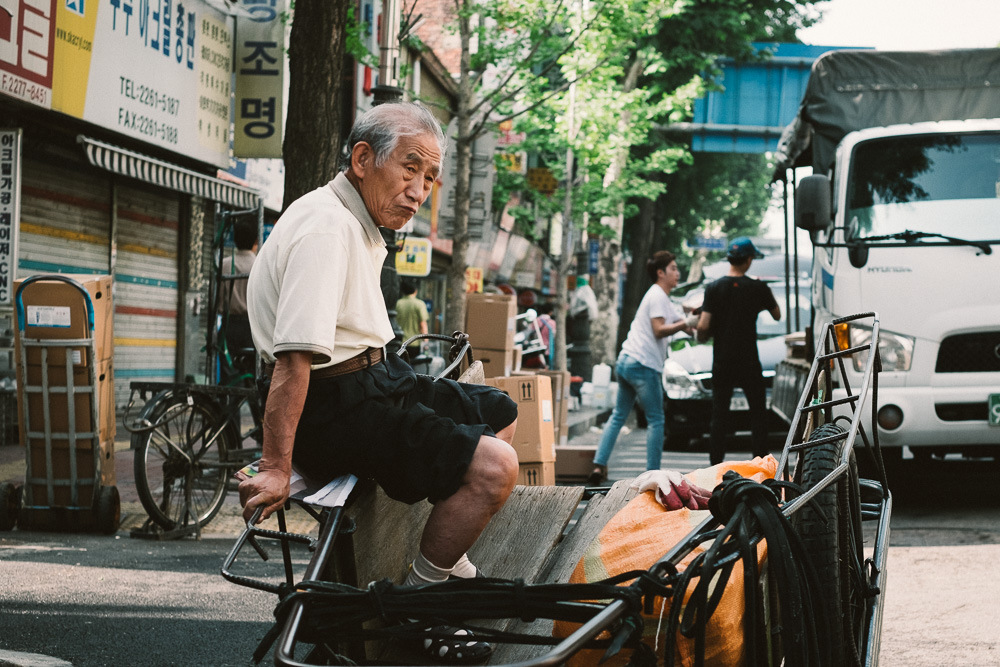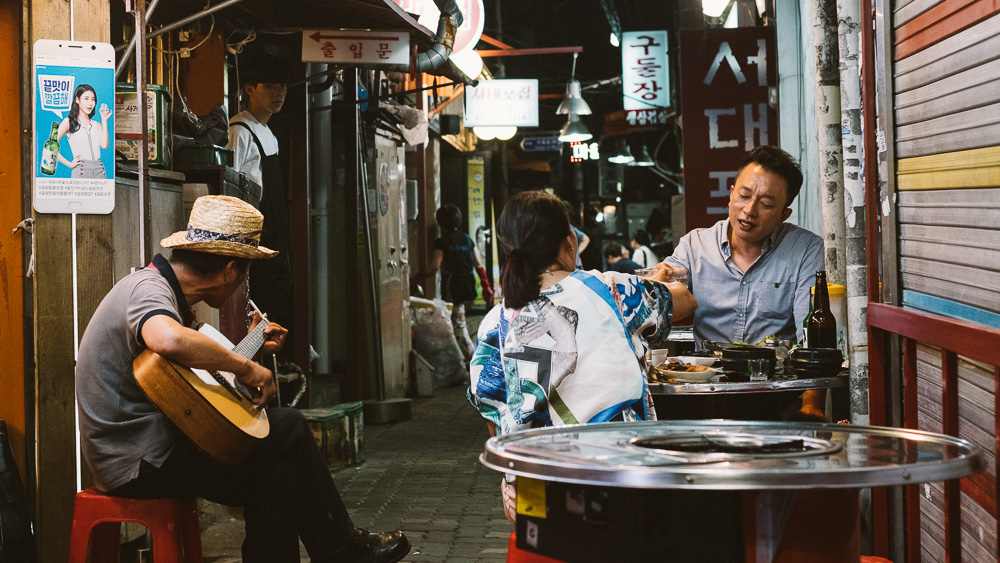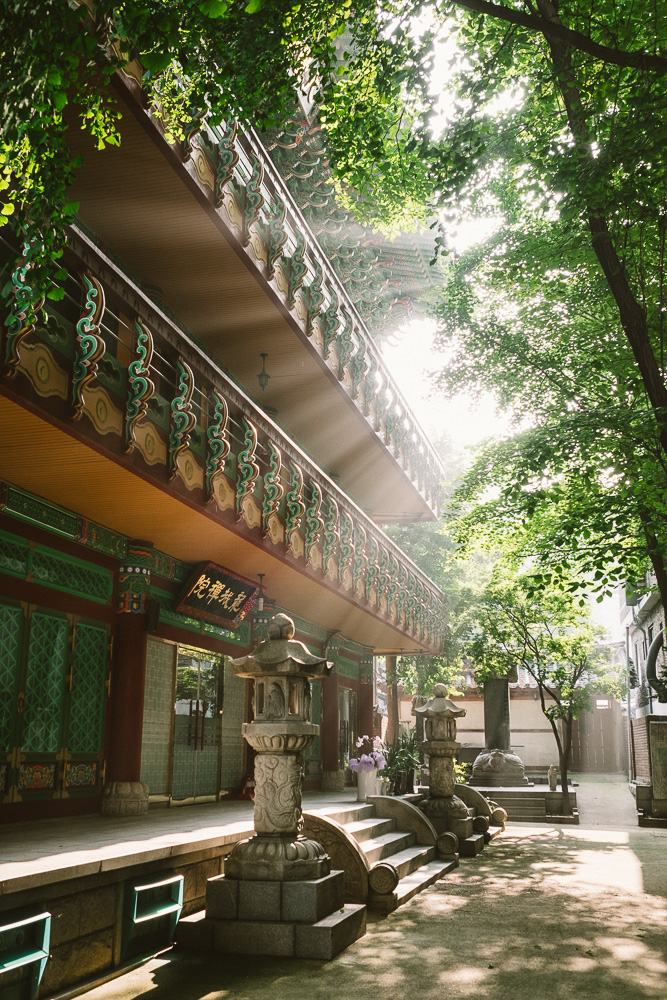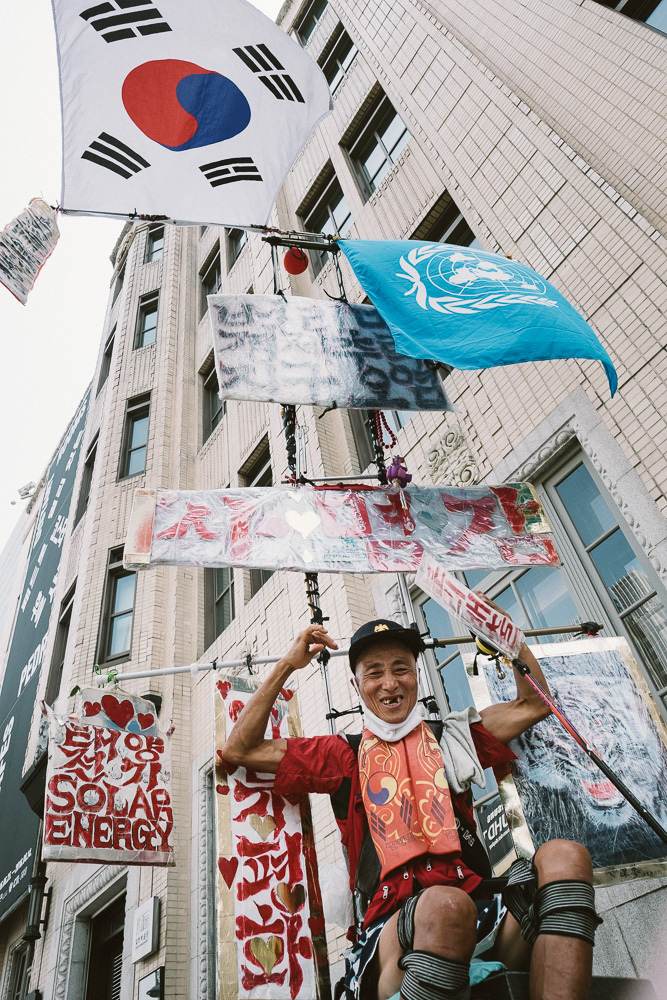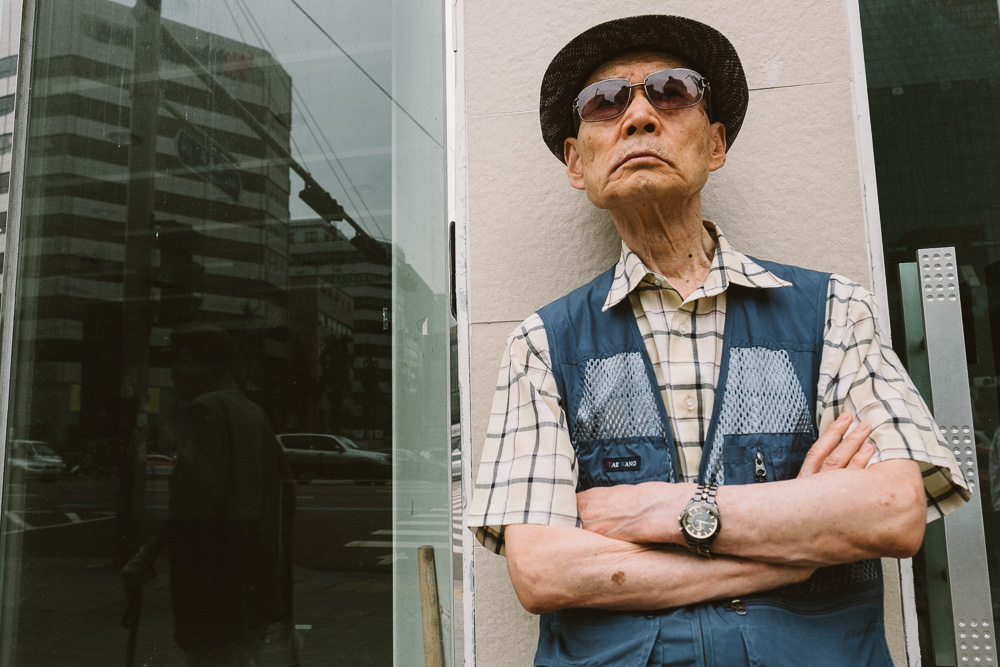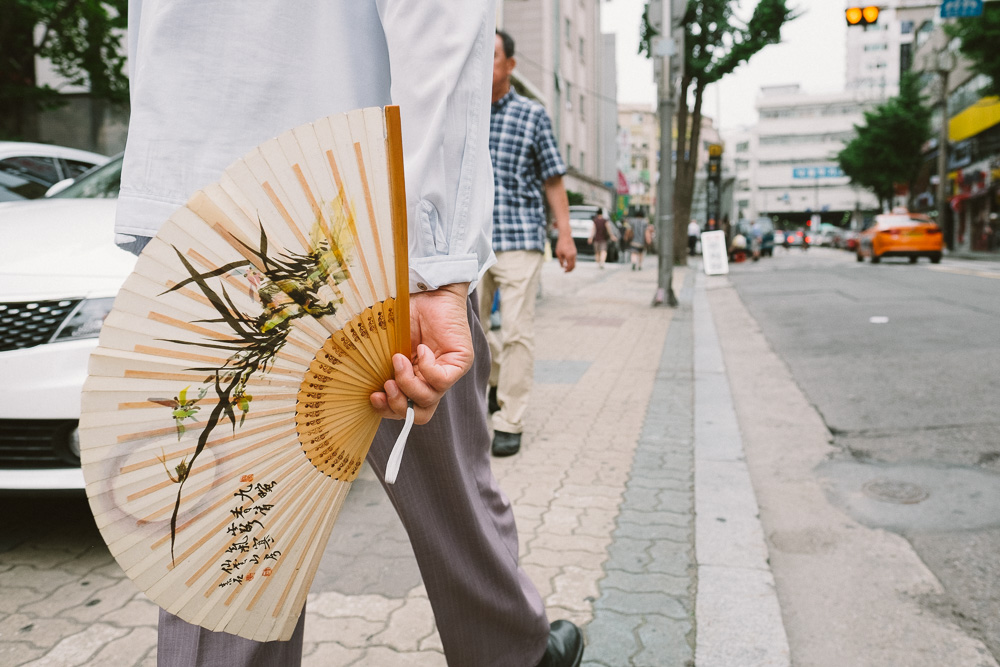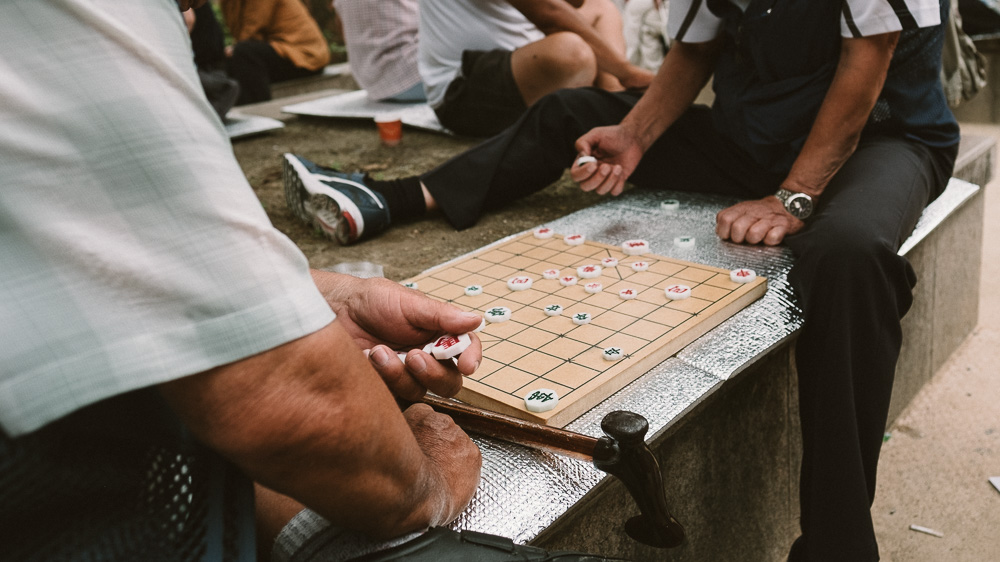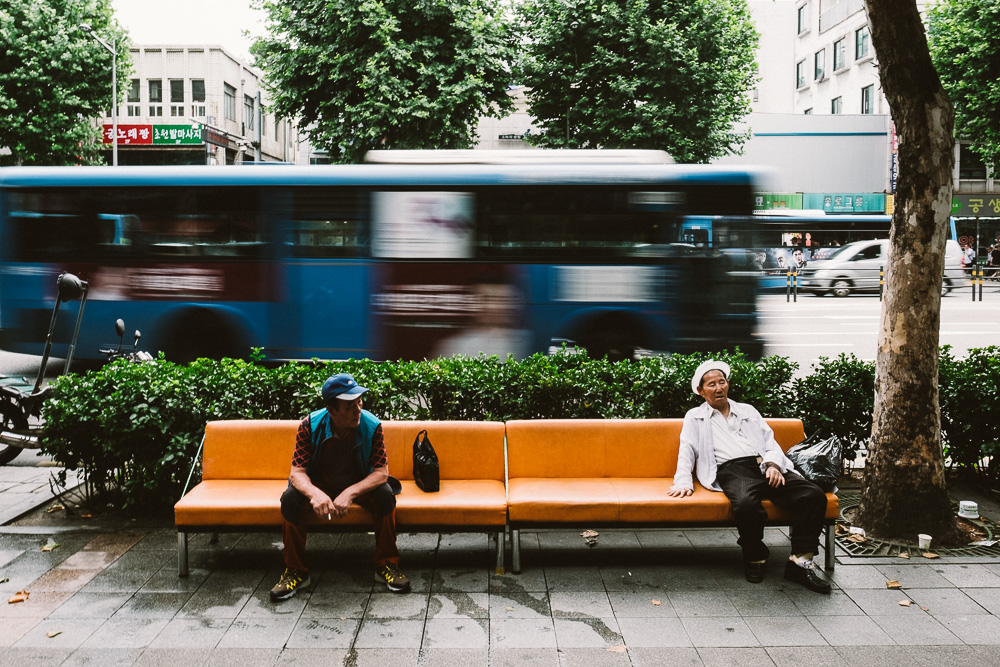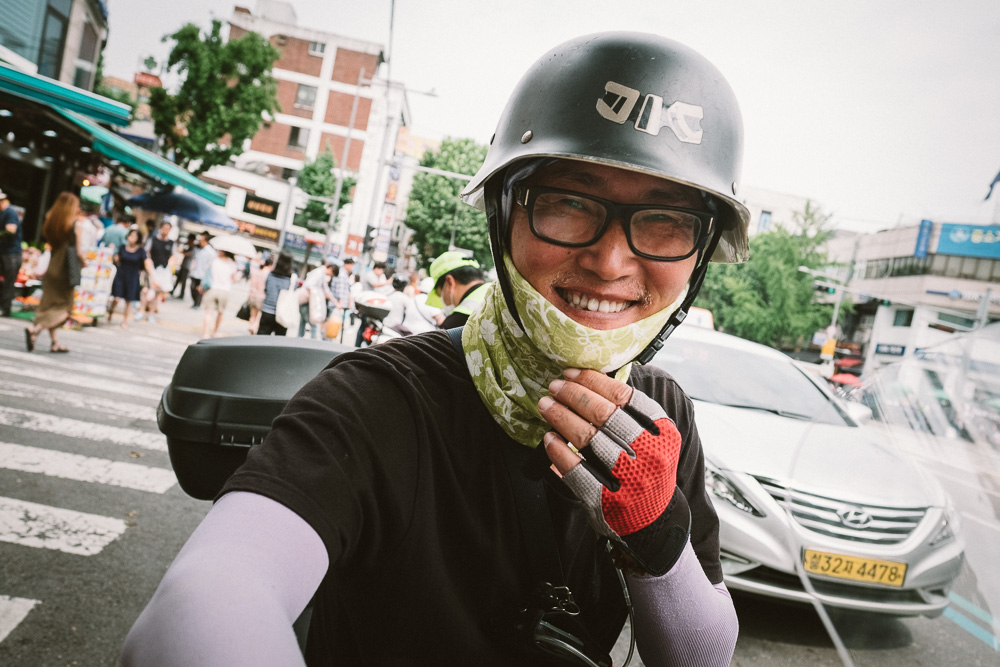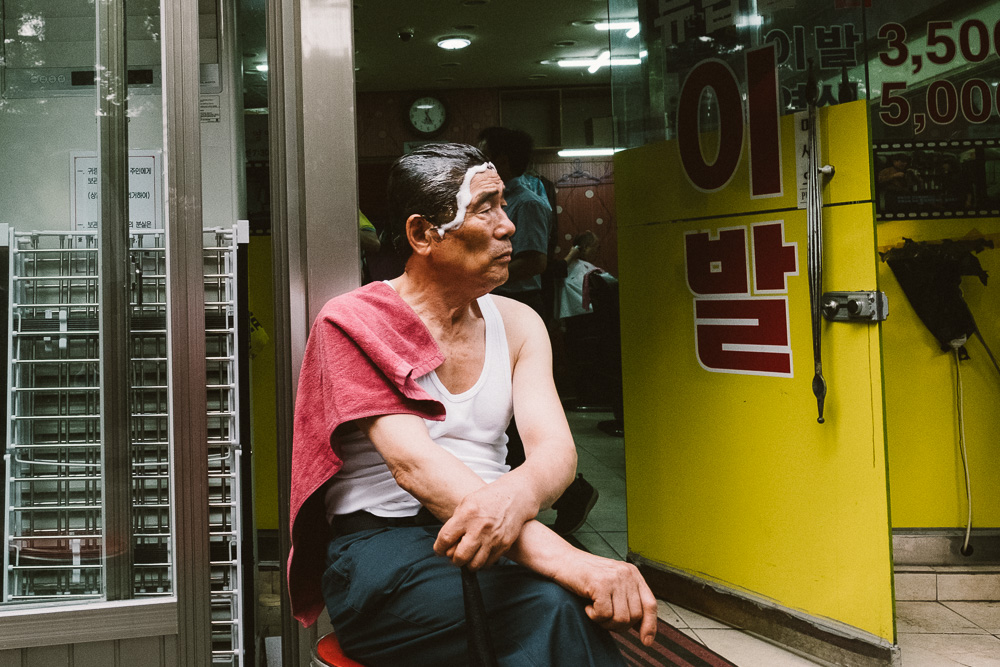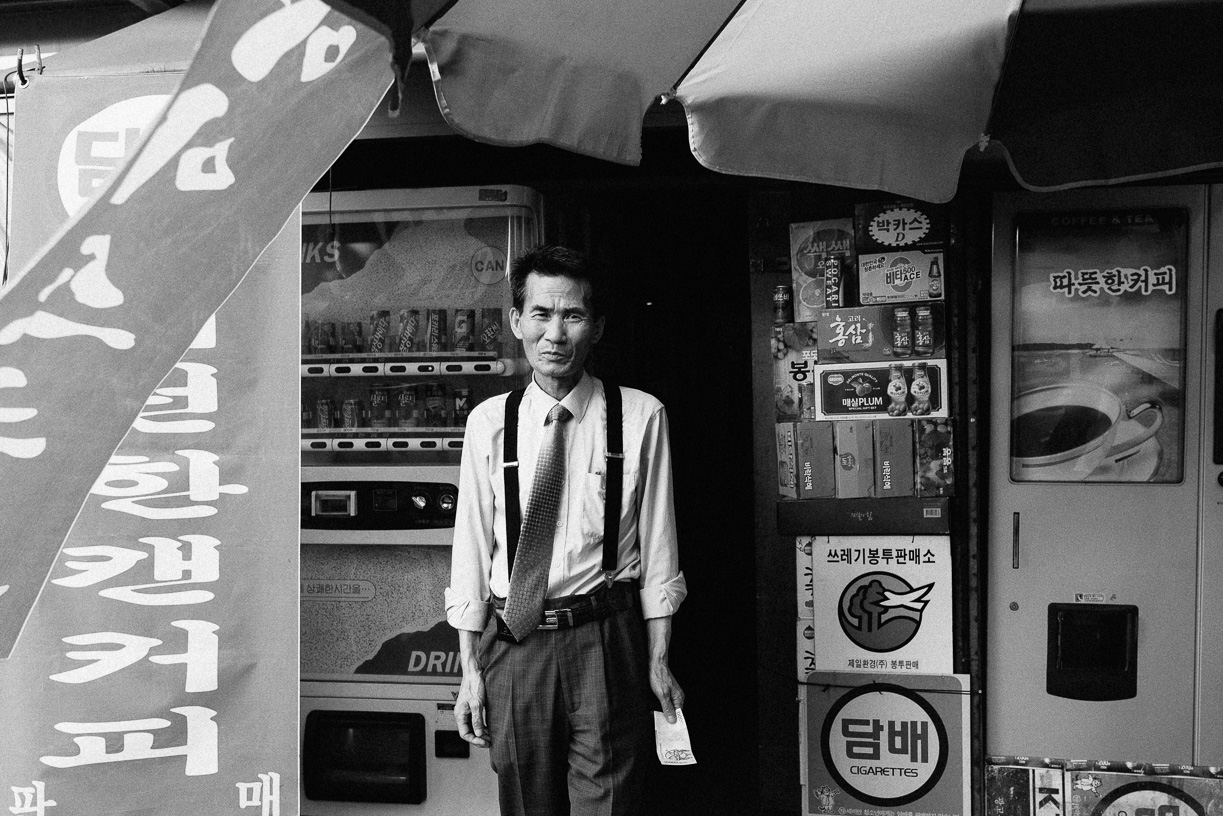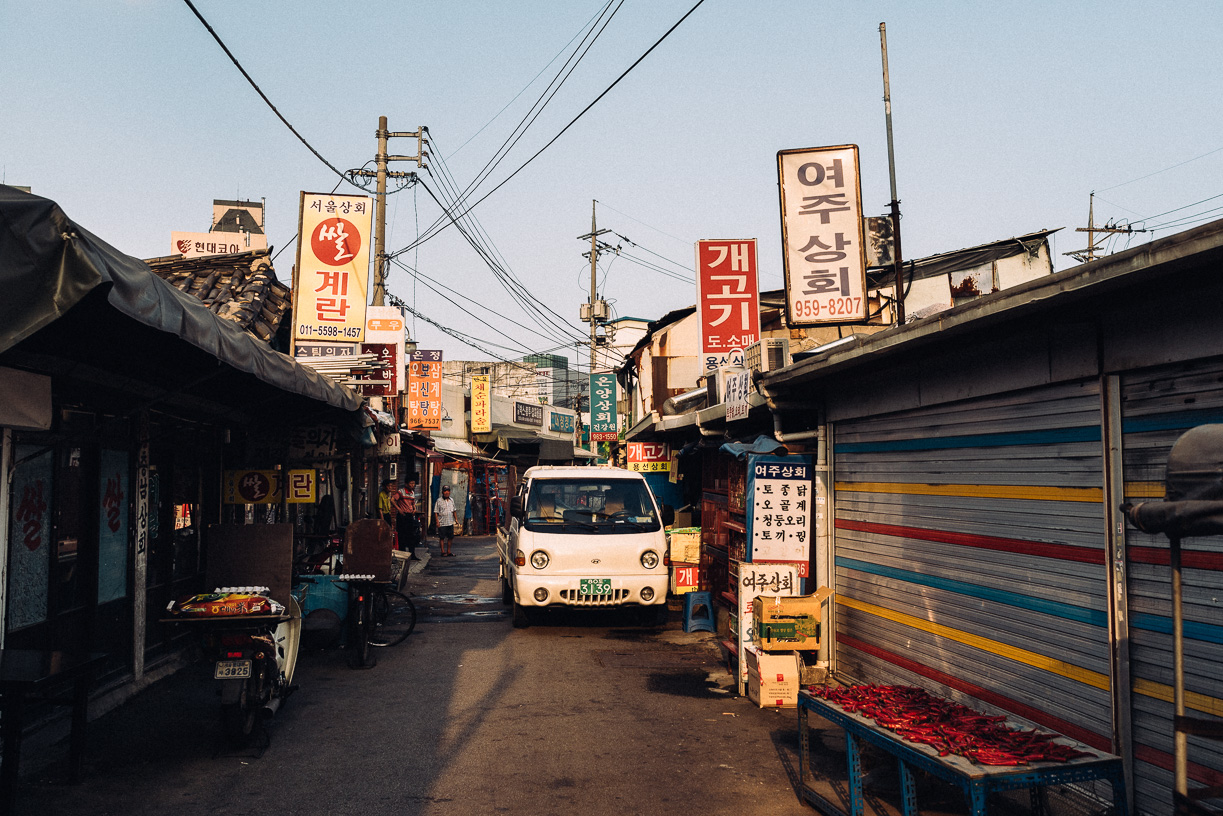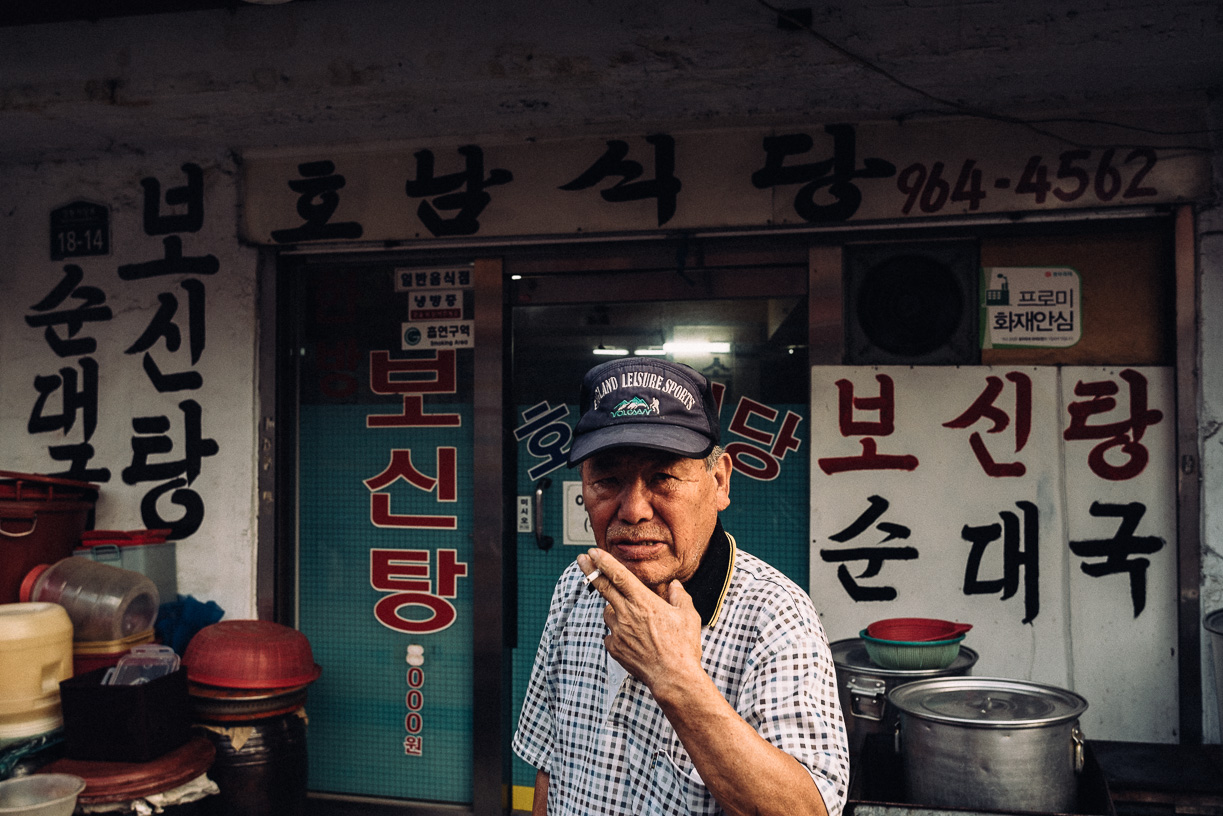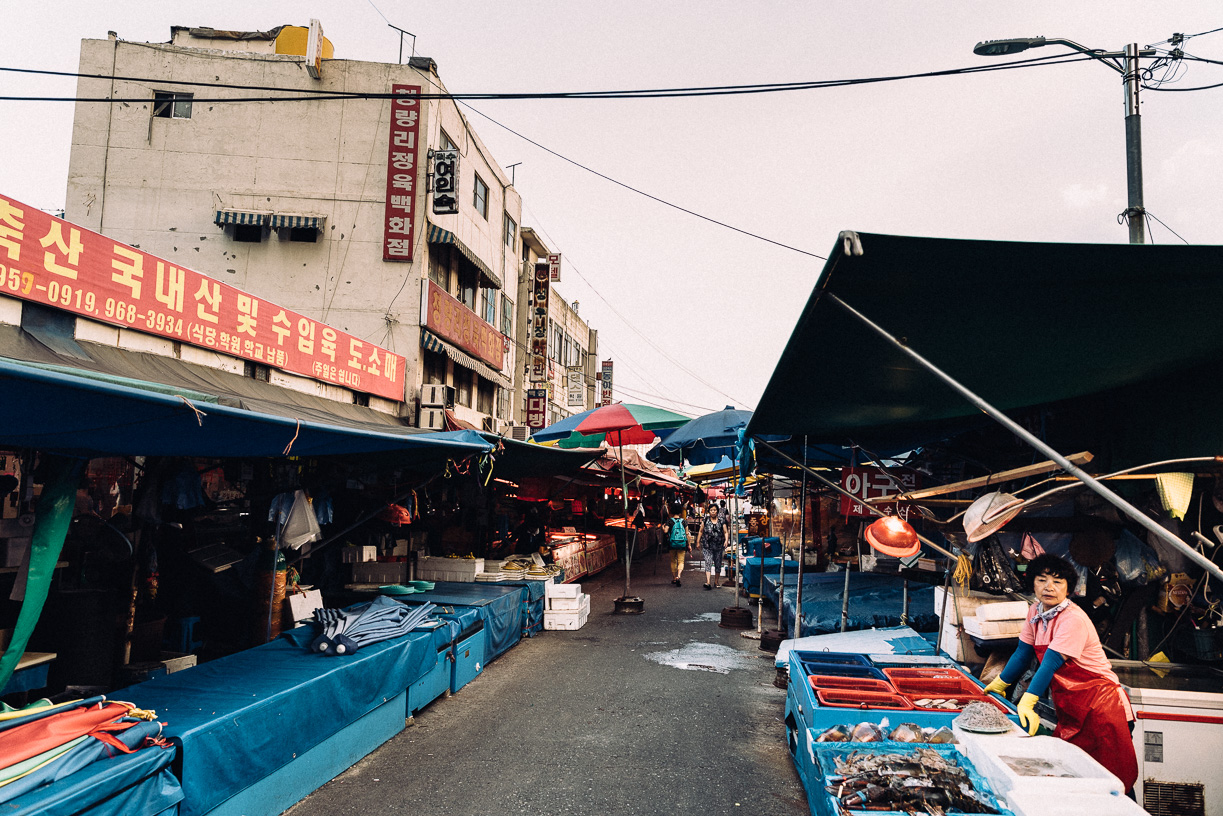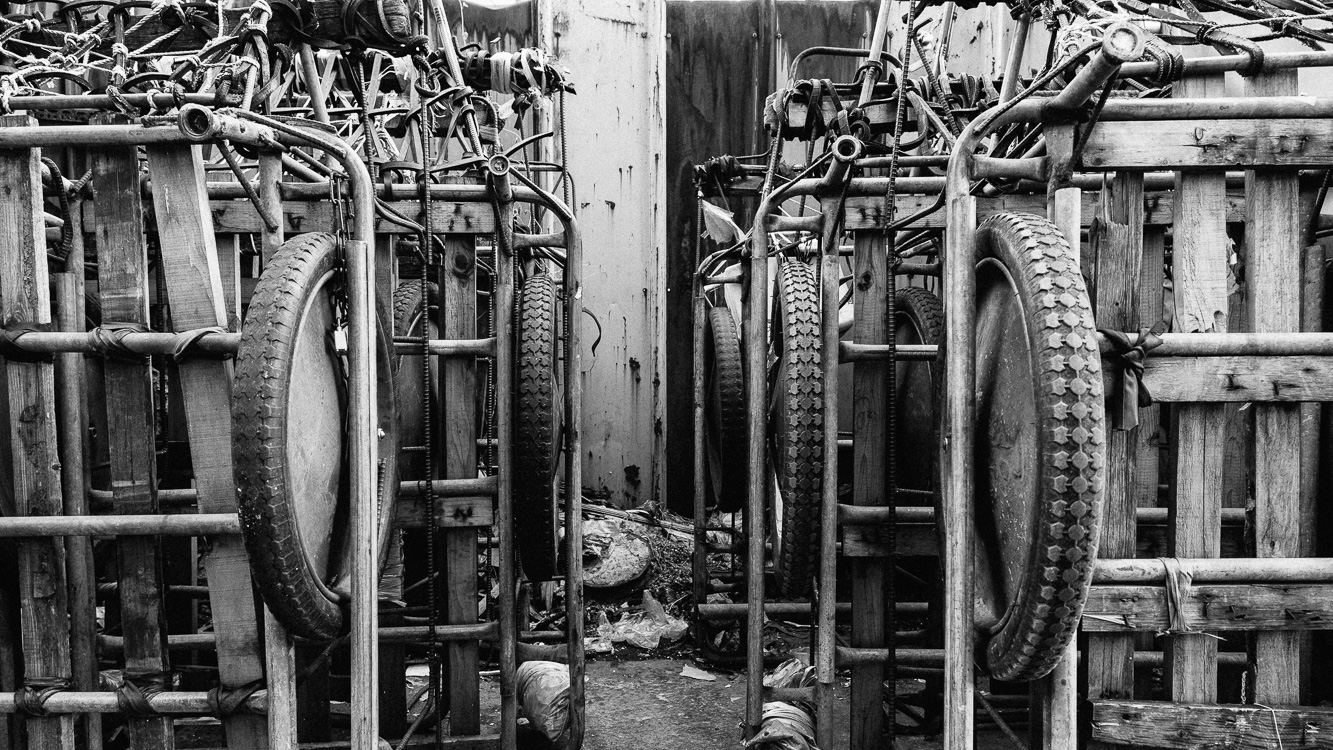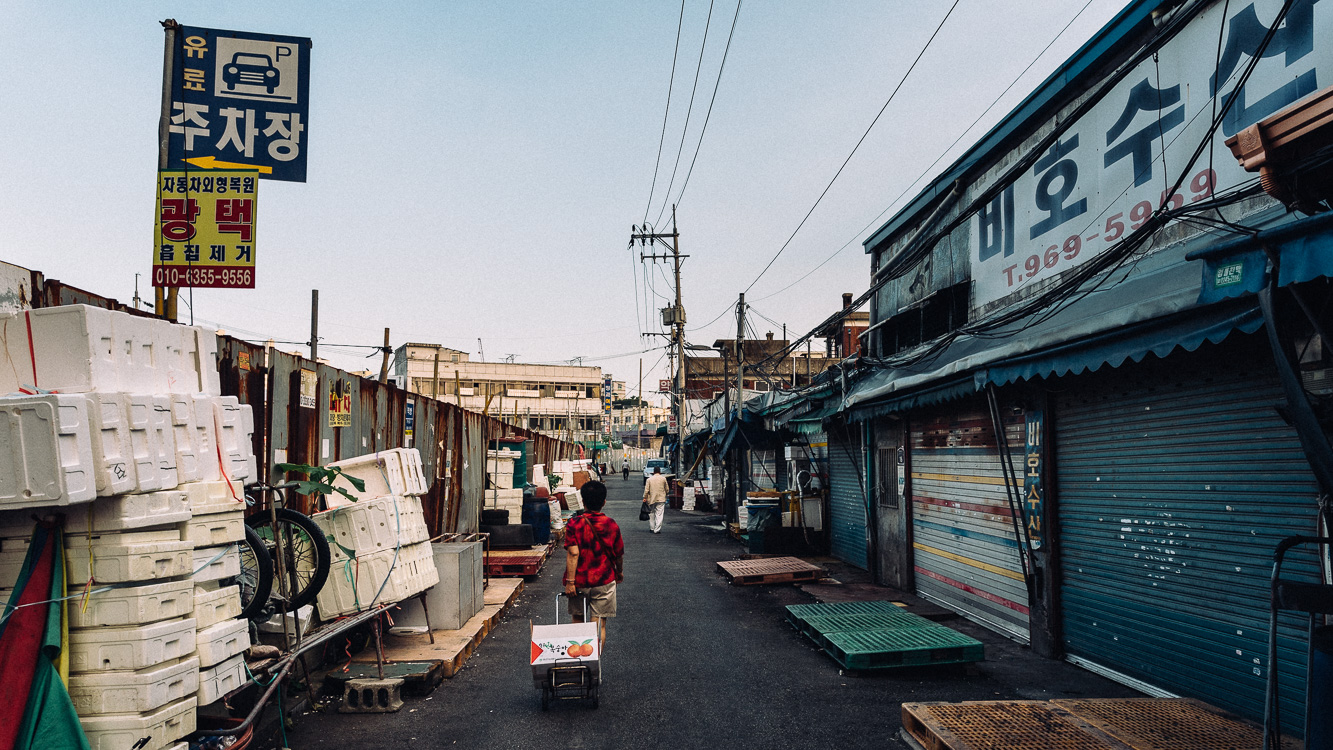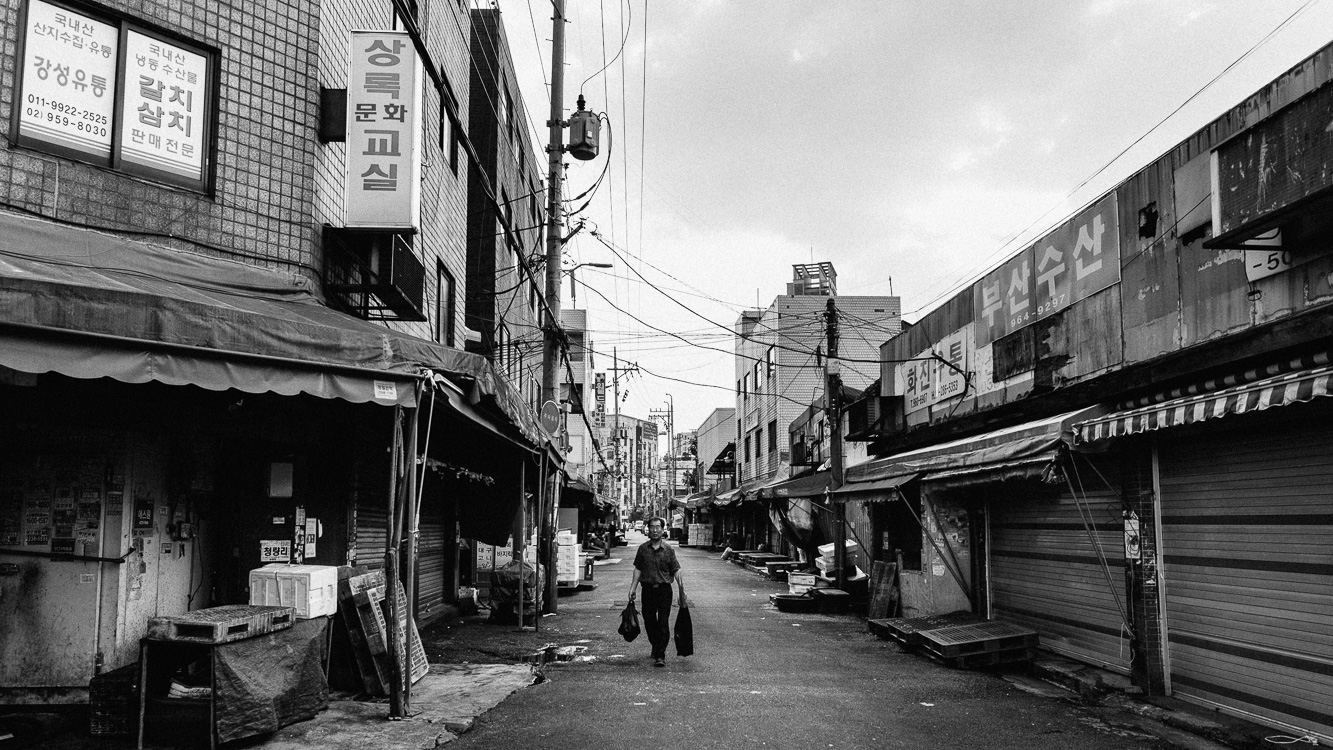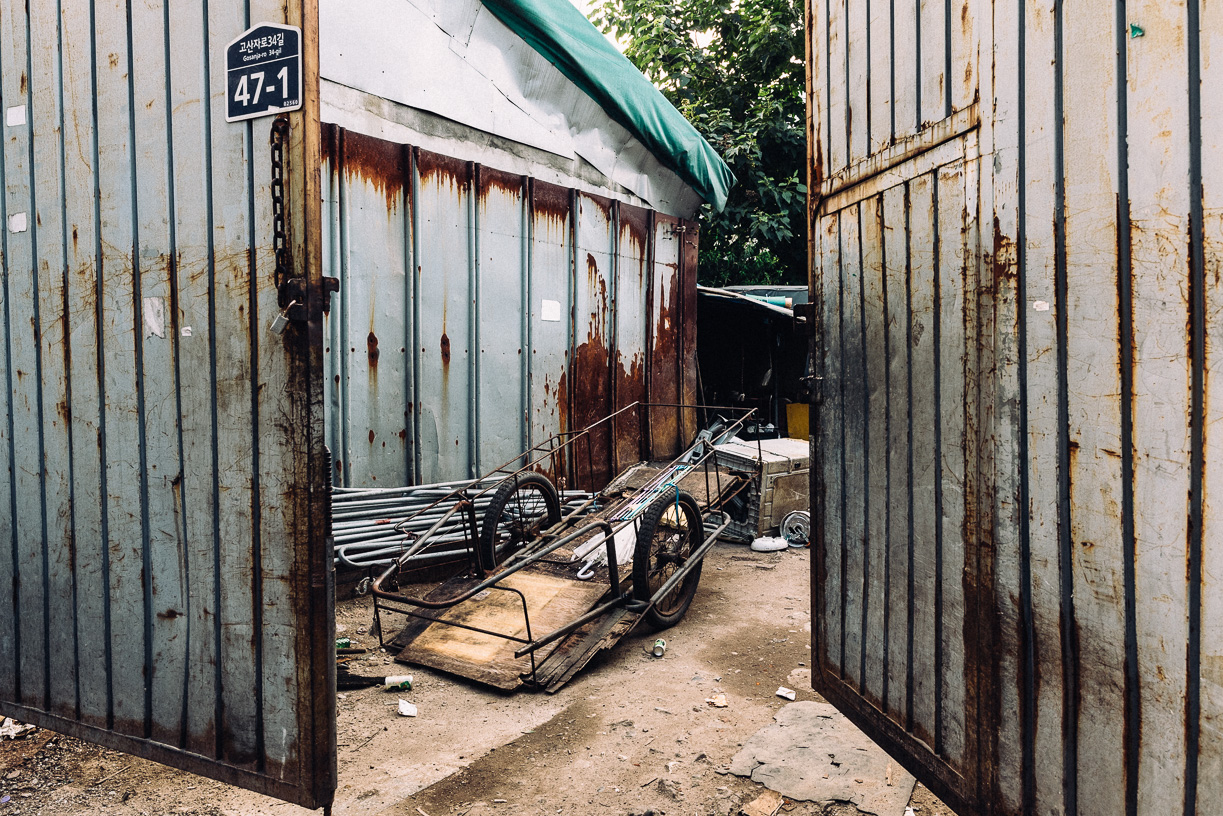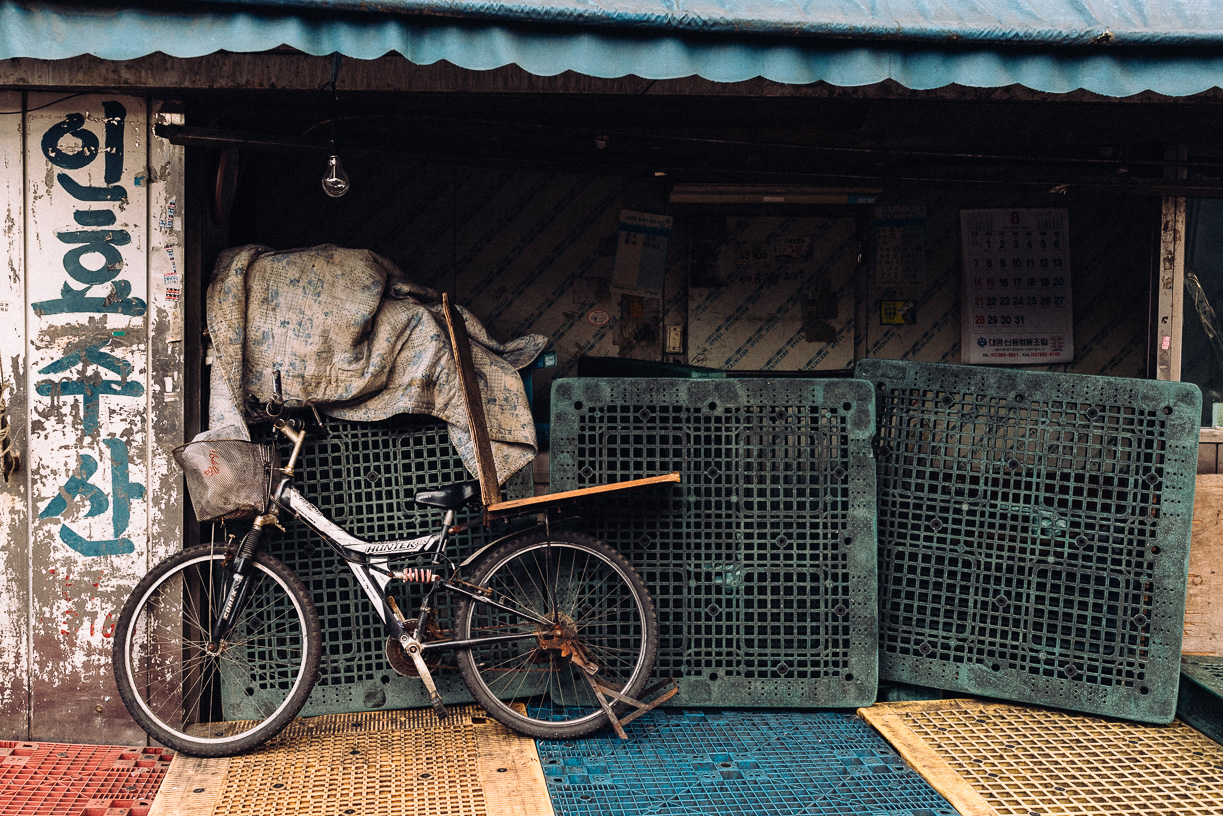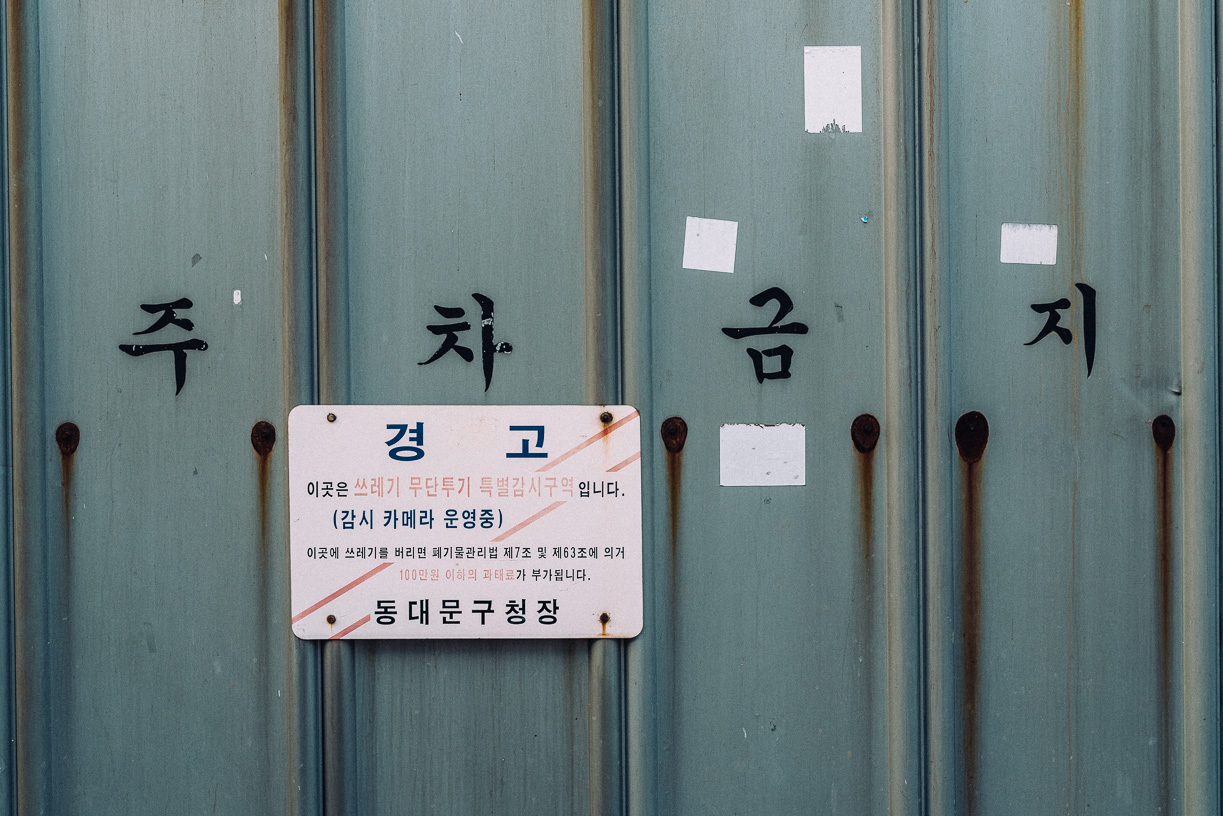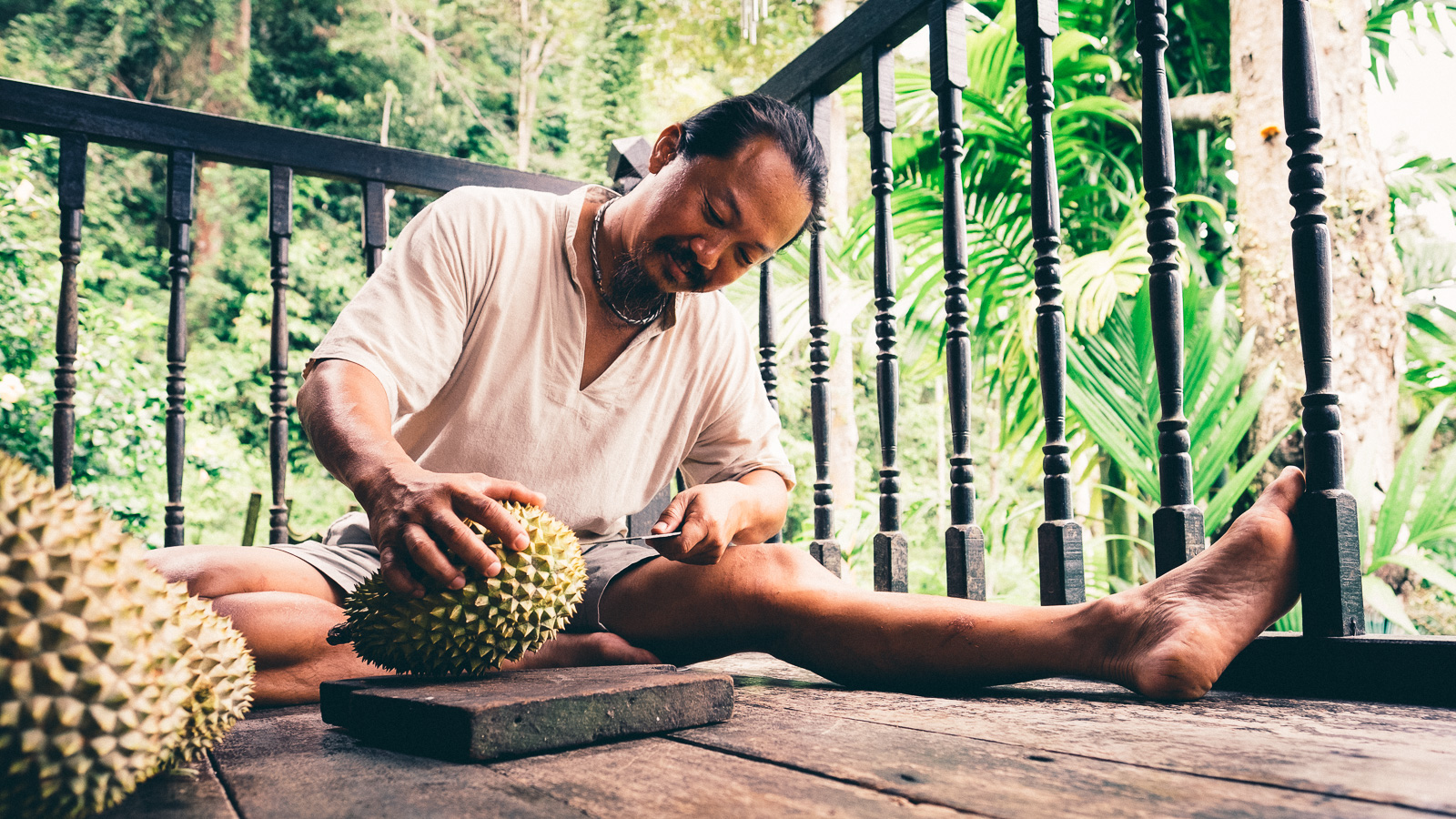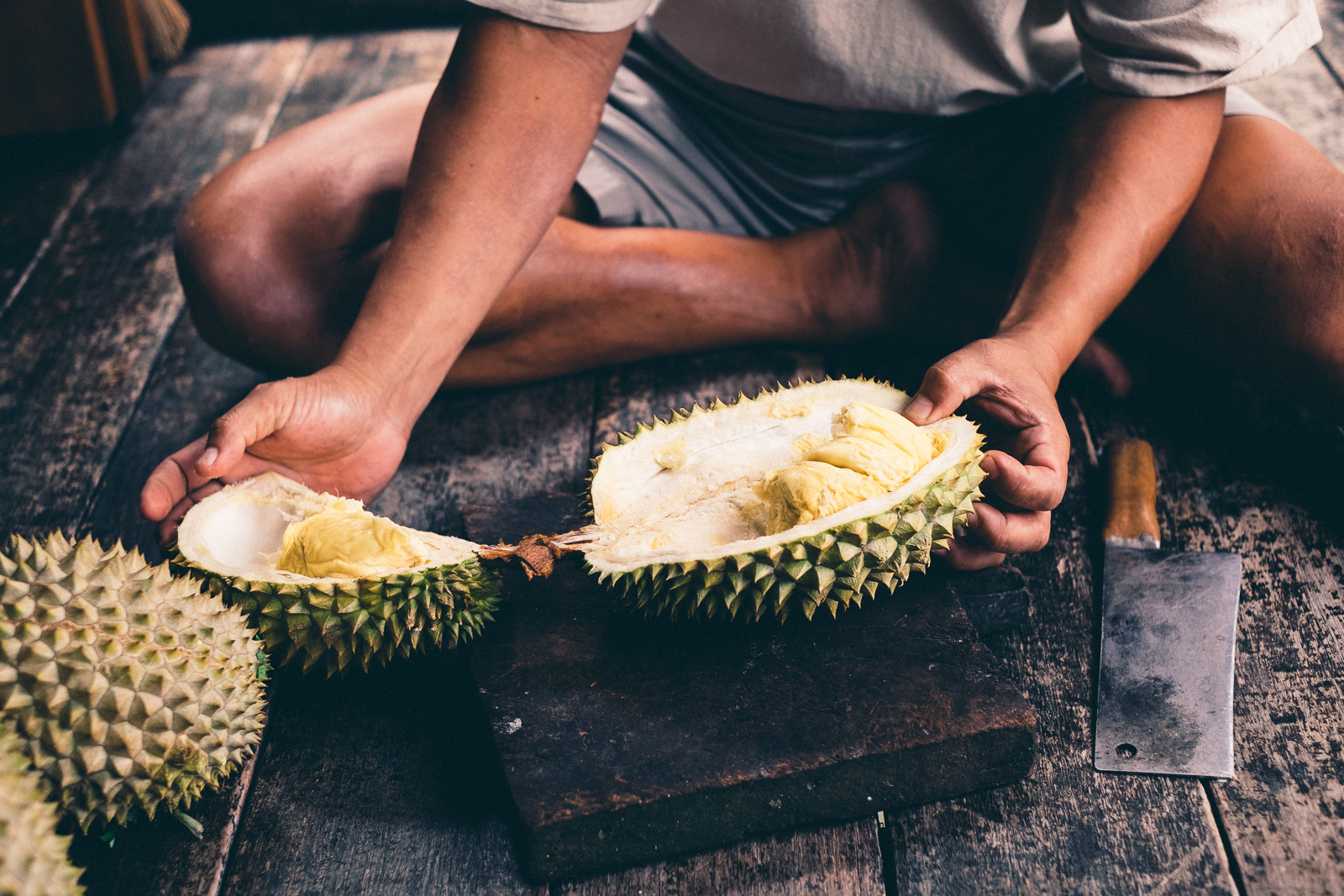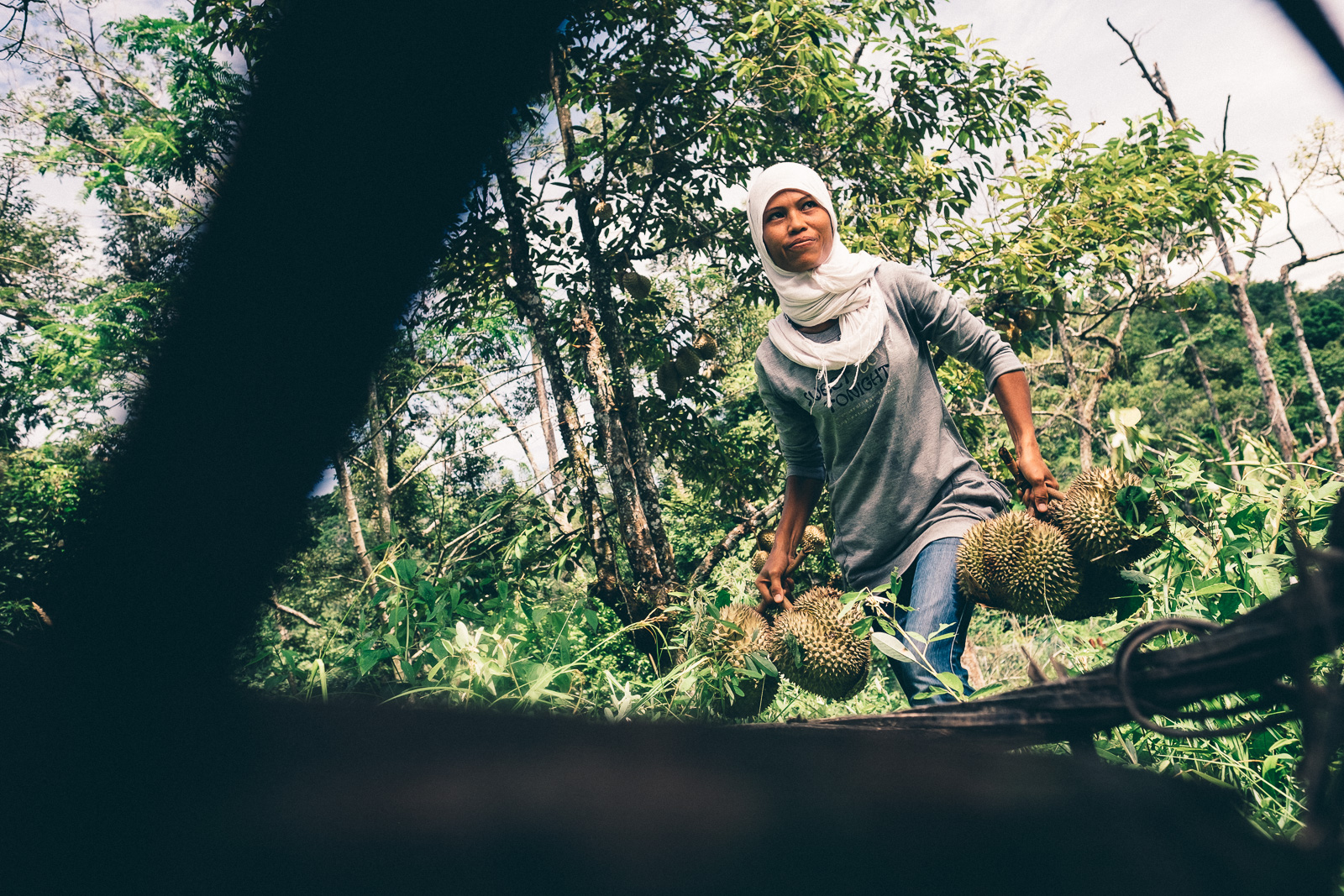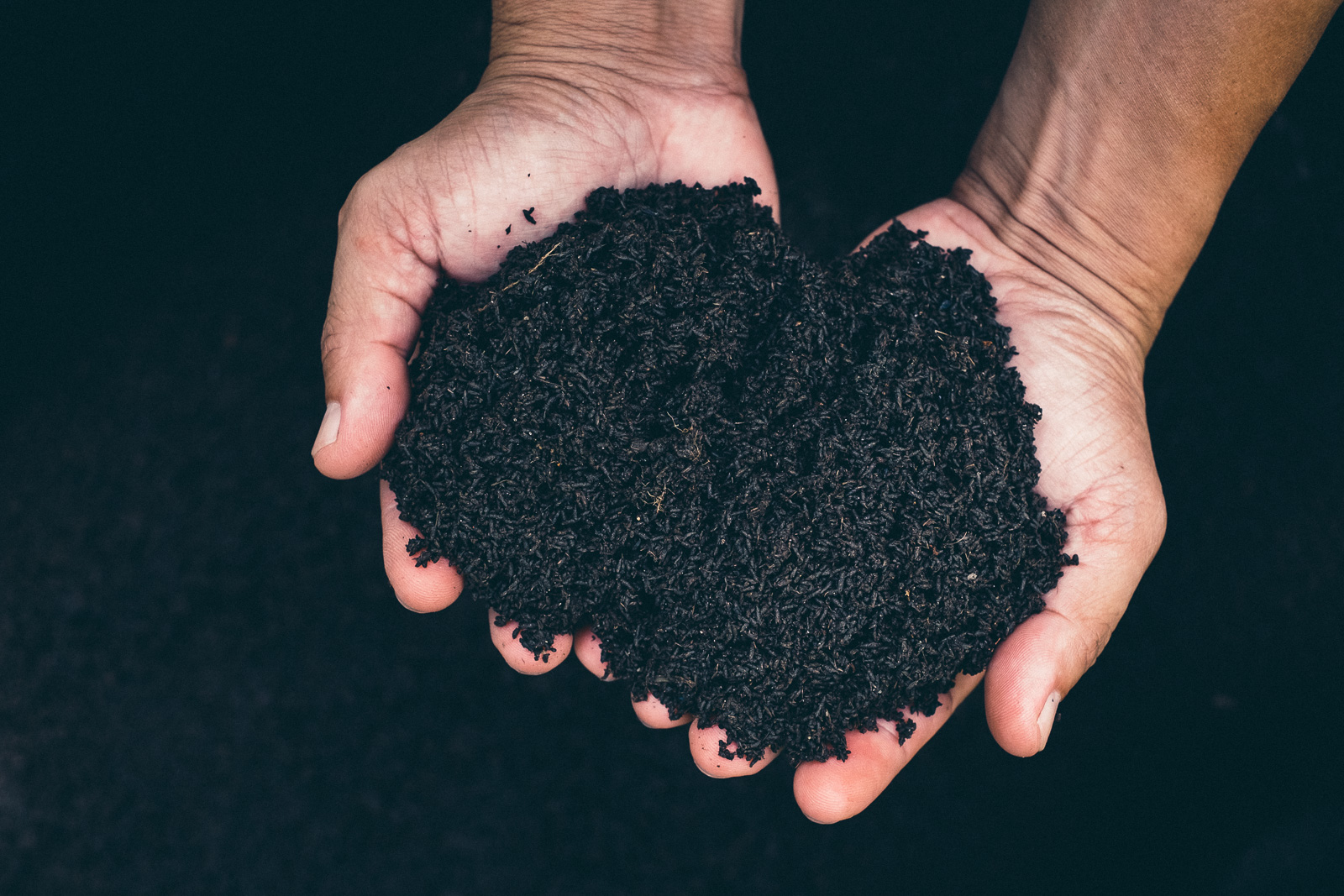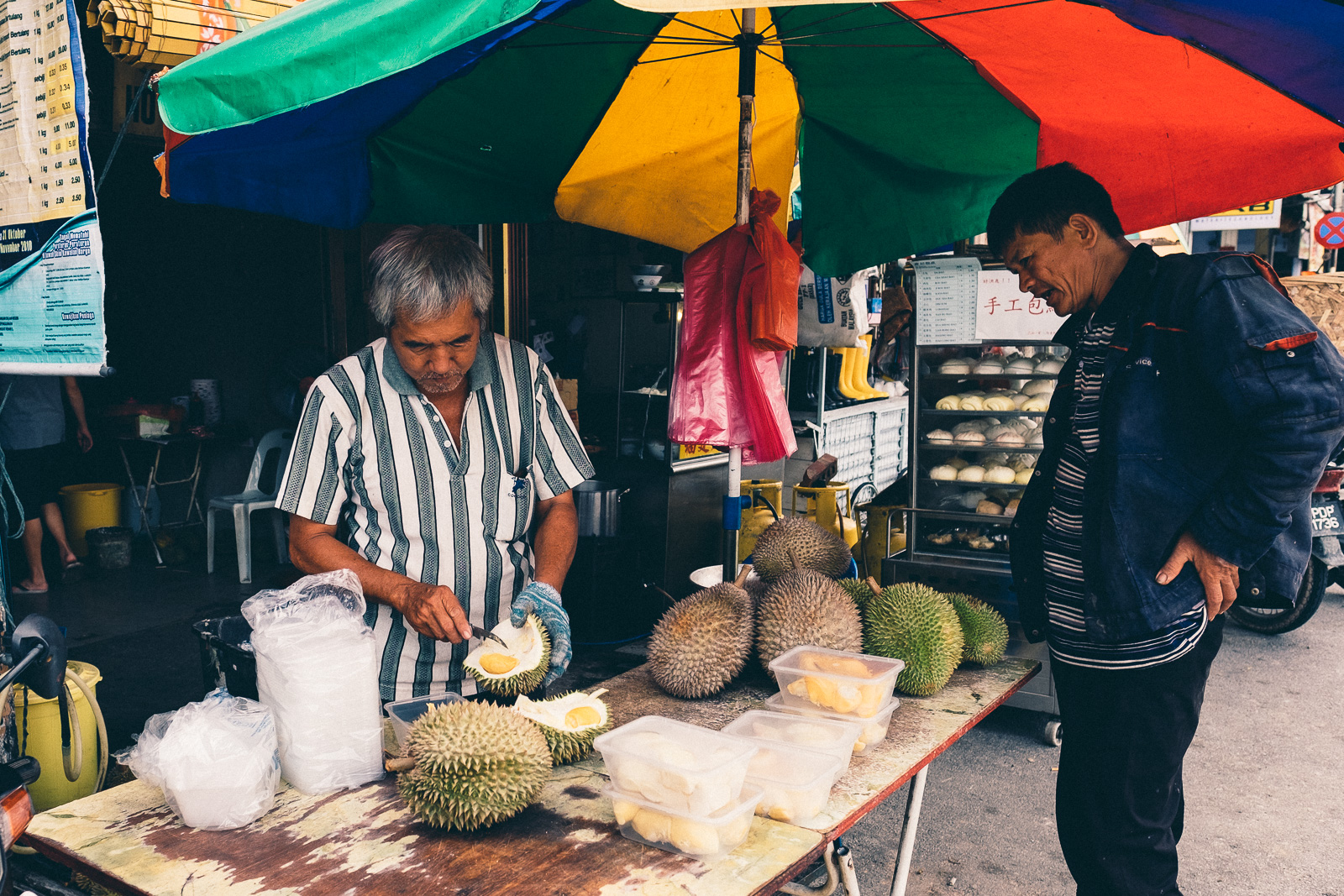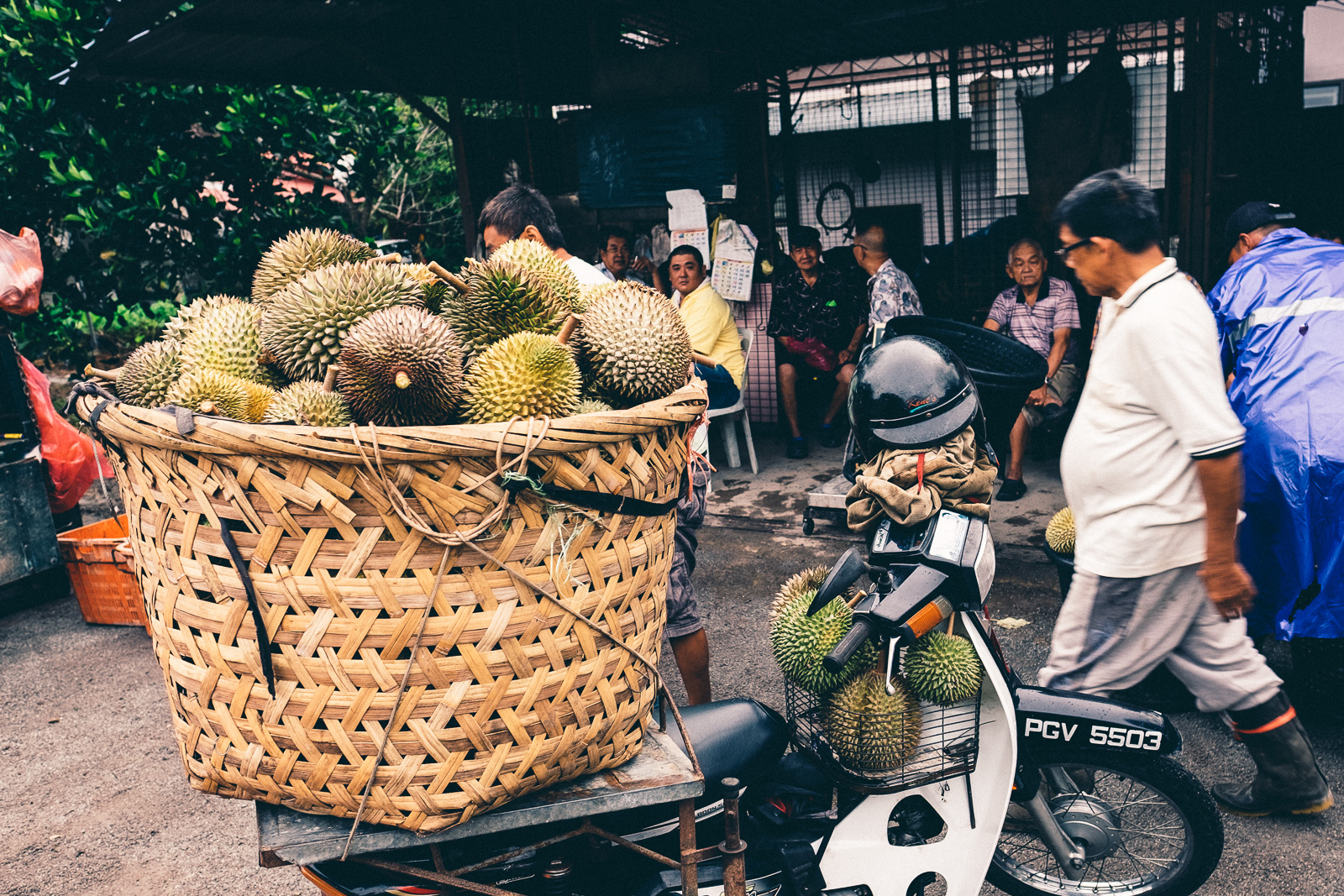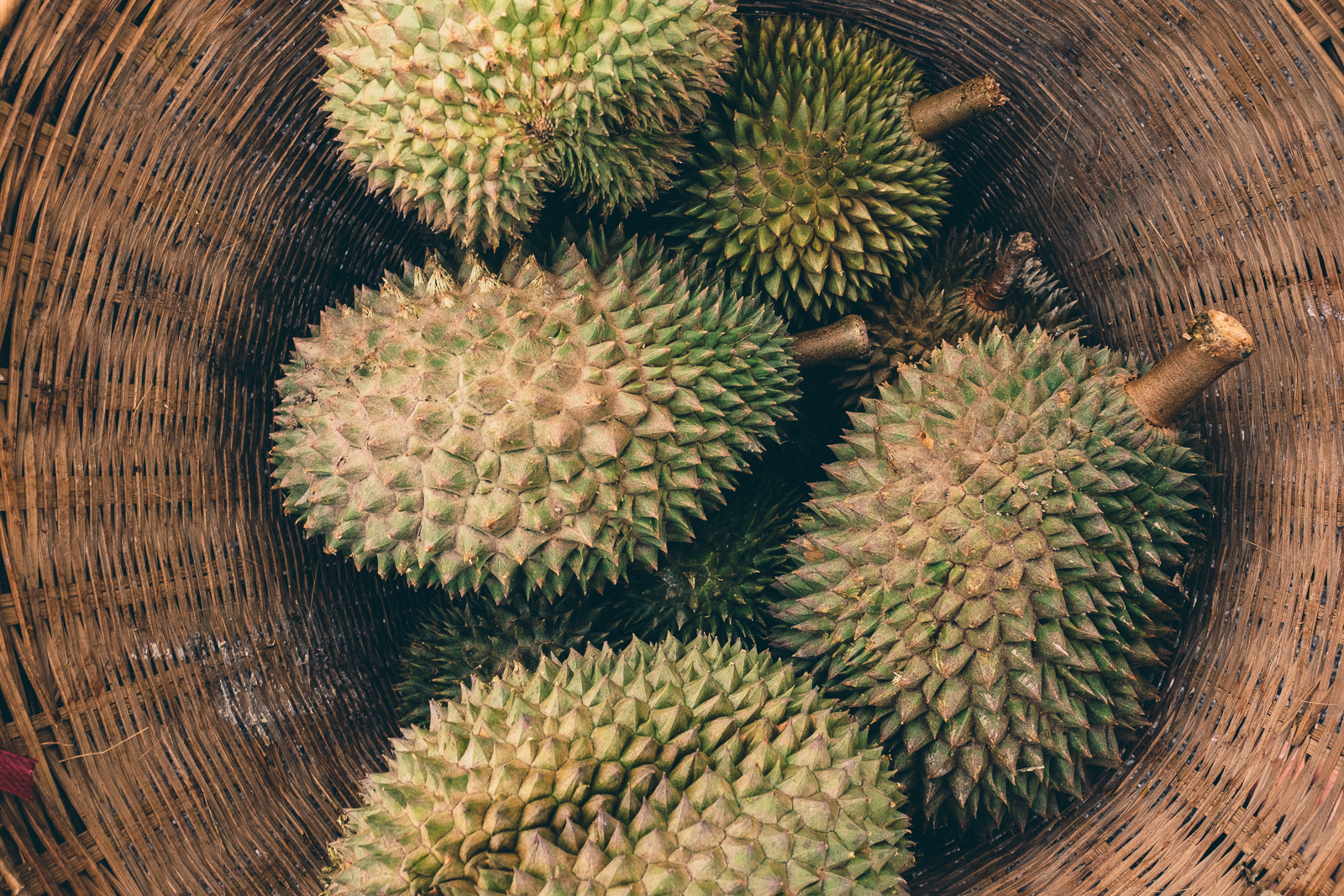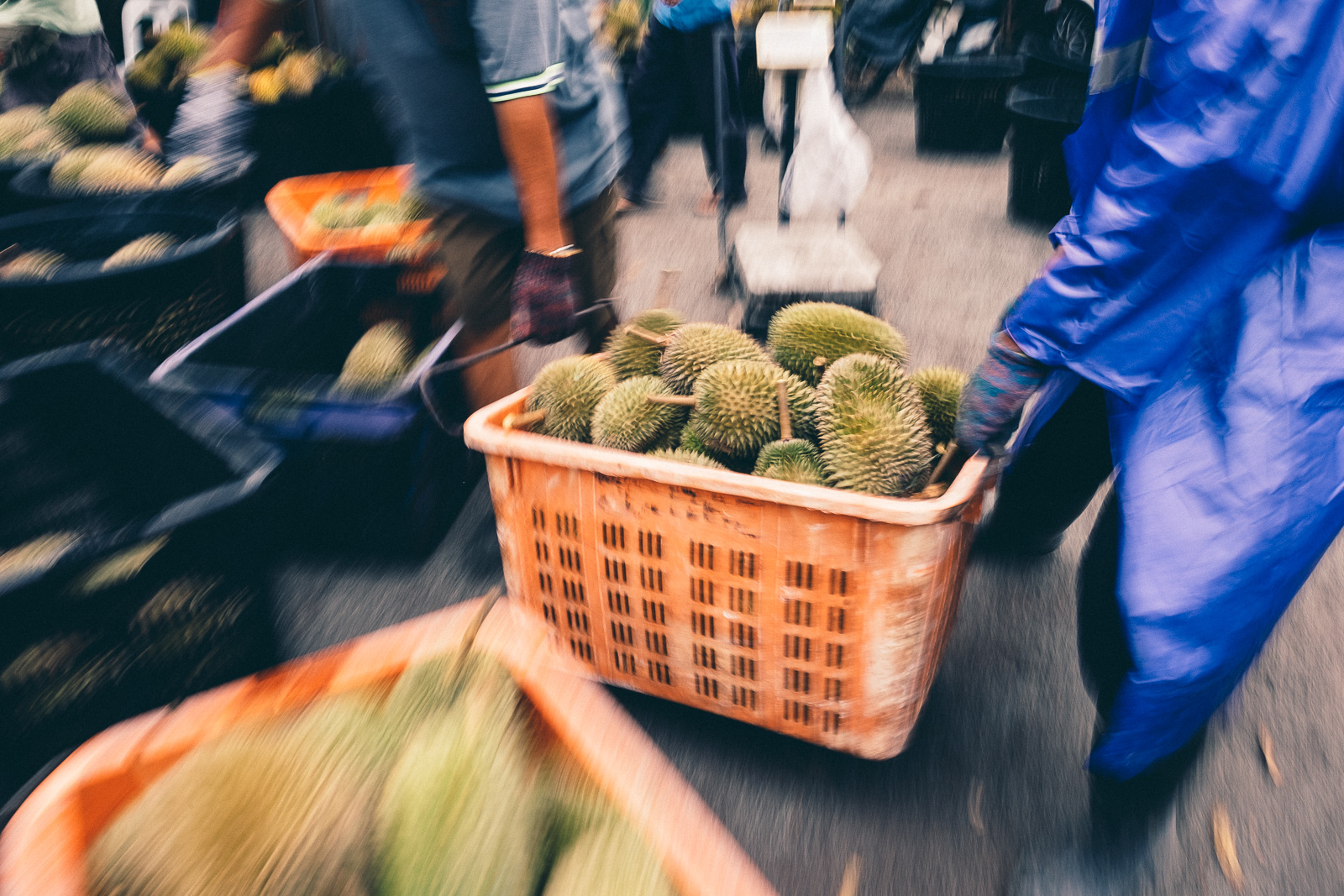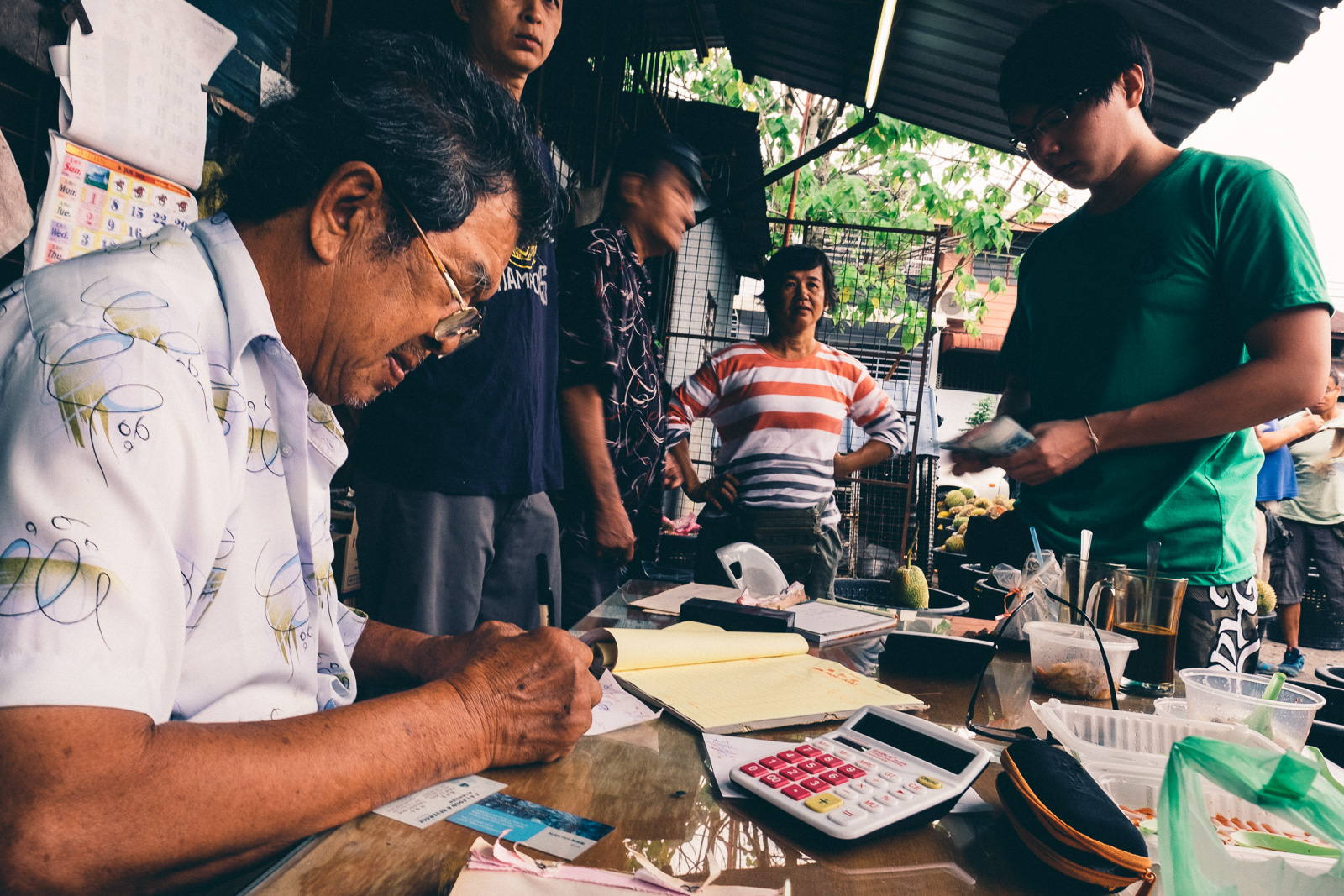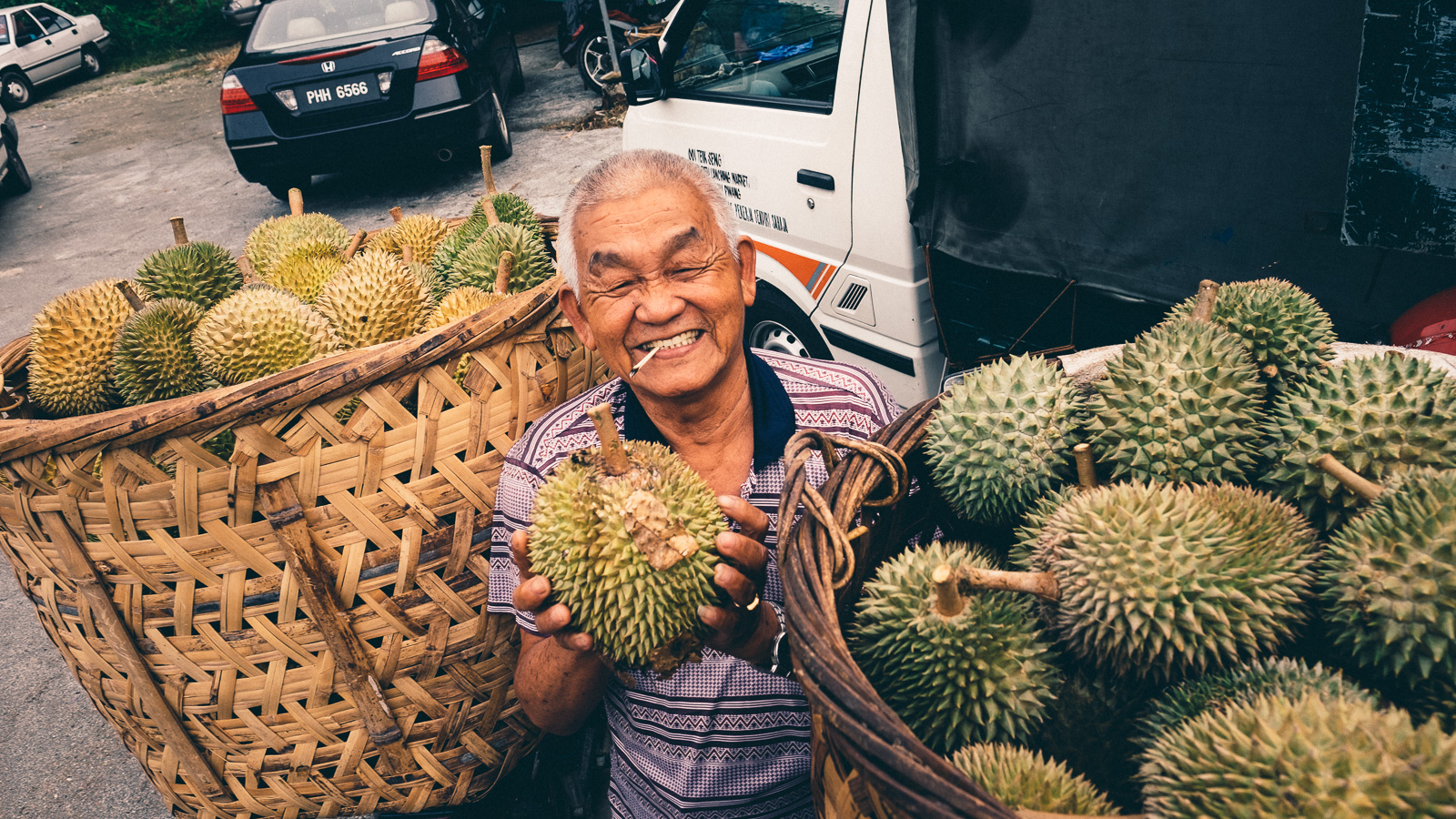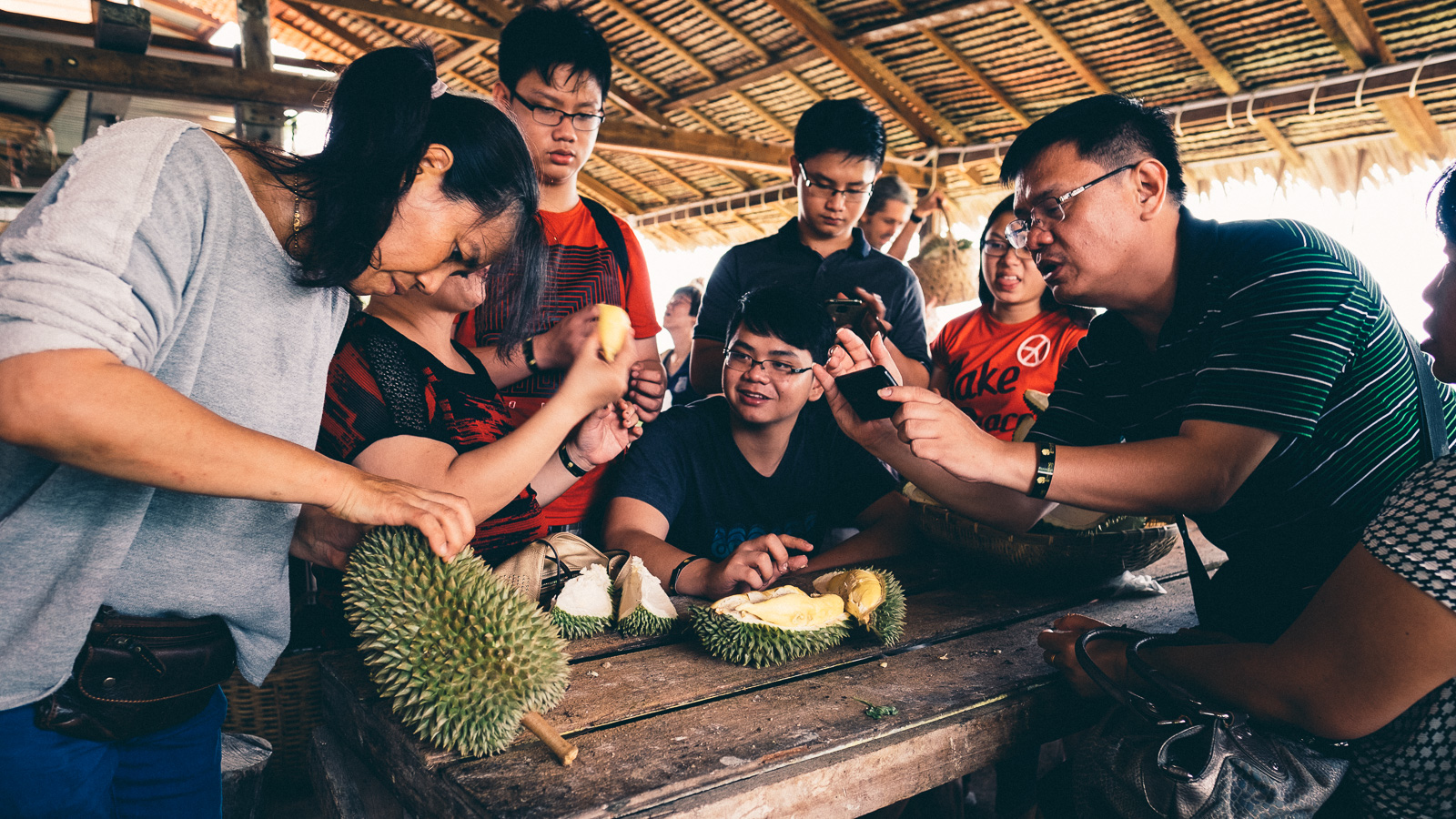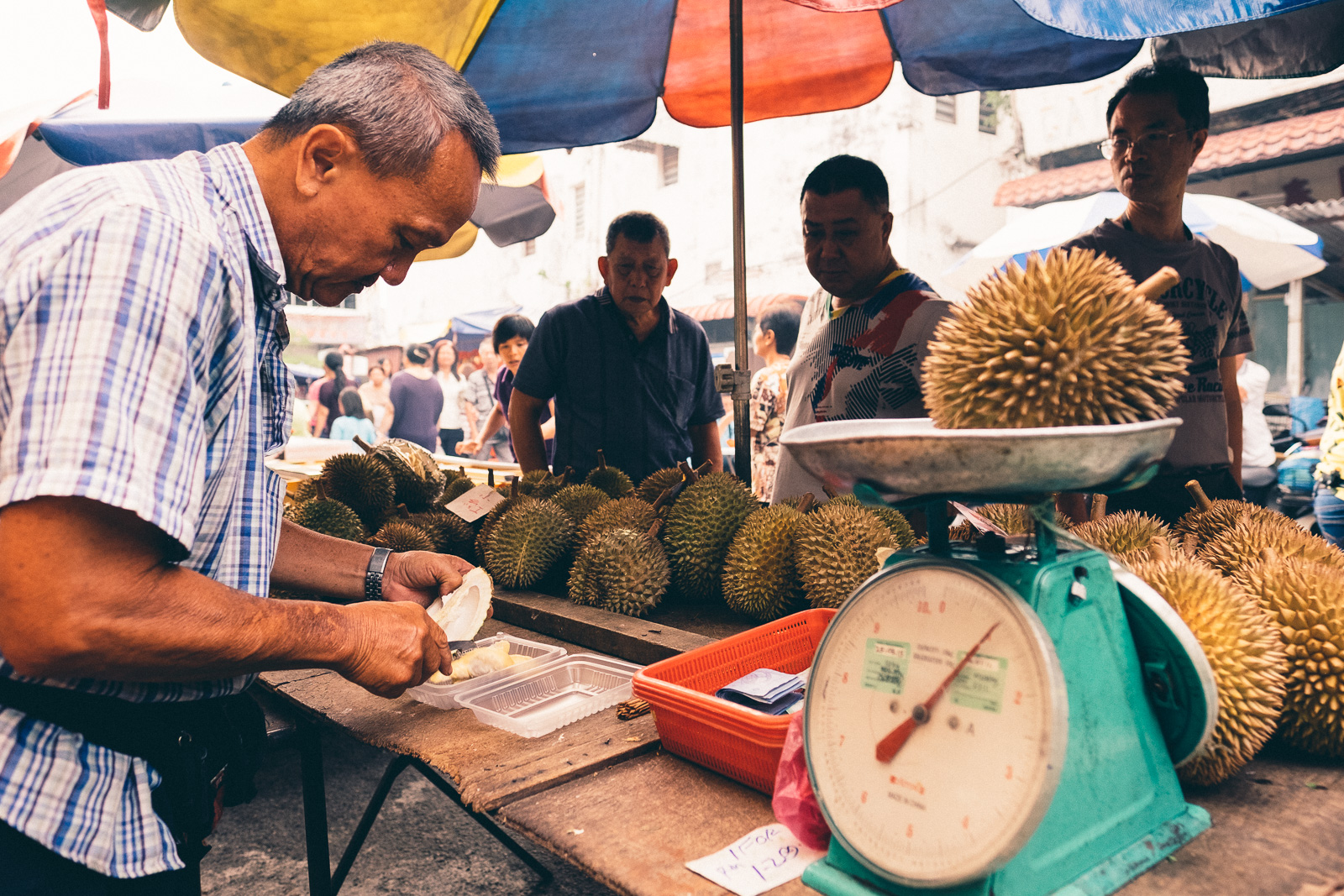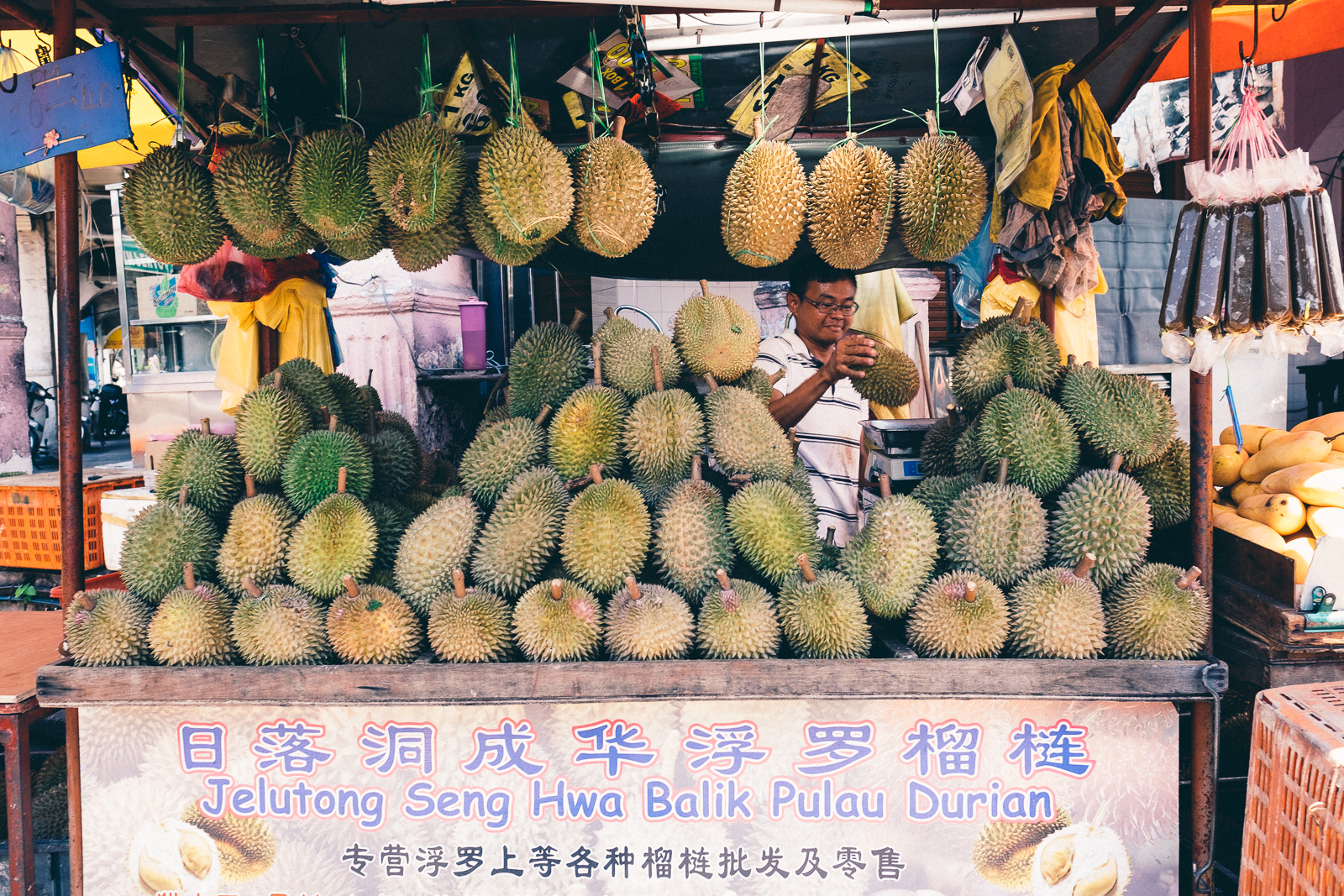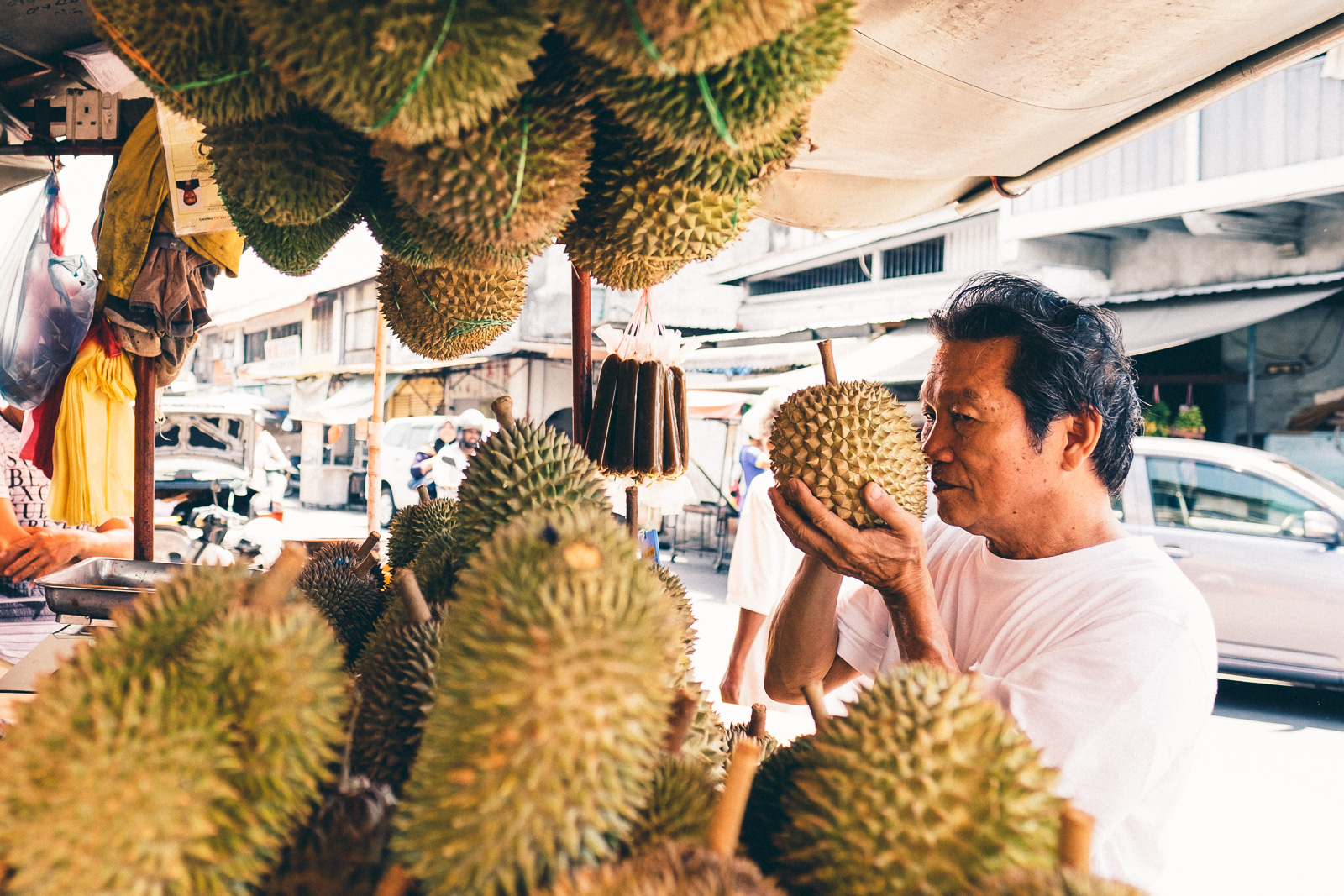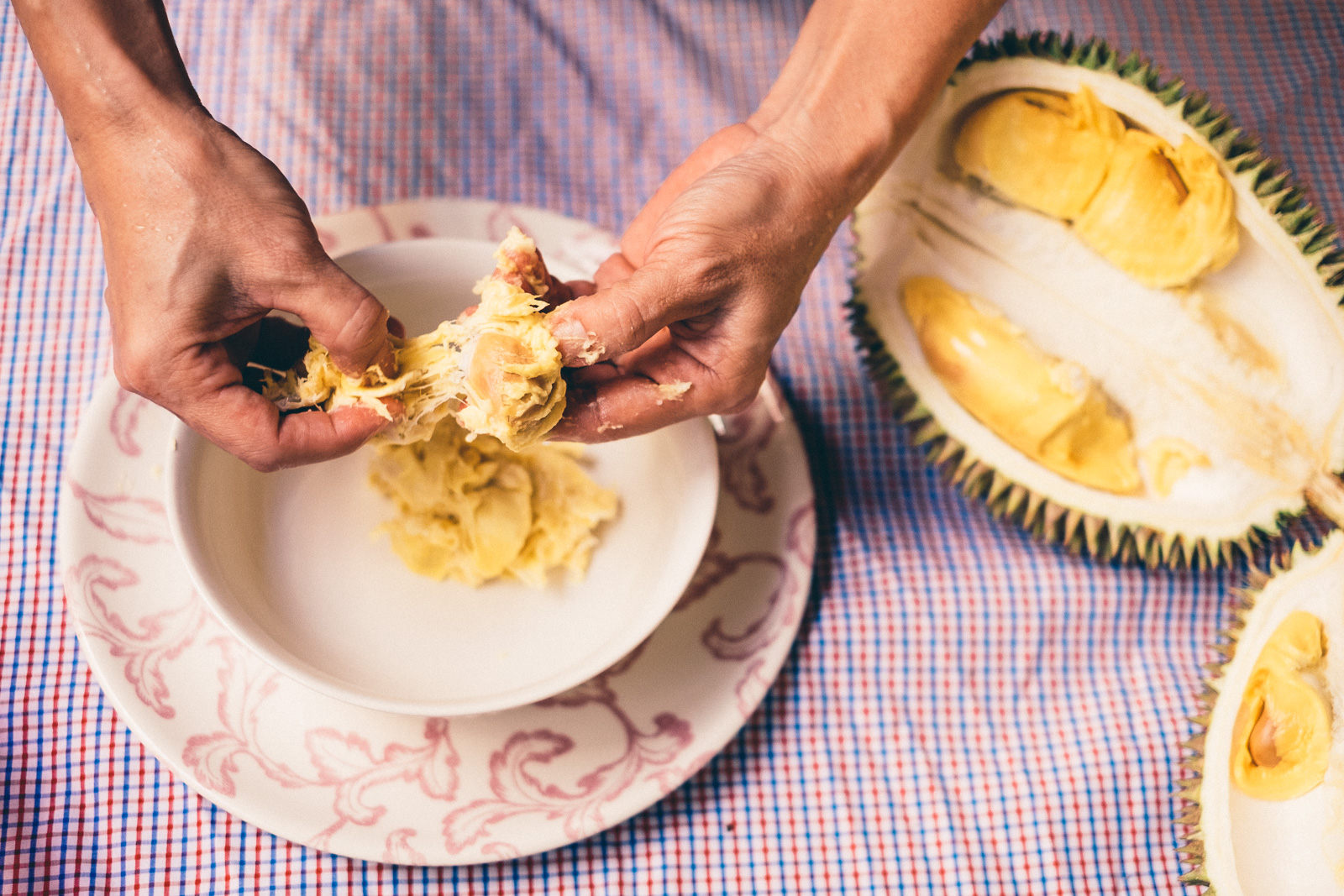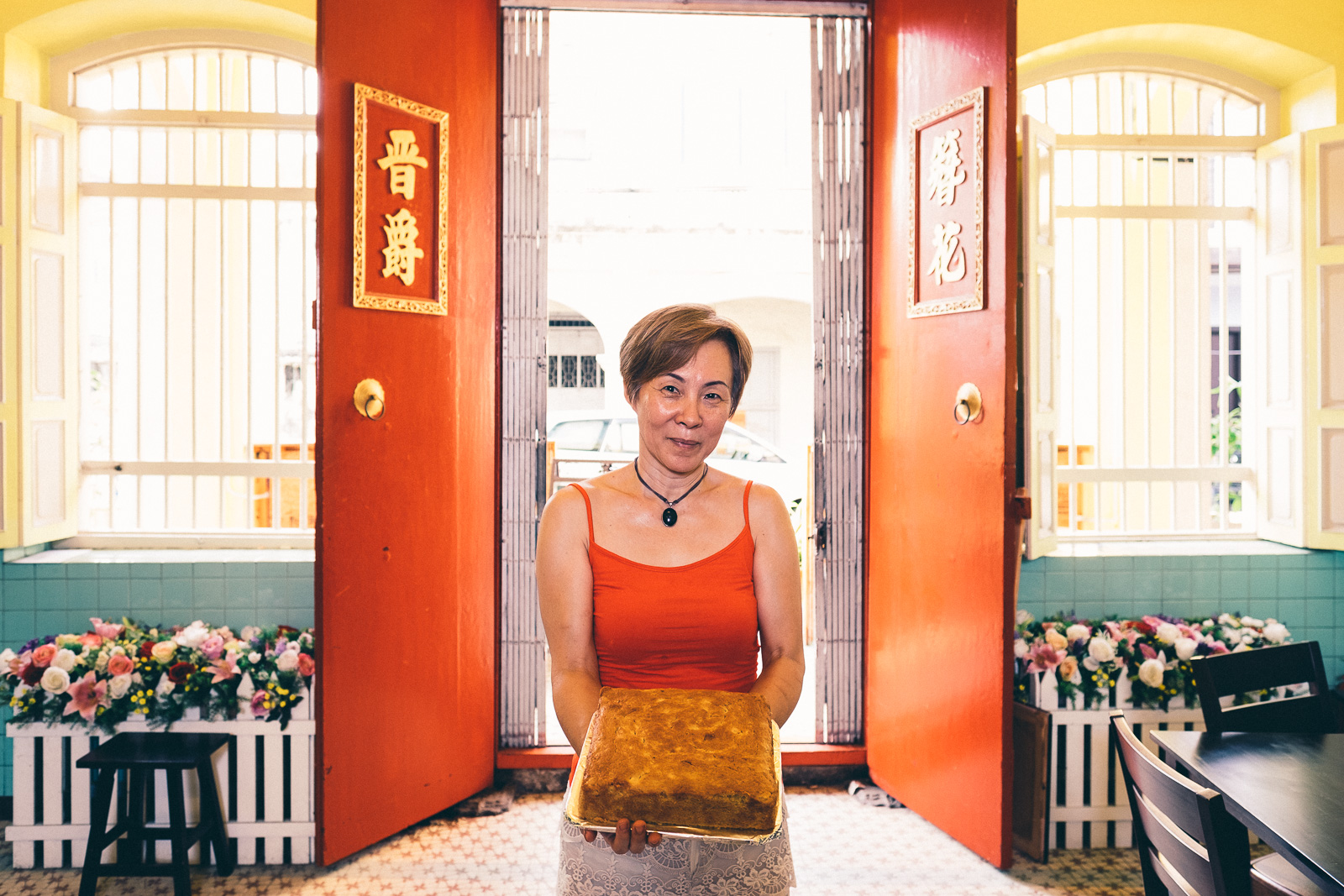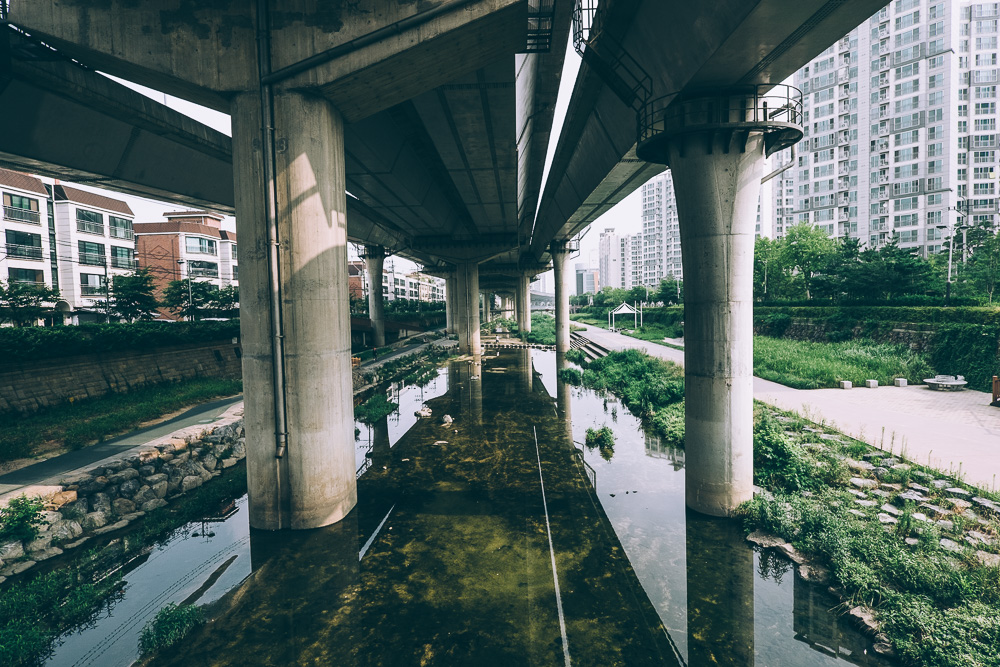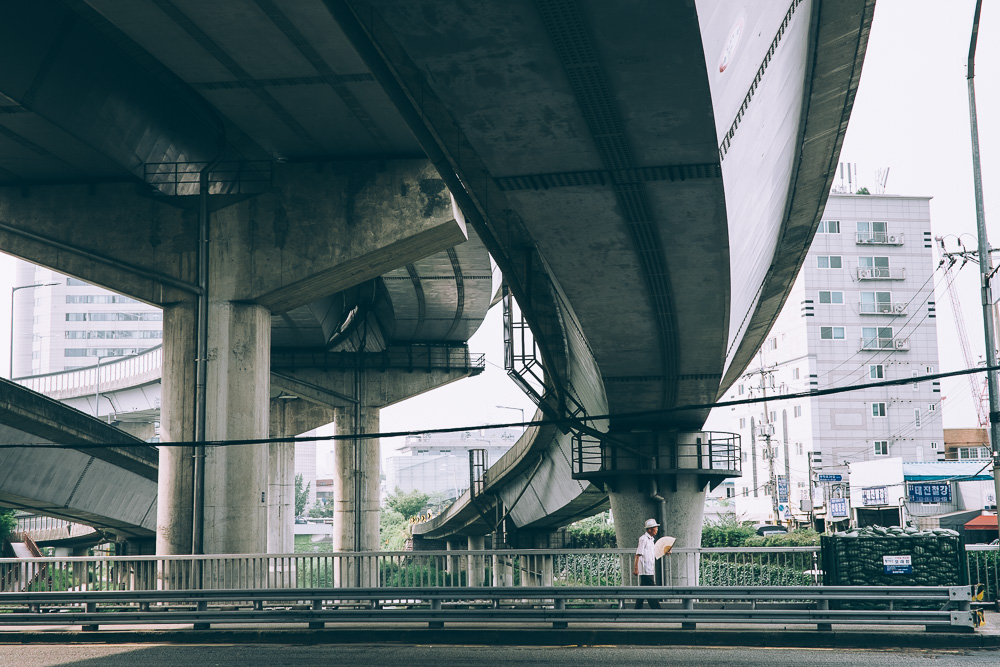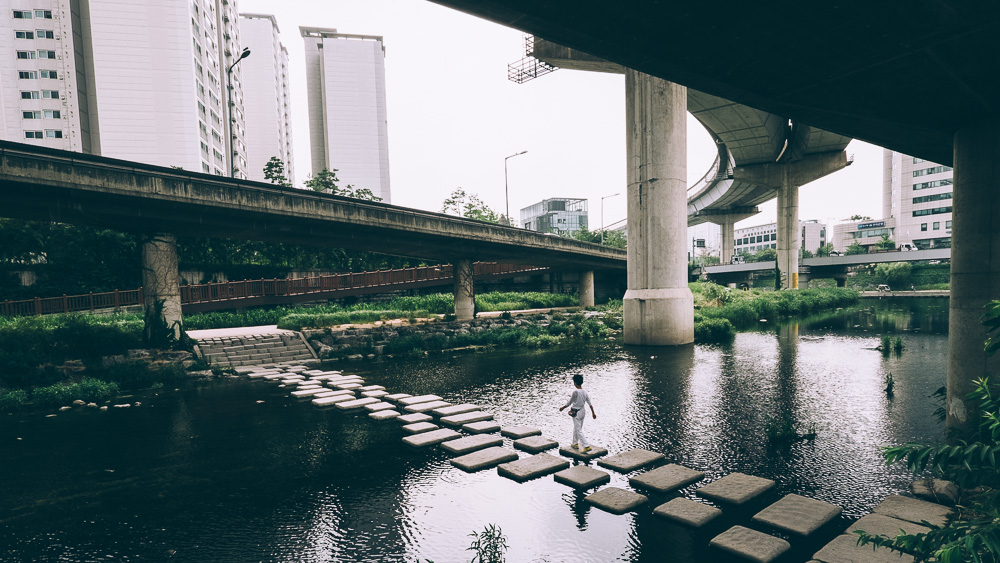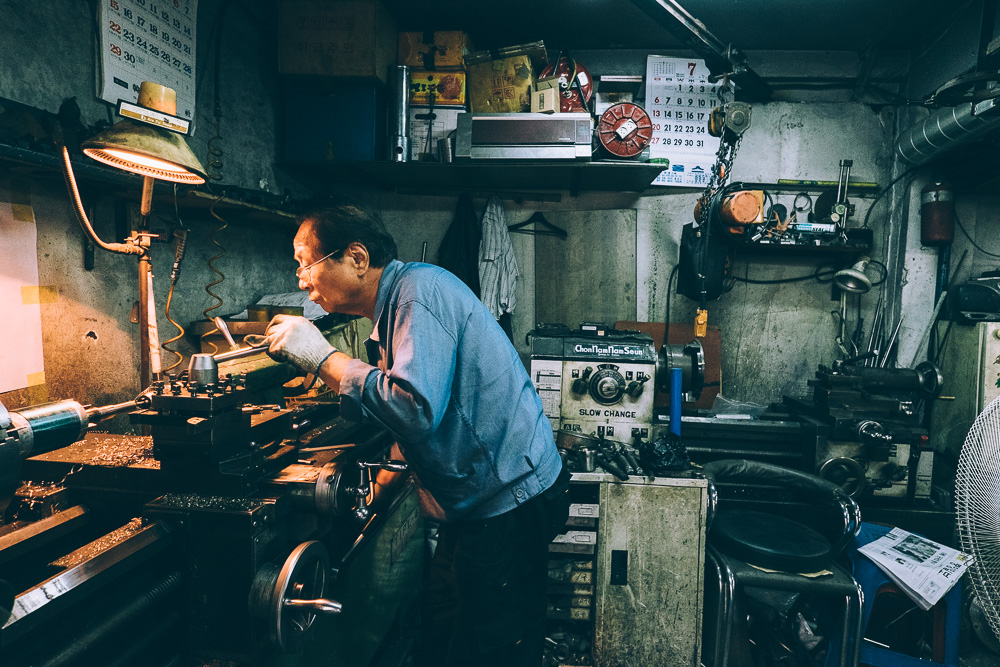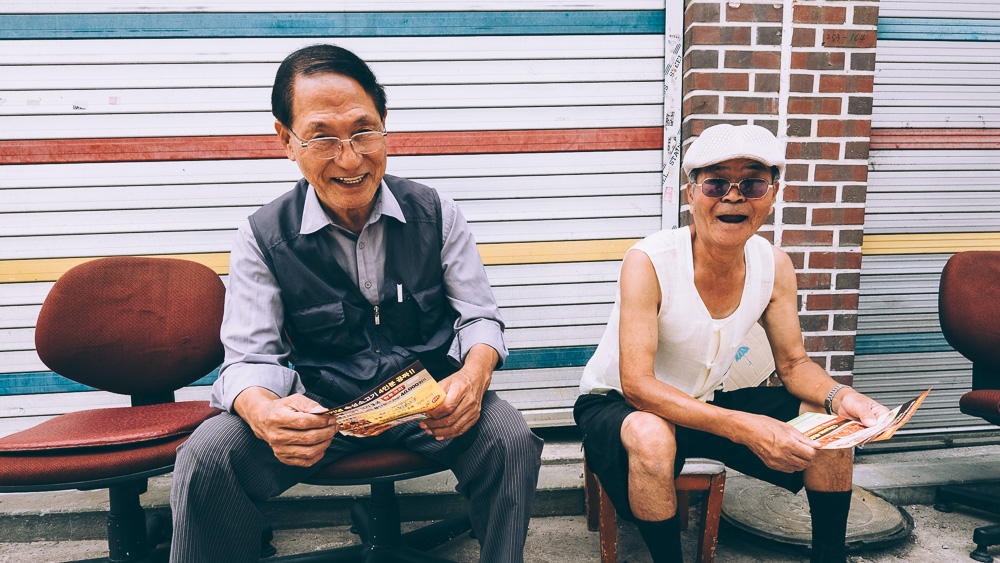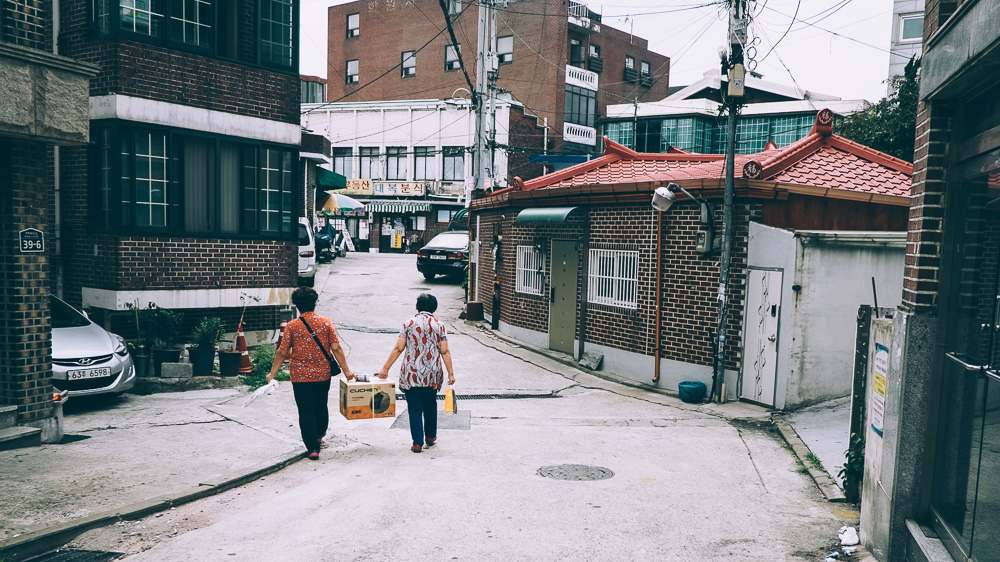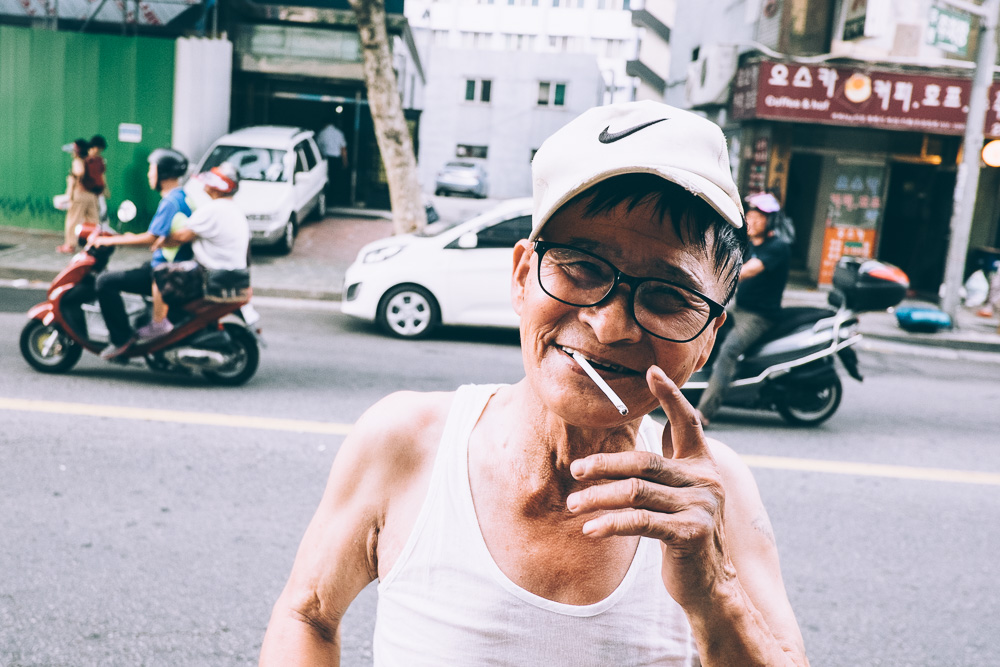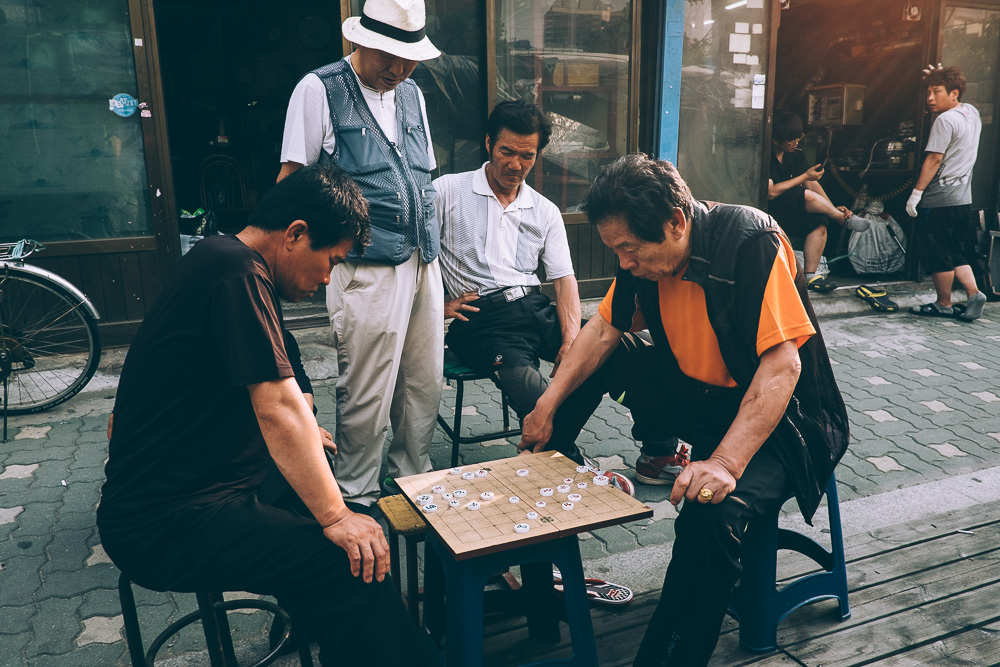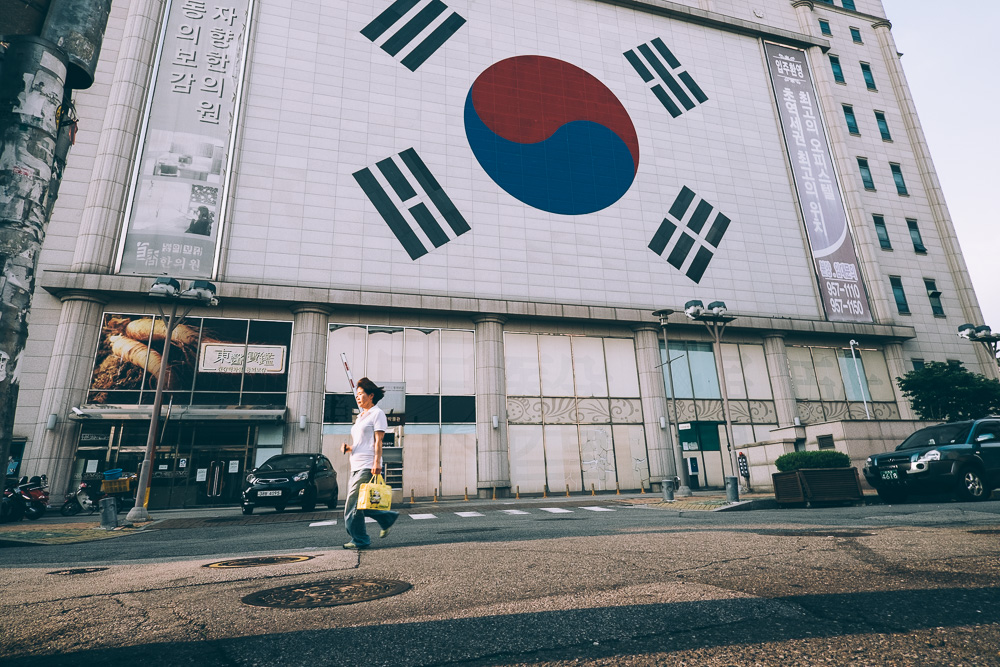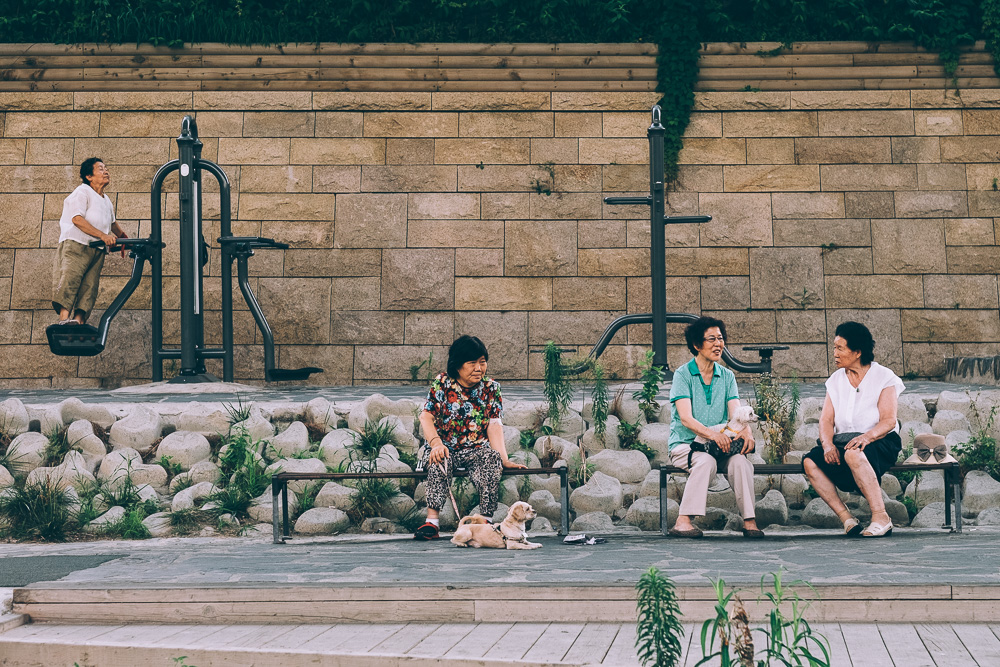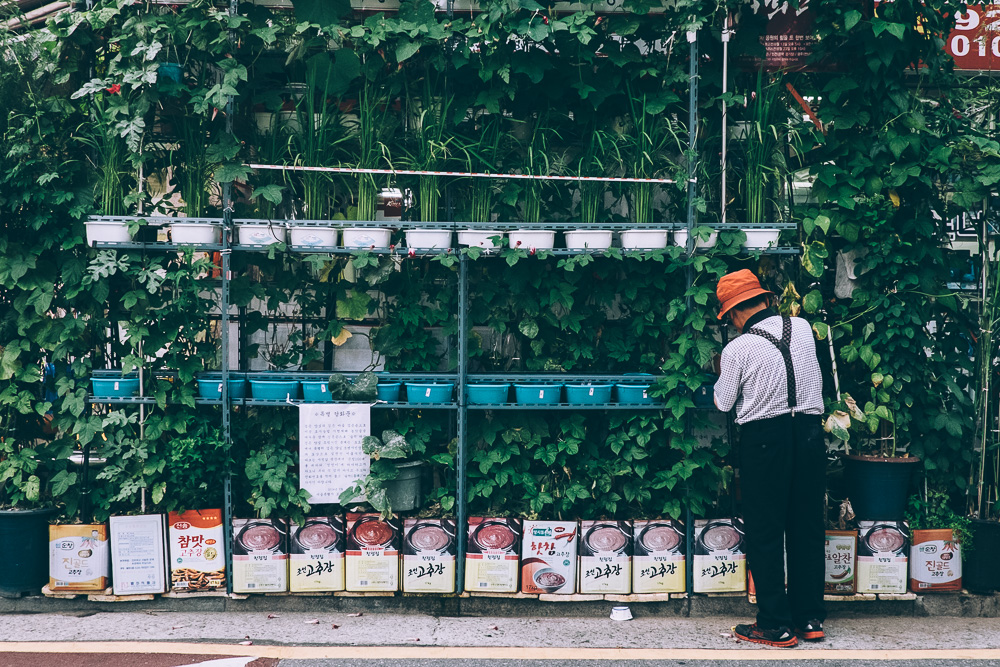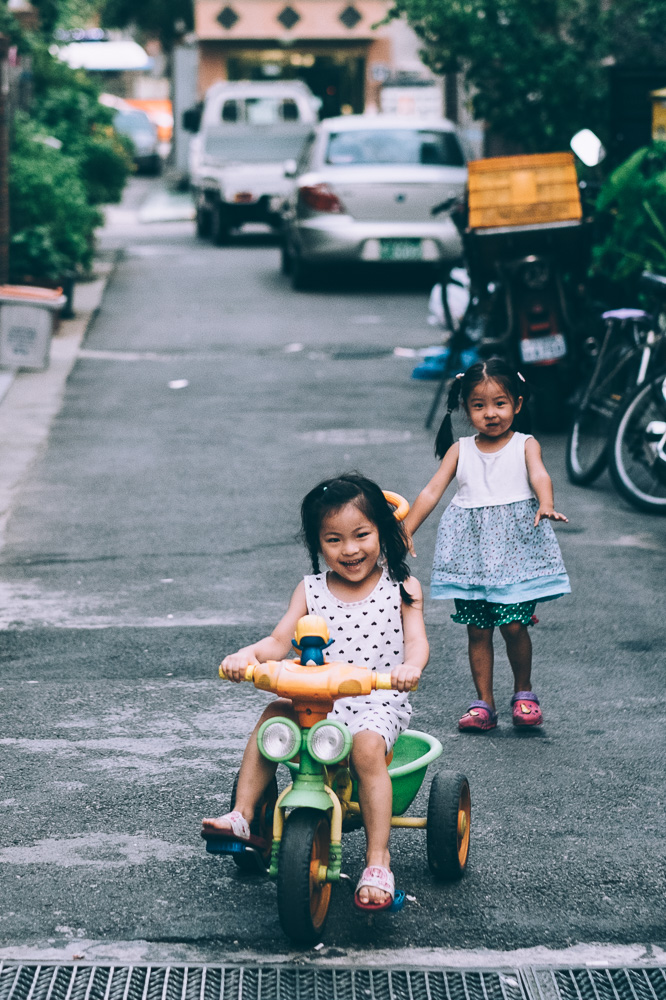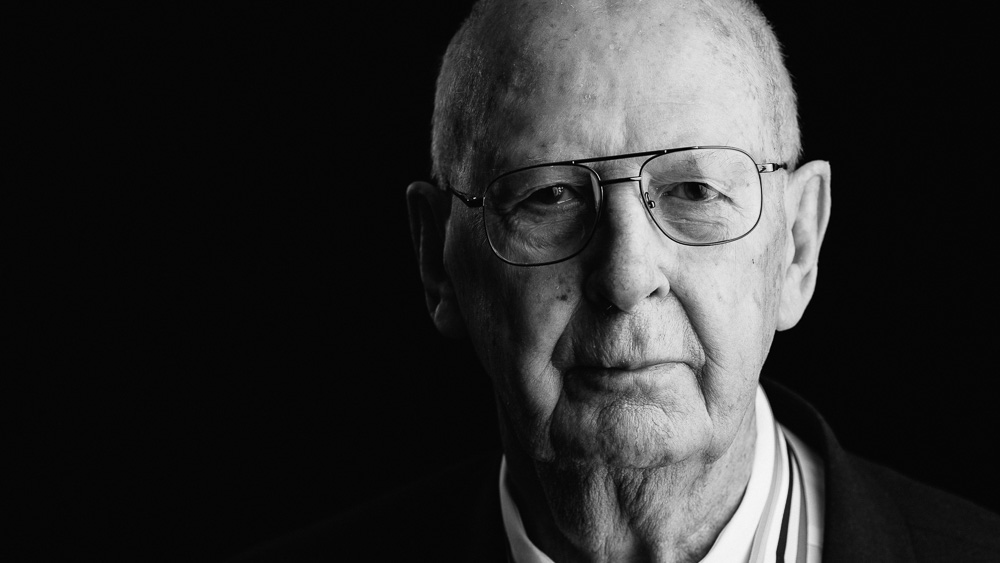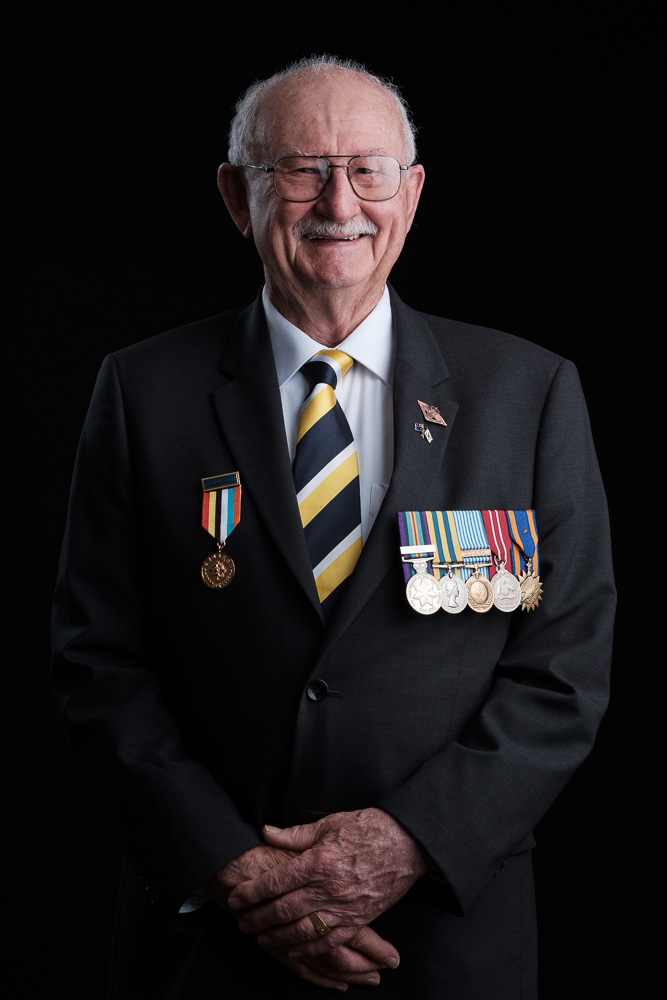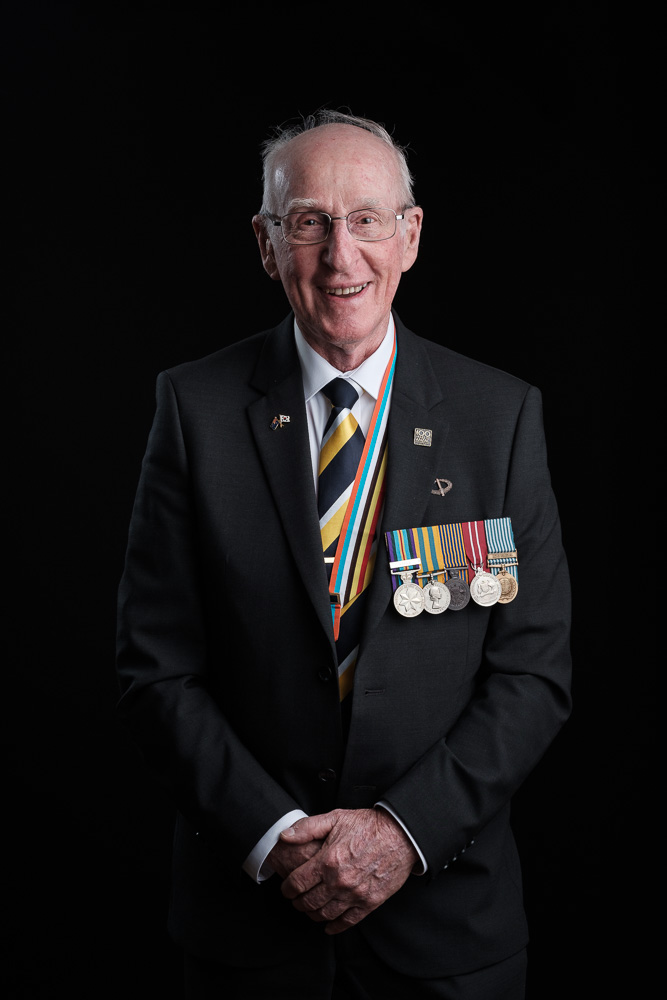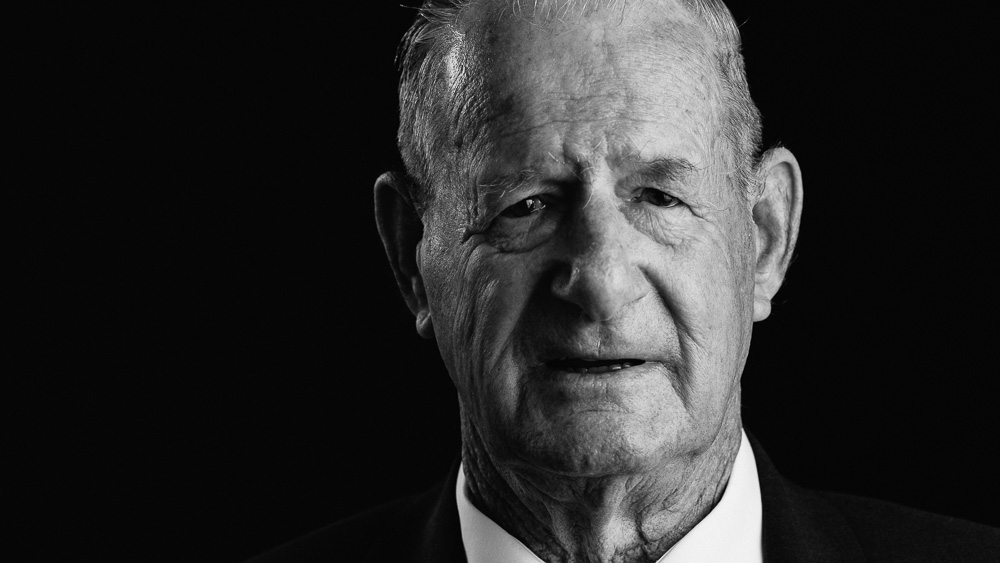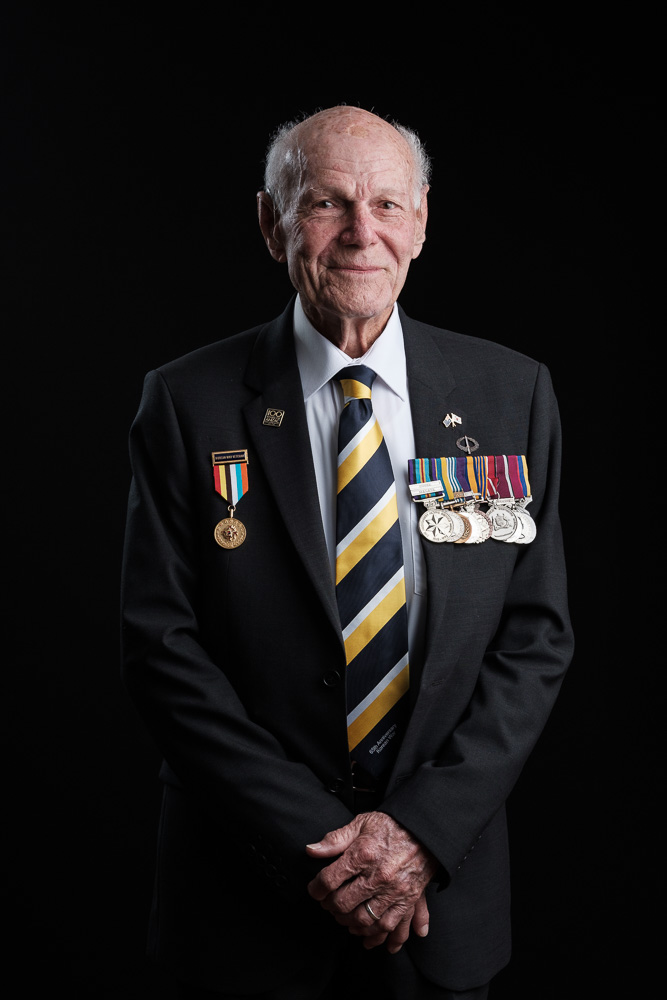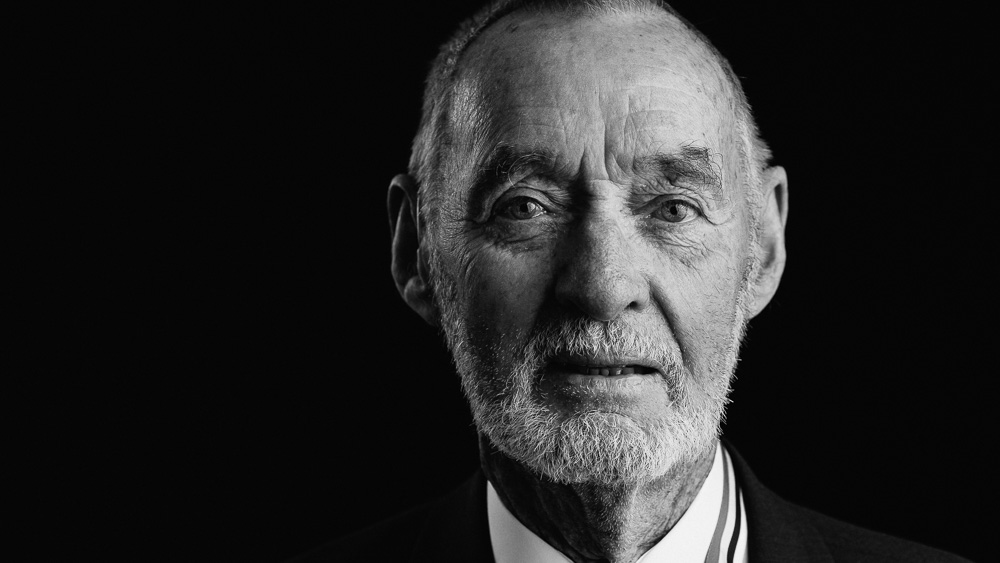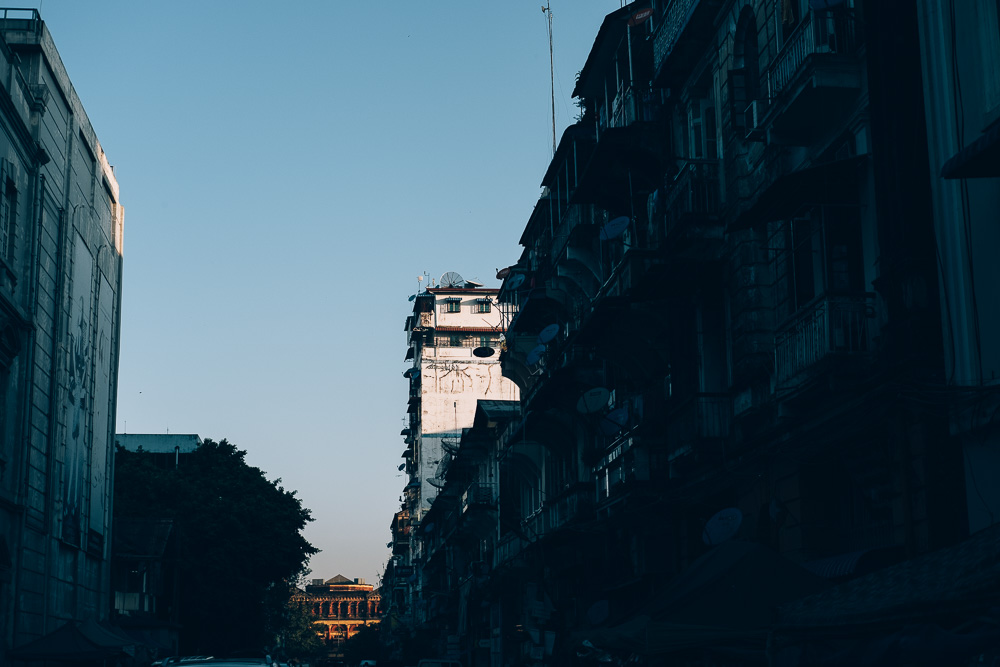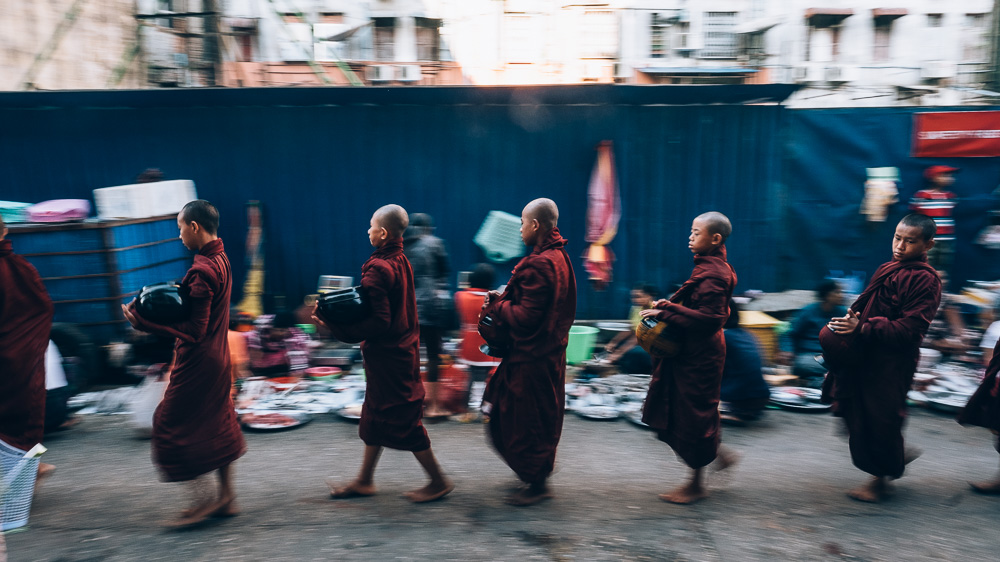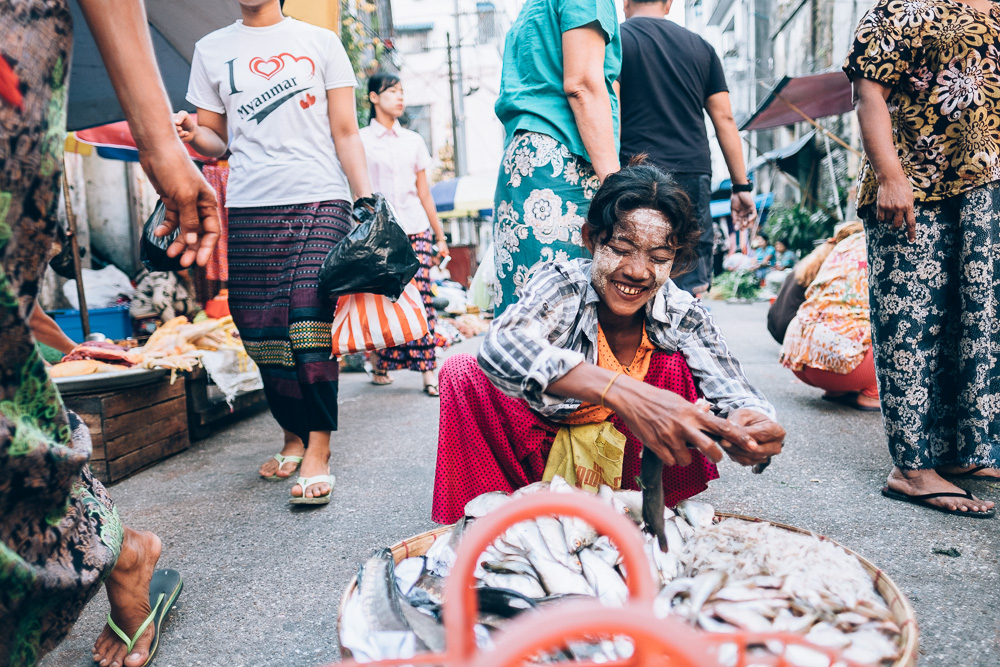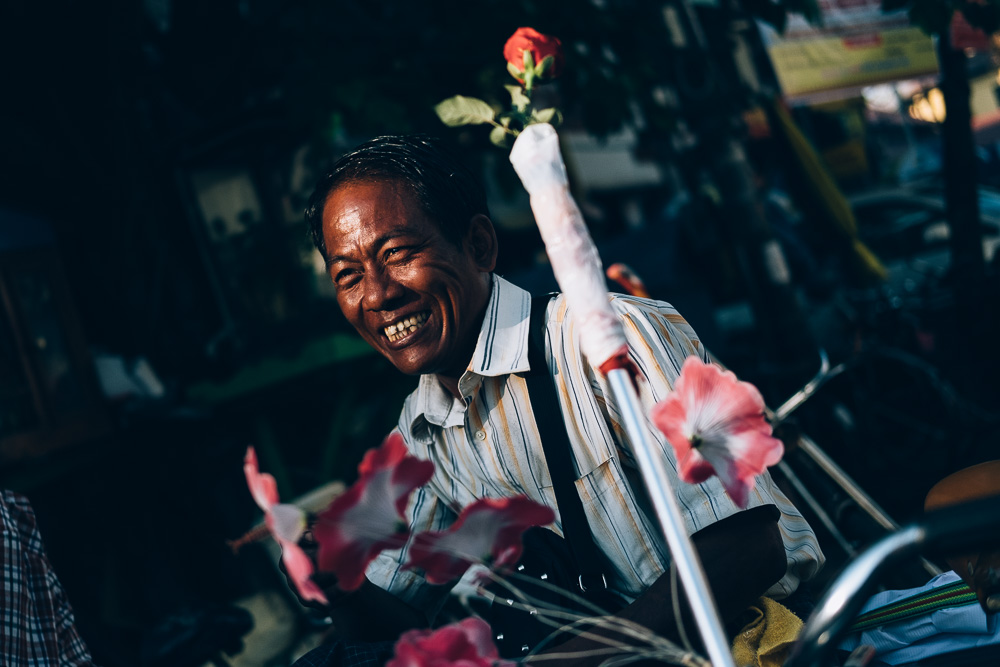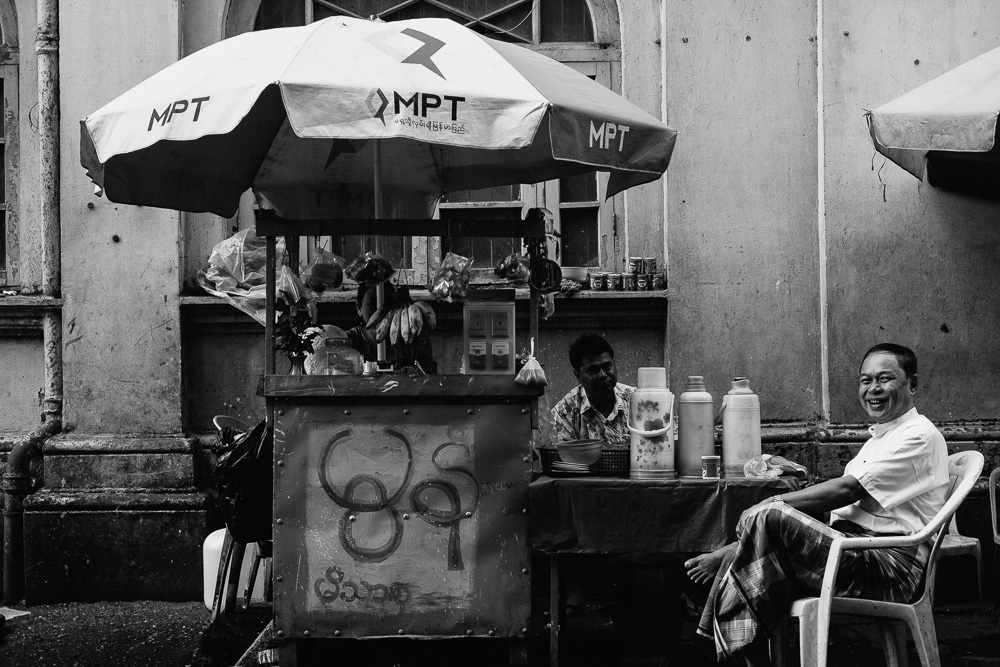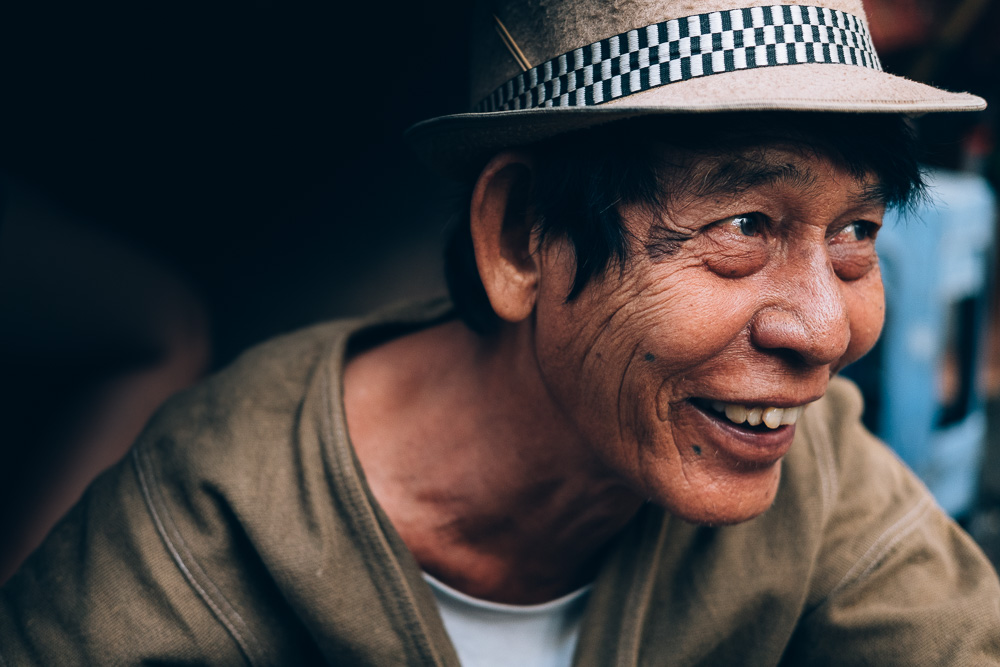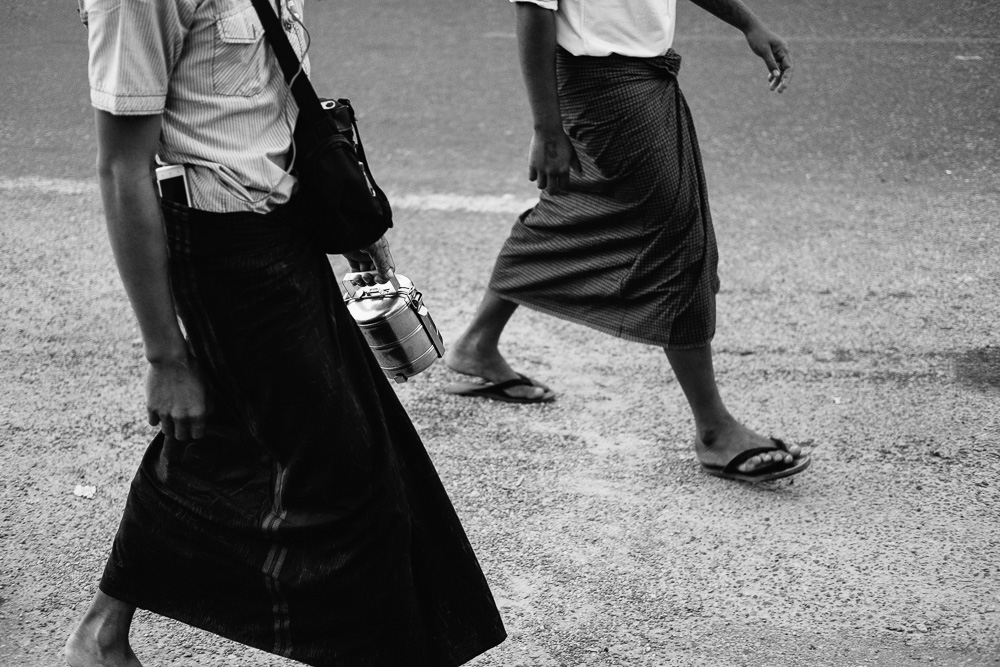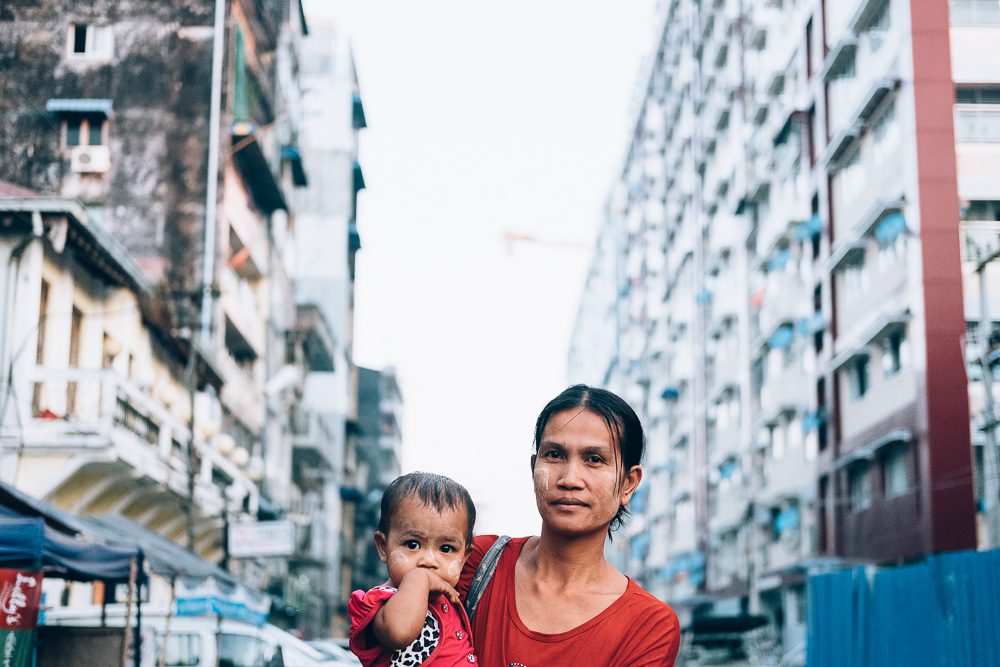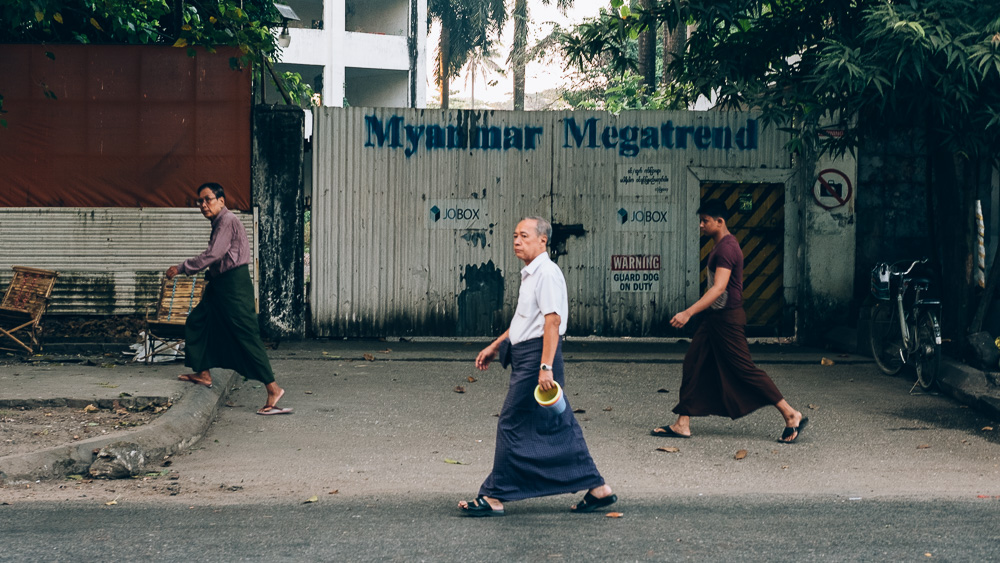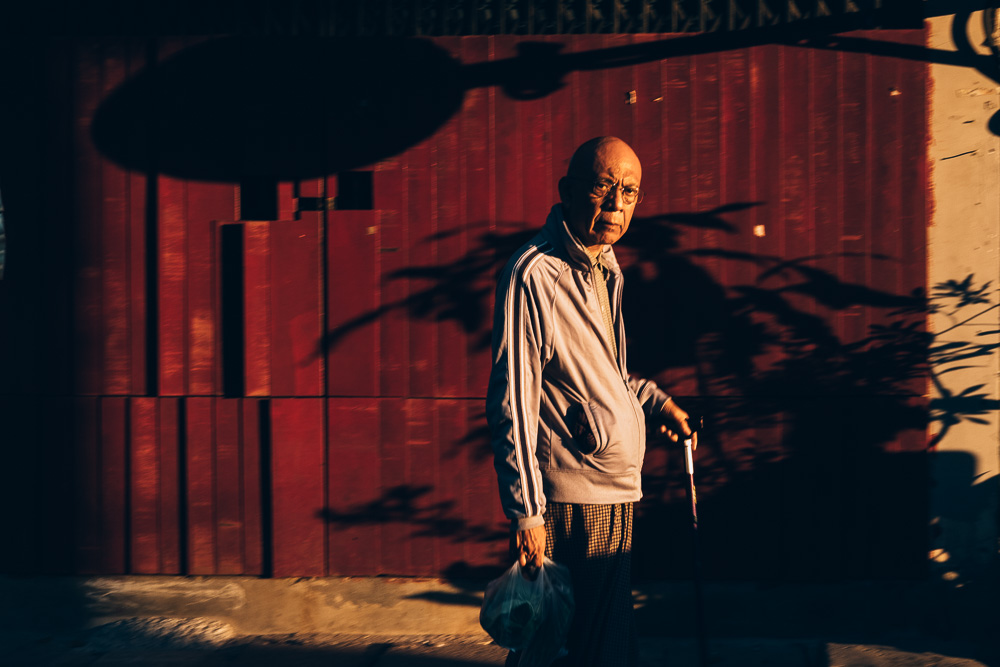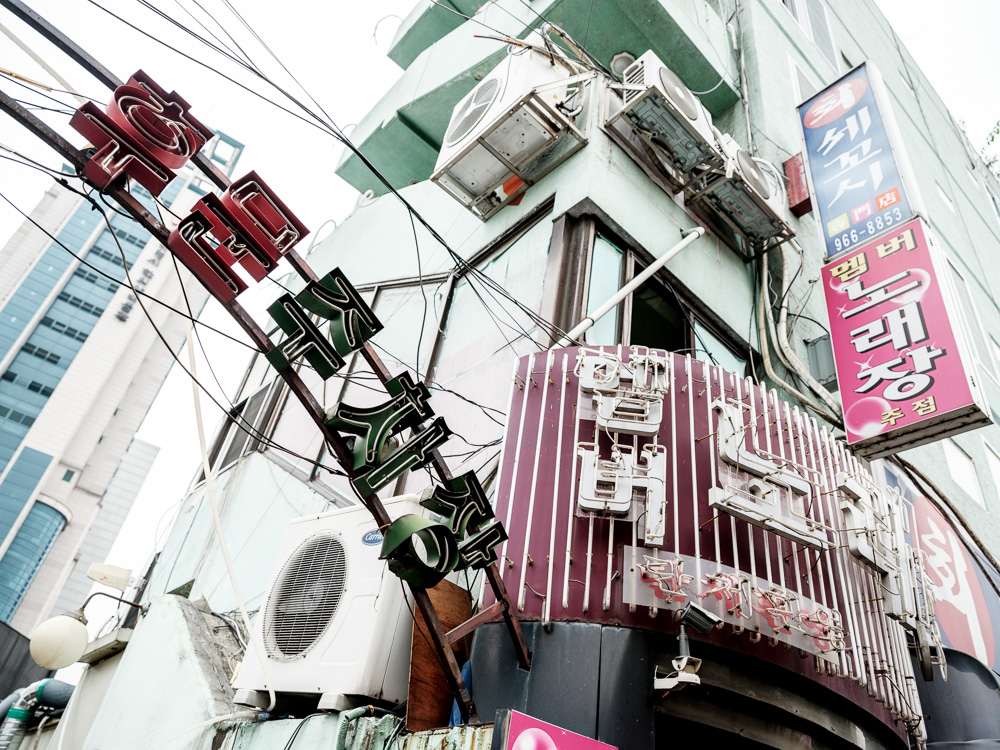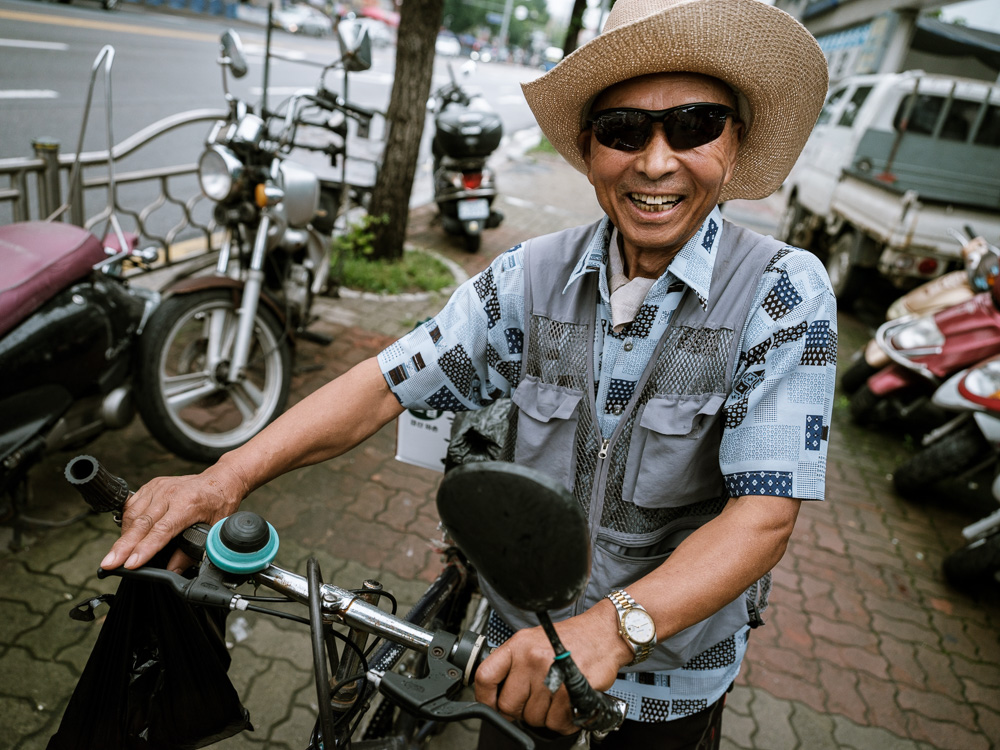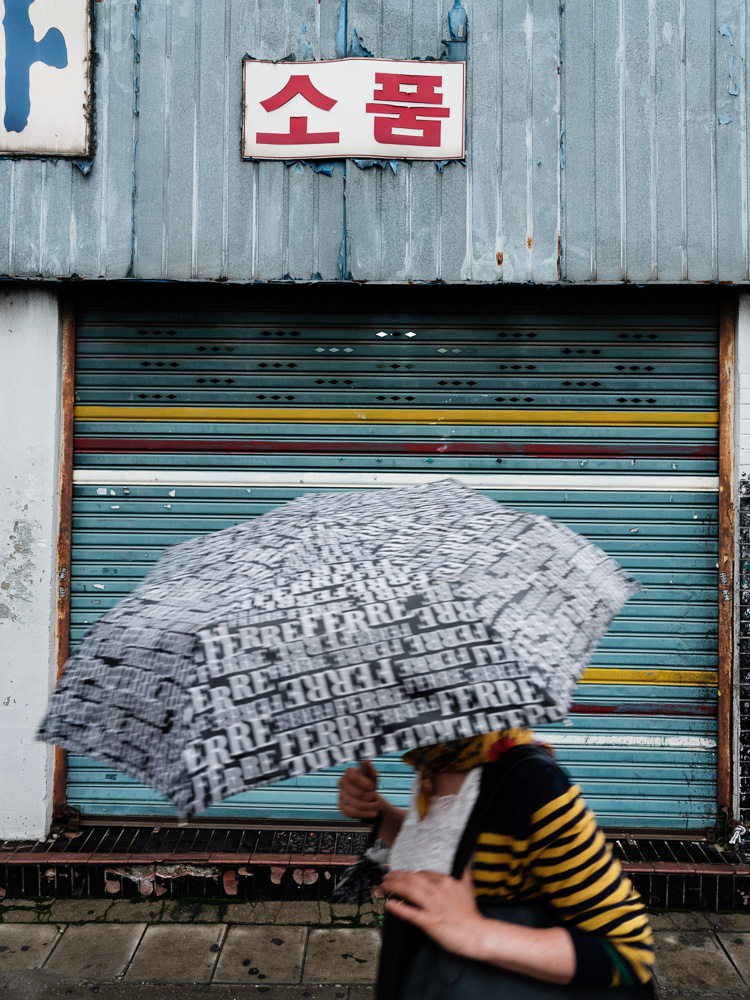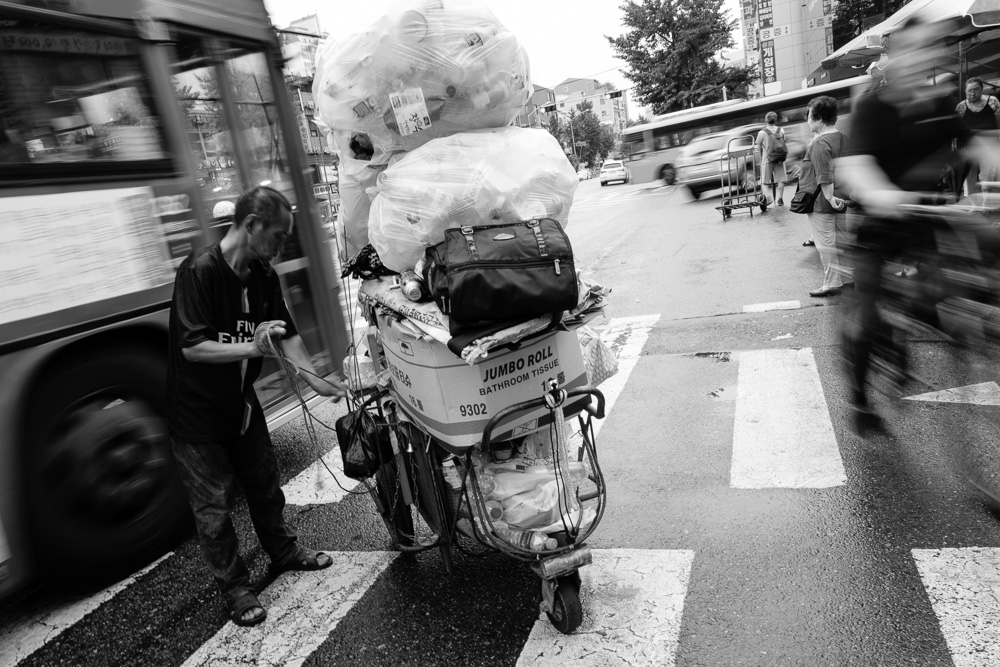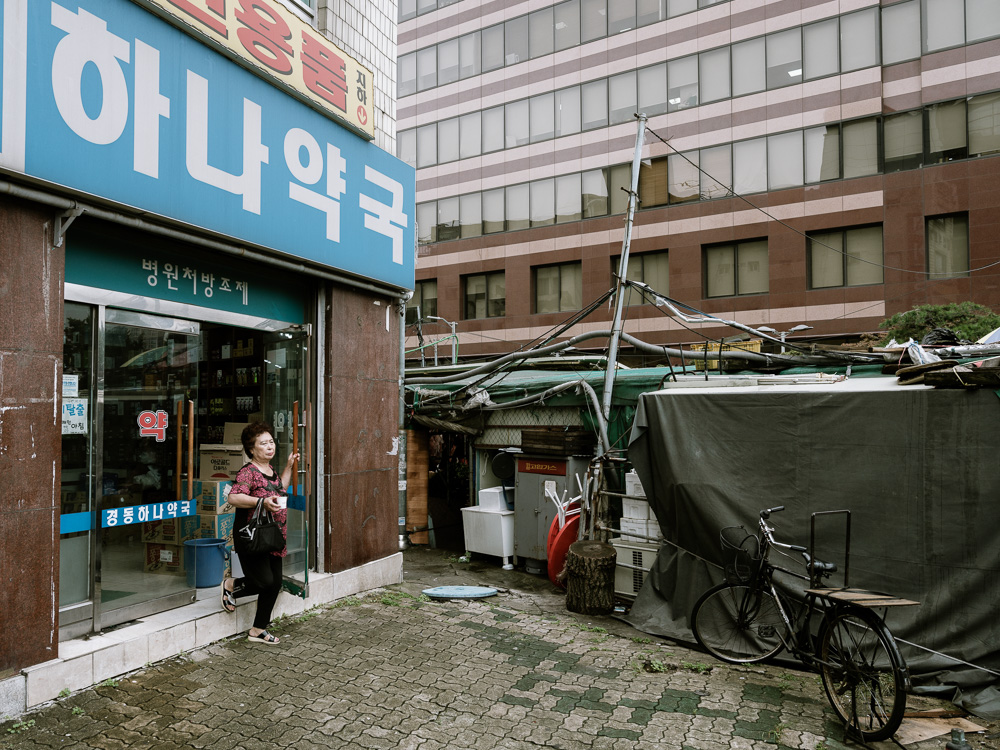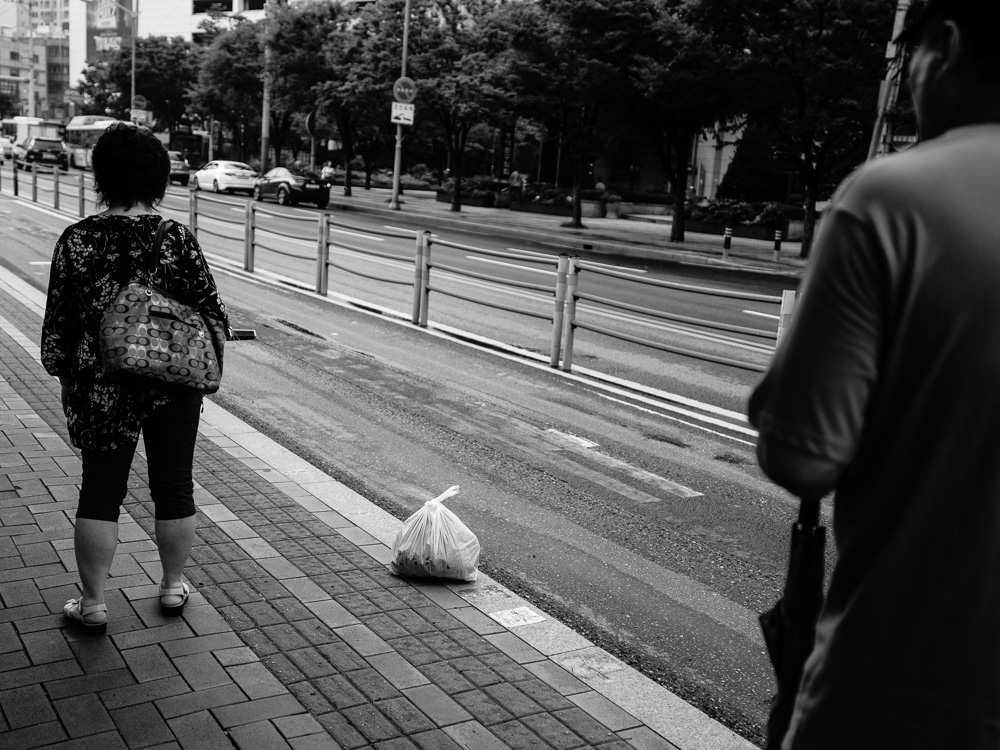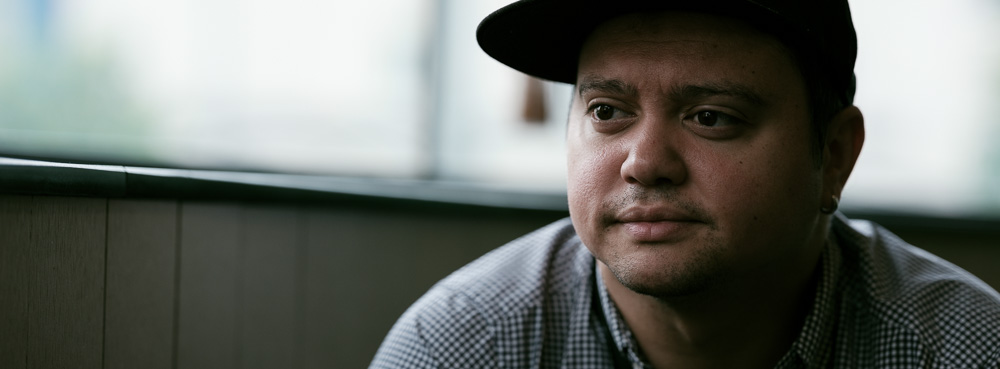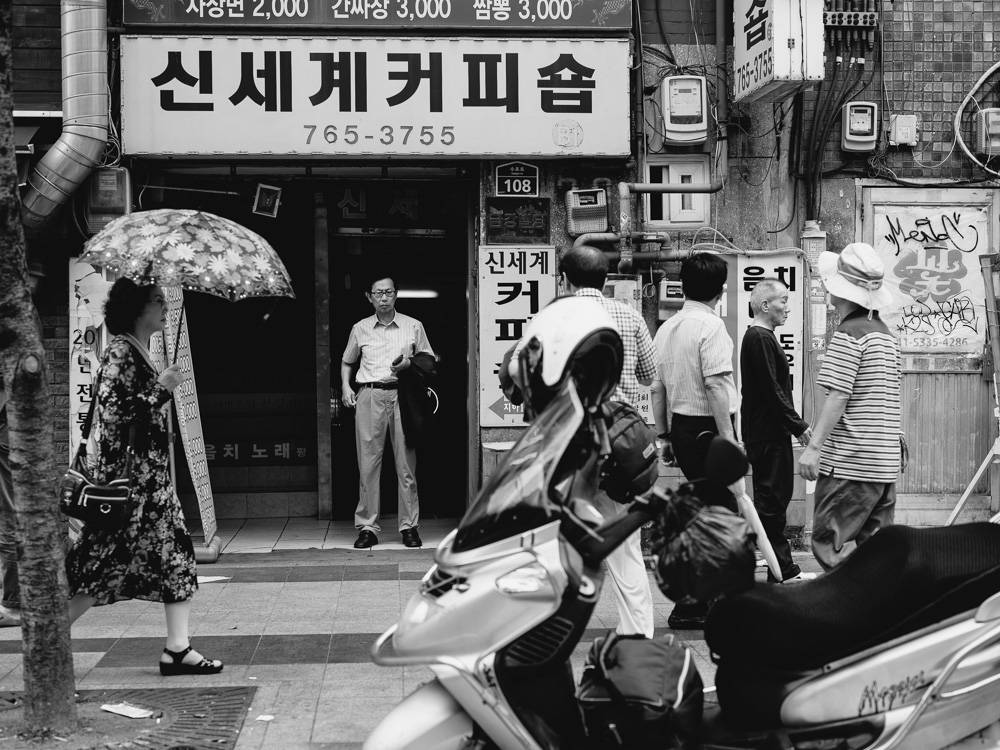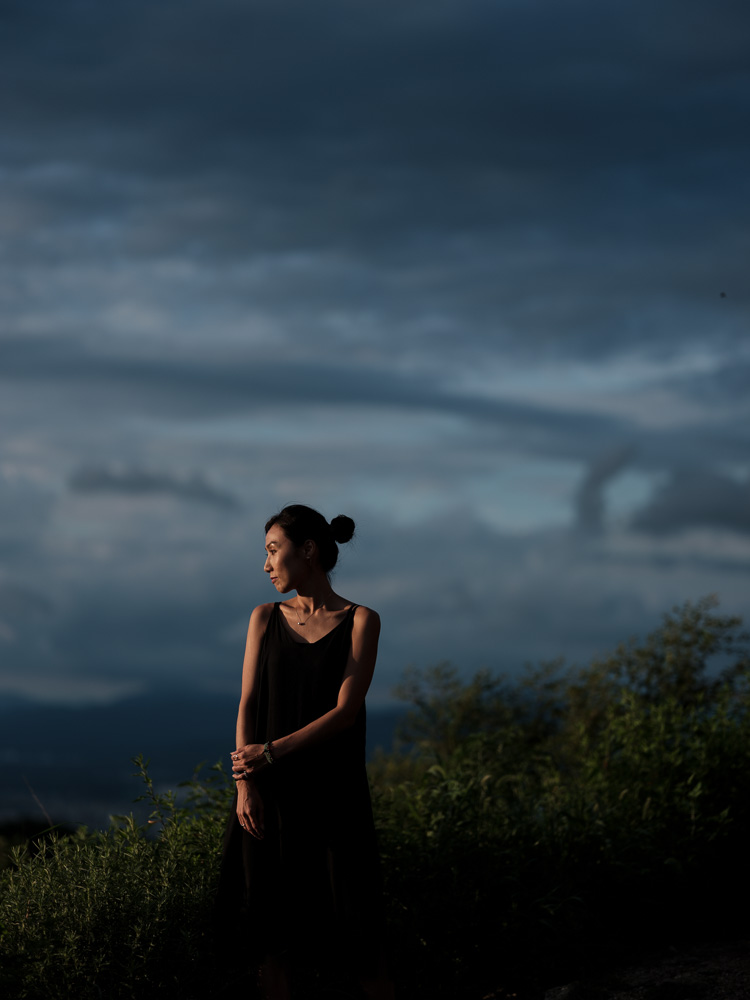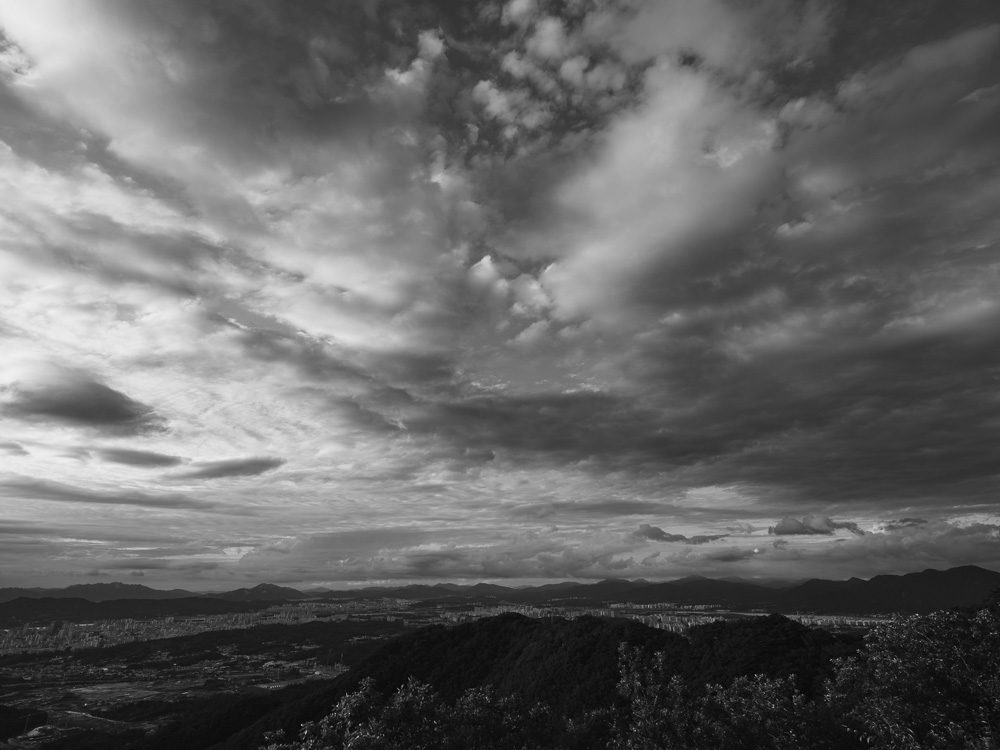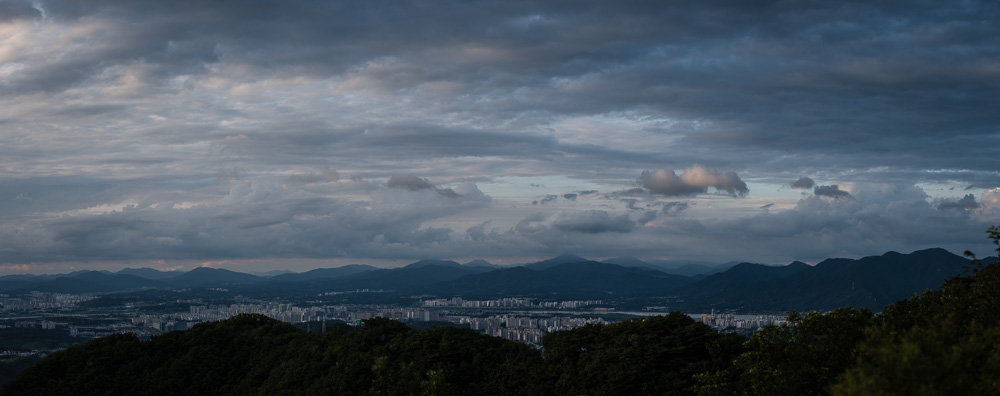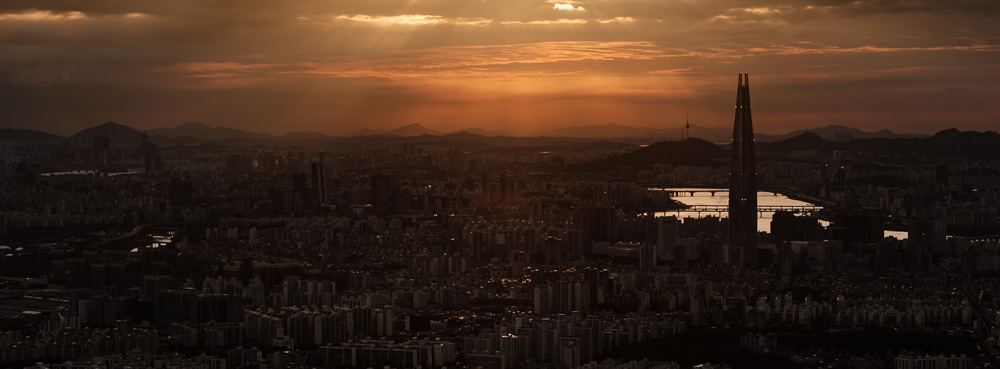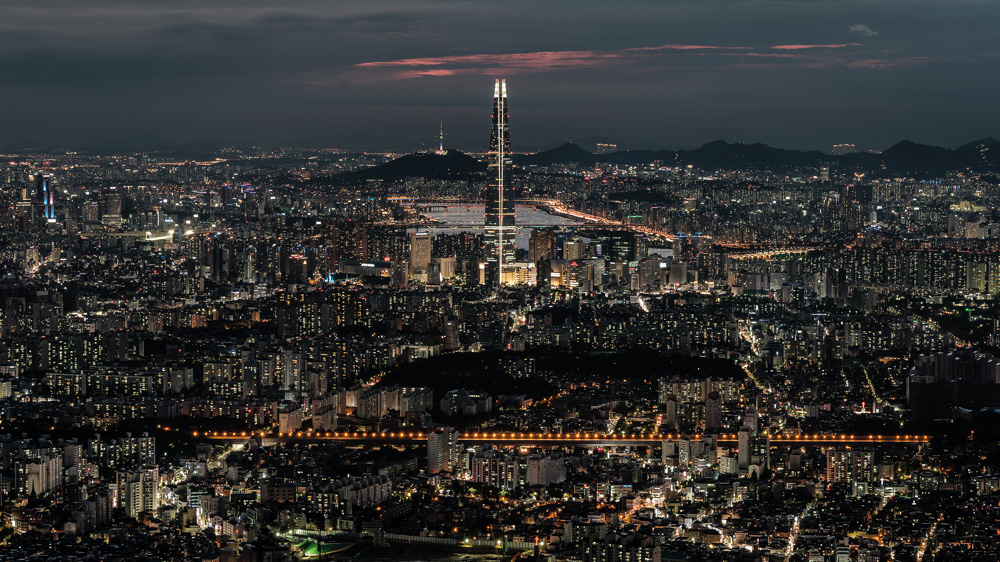Yangon Circle Line Train – Short Essay
Jongno 1.2.3.4.5.6 Districts of Seoul – Short Essay
Jongno is the old downtown of modern Seoul. It was what Gangnam is. The character of this district draws me back time and time again. The people are gruff and hard working. They come from every background you could imagine, and you never know who you’ll meet as you turn each corner. $3 hair cuts, $2 lunches, goldsmiths, and board games. That is Jongno for me.
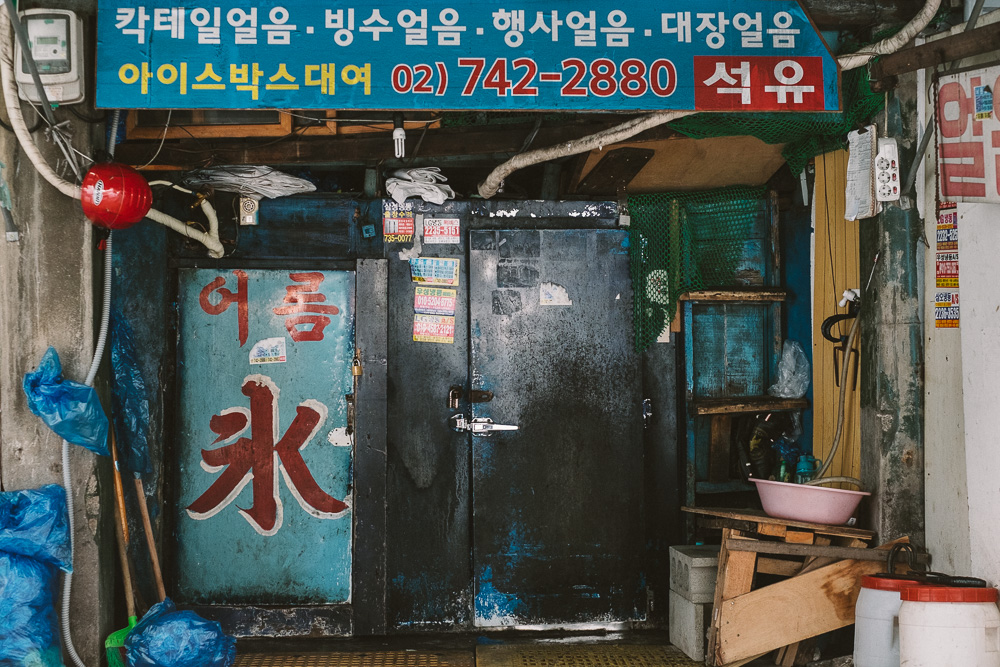
Cheongnyangni Station Area – Short Essay
Penang Durian Industry – Short Essay
Yongdu District of Seoul – Short Essay
Lest We Forget – Short Essay
The forgotten war. The Korean War. 6.25. A time when Australian boys again left home to defend the rights and lives of those they didn’t know. The eight men below are veterans of that war. They are the men who ensured I am able to live where I live, and do what I do. My wife and her family are here because of them and their efforts. I have them to thank for the life I am able to live now. This is my way of thanking them. Lest We Forget.
Yangon Downtown Morning #1
Fujifilm GFX 50S – Day 1
I have the Fujifilm GFX 50S for the next month or so thanks to Fujifilm Korea (glad to be using it for my Tattoos of Asia project), and I’d like to share my thoughts here as I begin using the camera. I’ve shot both medium and large format film over the years, but this will be my first long term exposure to medium format digital.
Today, I decided to take it for a walk around the streets of Seoul to get a feel for the camera and decide how I’d like it set up before I do anything too serious with it. I decided to take some streets I’ve not taken in one of my favourite areas of the city to challenge myself creatively and make sure the camera gets in my way for the first little while.
Thoughts from today:
- It’s an X, but it’s not.
- It feels like the X-T1 did at release; focus is around that speed, and there are still a few clumsy settings.
- Files are significantly different from X-Trans files.
- The camera is very well made.
- Battery life could be better.
- Not a run and gun camera, but definitely useable as a walk-around.
Fujifilm GFX 50S – Day 2
As you may have seen in the previous post, I have the Fujifilm GFX 50S for about a month and over the next week, I’ll be testing it. I’ll head out soon to work on my Tattoos of Asia project, and am playing with every aspect of the camera before I leave so I know what to expect.
Day 2 was a Saturday with my good friend Marco for a quick coffee in the morning, and then an afternoon with my wife before I head out. We decided to head up Namhansanseong for a view of the city as the sky was looking promising.
Thoughts from today:
- The 65:24 crop is a lot of fun
- The tonality is truly special
- You can handhold this thing with no worries at all
- The 110mm f/2 lens is special
- The files can be pushed a LONG way
- Seoul sunsets haven’t changed
An Afternoon in Tongyeong
Tongyeong’s downtown is delightfully gritty. While the crowds are drawn to the mural village and recreations of Admiral Yi’s “Turtle Ships”, the alleyways hold the true gold of Tongyeong. The people here are very much alive and very different from big cities like Seoul. The people of Tongyeong know what it takes to survive and it is written on their wind-carved faces.
“What are you selling there?” I ask the store owner.
Oysters,” she replies.
“Are they good?” A smile crosses her face.
“These are horrible. They’re grown in pens. These,” she points to another pile, “are delicious. They’re natural. Straight from the ocean.”
There’s a simplicity to her. She loves sharing what she knows; an honest woman who makes an honest living.
I enjoyed seeing the life in Tongyeong. It is refreshing to see people not simply commuting. That coupled with the scent of the ocean that fills every street in the city makes Tongyeong a really special place to visit.














Laowa 9mm f/2.8 Zero D for Fujifilm Review
As a portrait photographer, I don’t stray into the ultra-wide-angle realm all that often. I’m certainly not against using the Fujifilm XF 16mm f/1.4 or even the Fujifilm GF 23mm f/4 for dramatic effect as you can see on my YouTube video about shooting wide-angle portraits, but any wider and I’m not usually going to reach for it when shooting portraits. But, when Laowa reached out and asked if I’d test their 9mm f/2.8 Zero D lens for Fujifilm, it seemed like a great time to get out and shoot something different.
This will be far from a technical review. There won’t be any closeups for sharpness or test charts. But, I’ll try to pepper in a few details as I see them being relevant. In the end, most modern lenses are pretty darn good and the technicals don’t really need to be talked about unless they absolutely stand out. So, let’s take a look at this fun little lens and what it’s capable of.
Laowa’s slogan for this lens is “Carry Less Capture More” which is absolutely true with this lens. Just like Fujifilm’s f/2 series of primes, this lens is so small and light you can just toss it into any corner of your bag and not worry about whether you’re going to use it or not. Like Carol King, it will always be there for you.
As this is a wide-angle lens, the 1mm difference between this and the Fujifilm XF 10-24mm f/4 makes for a huge change in what you’re able to capture. It’s a lot wider, as you can see below. The Zero D part of its name means that you’re not going to see any barrel distortion in your photographs. Lines will stay straight, regardless of how close you focus. This is really impressive for a lens this wide.
The trade-off there, of course, is a deep vignette. Wide open, you’ll notice at least a couple of stops of light falloff in the corners. It’s easy enough to correct, but it’s something to be aware of for those who are used to Fujifilm’s automatic corrections. I’ve found that it’s easy enough to correct for in well-exposed images and sometimes even nice to leave it in. The vignette below is in part from the lens and also from the filter I was using. I like it in this case.

I’ve found that it can be quite hard to compose with this lens handheld and get straight verticals or horizontals. Slight camera movements will make huge differences with a lens this wide, so if you’re really trying to get some perfect lines, it will pay to lock the camera down on a tripod. When you do, the results will really shine. Extremely wide symmetrical shots look great out of this lens.
One thing I’ve really enjoyed with this lens is how light and small it is. With this mounted on my X-H1 and my Manfrotto MP3-BK slipped into my pocket, I’ve been able to walk all around the city and set up for some great shots of Seoul with very little equipment. I always have to take my tripod with the XF 10-24mm because it is so front heavy, so it was refreshing to make images with such little gear.

I also had a really great chance to shoot some long exposures over the ocean with my good friend Roy Cruz while I visited Tongyeong last week. Capturing the rocky foreground with the dramatic clouds in the background was a breeze with this ultra-wide lens. On top of that, it was pouring rain the whole time, so I got to test how it would hold up.
The Frog Eye Coating (FEC) on the lens managed to reduce the number of raindrops that stuck to the lens, but not eliminate them completely. Unfortunately, this technology doesn’t apply to the filters you put in front of it (now THAT would be a great patent to own…). While shooting long exposures, I had to constantly be wiping the rain off the filters. But, we managed some great shots, even in the lashing winds and rain.
The lens didn’t show any signs of moisture getting inside, either. Despite three hours in the wind and rain, it was fine after a quick wipe down. Being that there’s no rubber gasket on the back, however, you’ll want to be careful when changing lenses that you completely wipe the area around the mount before removing the lens.

Let’s geek out for just a moment and talk about sharpness. In the centre, you’ll be a happy camper. However, expect to stop down to around f/8 or f/11 to get sharp corners. Nothing scientific here, but I feel like this lens resolves a little more detail than the Fujifilm XF 10-24mm f/4. I hope to get a copy of the 14mm f/2.8 and compare those at some point as well, but I feel like the 14mm is likely to be sharper. Check out the frames below to make up your own mind about whether sharpness will be relevant to you.


One other thing you might notice in the crops above is how well corrected colour fringing is. Even in scenes with much stronger contrast, I haven’t really noticed any significant fringing yet, which is fantastic! Less post-processing!
I spoke in my YouTube video about the aperture ring taking a little getting used to. It does turn the opposite way to Fujifilm’s lenses, and this tripped me up a few times before I got used to it. The other thing is that Fujifilm bodies don’t have a system like Nikon’s AI (Aperture Indexing) system, and thus cannot record the aperture values of lenses without CPU contacts. Annoying, but not a deal breaker. Perhaps Laowa could include a chip in future lenses like Zeiss did with some of their lenses.
This lens has been plenty of fun to shoot with. I’ll certainly be taking it with me on future trips to the seaside and whenever I’m out and about shooting in Seoul. Pick up your lens from Laowa now.
Hit me up on YouTube if you have any questions about the lens and I’ll try to get back to you there. Also, look out for a more detailed review hitting Fstoppers.com from me soon. For now, enjoy the images!
Please note that the product links in this page are affiliate links that help support this blog. Please use them when you make a purchase to help me keep providing content.









Three Ways to Improve Your Photography
This is the companion article to my YouTube video on improving your photography. In the video, I discuss three simple things you can focus on to make positive changes in your photography.
The first of these is composition. Here are the images from that section.






The second section is about light. Here are the images from that section.






The third section is about moments. Here are the images from that section.








Black and White Images from Doseonsa
These images are to go with my video on why I sometimes choose to shoot black and white images in camera. Check out the video here.
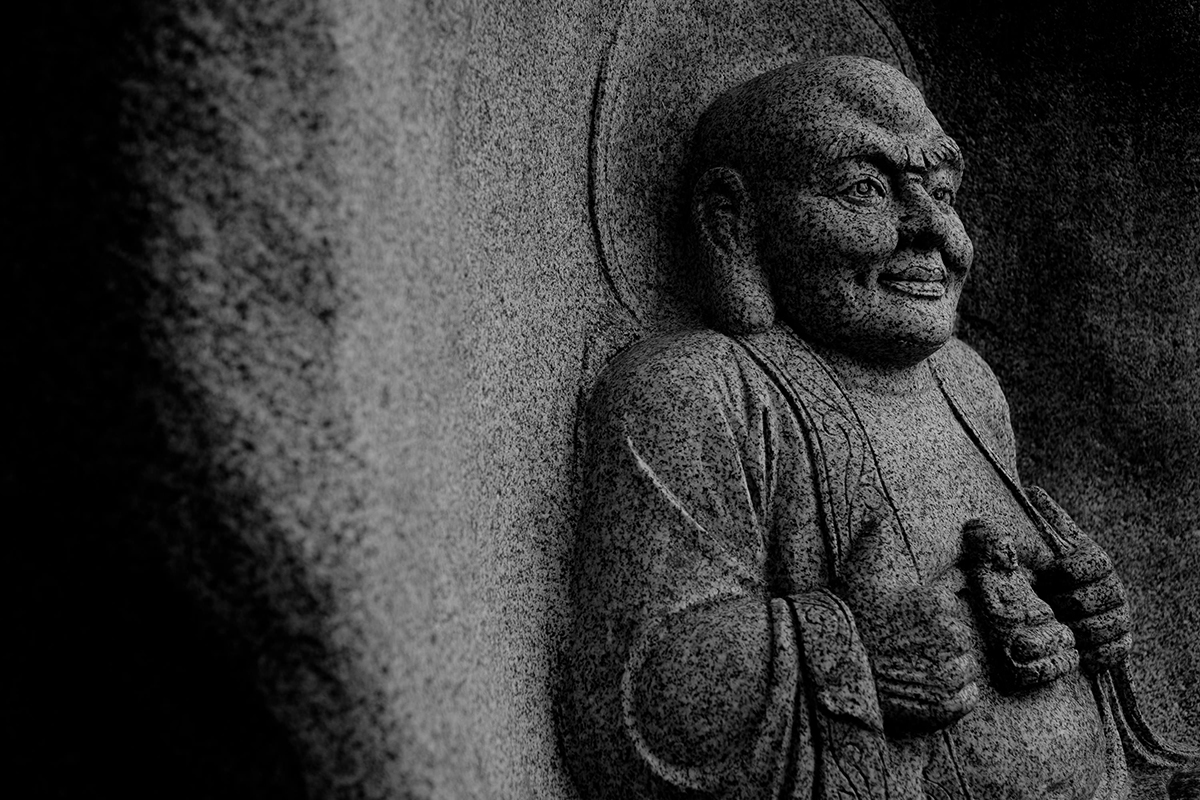









Hoehyeon District of Seoul – Short Essay





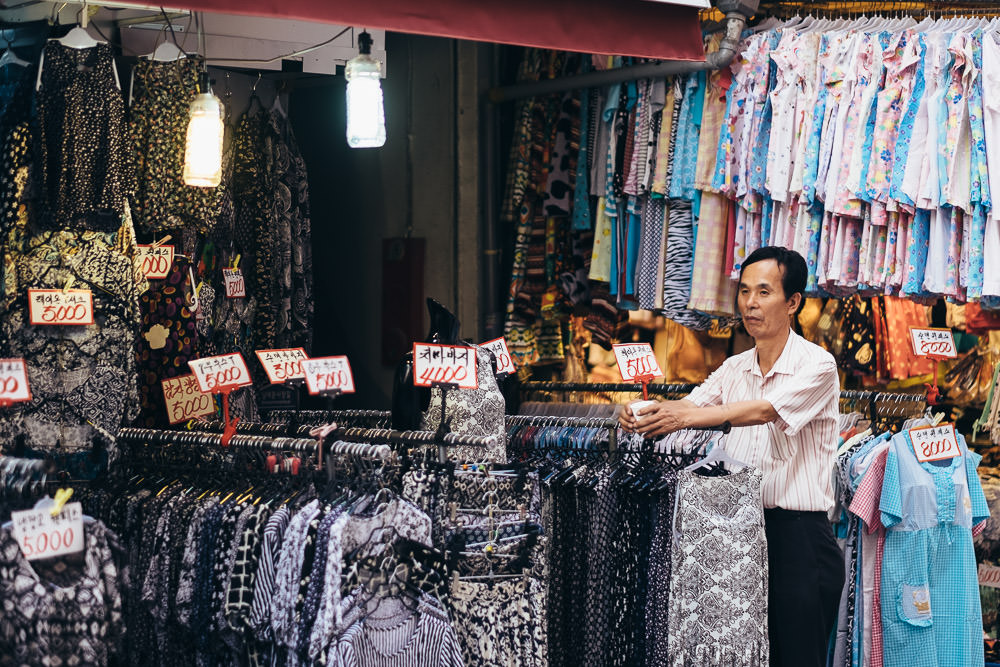
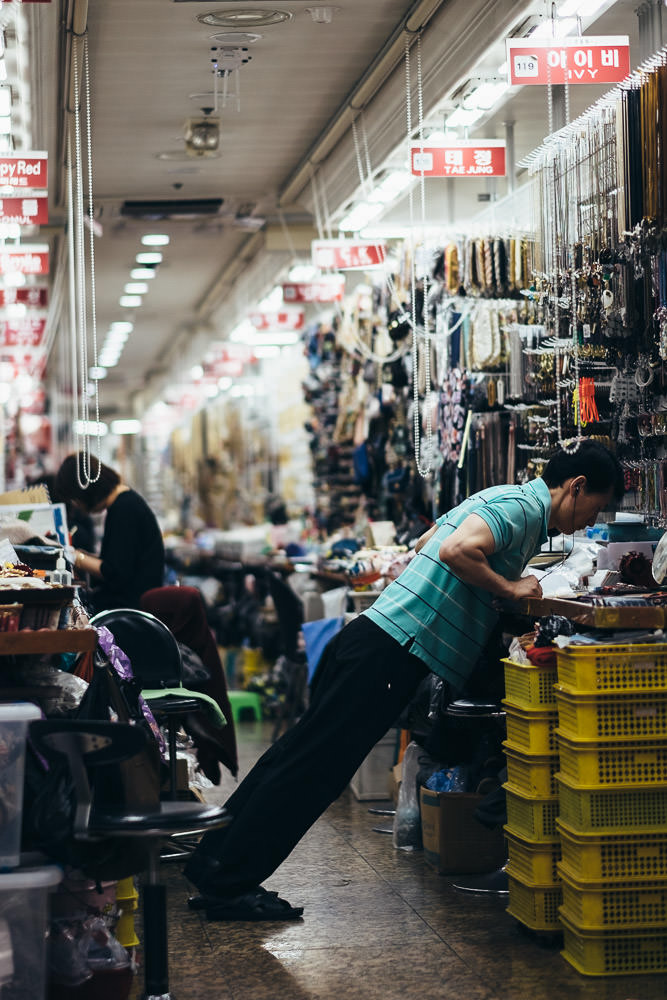



Fujifilm X-H1 IBIS Tests and Samples
The Fujifilm X-H1 is the first of Fuji’s X series cameras to feature In Body Image Stabilisation (IBIS). As primarily a stills photographer, I wondered what the benefit might really be for me. Would it truly make that much of a difference if I could stabilise all my primes? After a month of heavy use, I can say that, in short, it absolutely does make all the difference. I’ve really been enjoying knowing that my shots at 1/60 or sometimes even slower will always be sharp. This is of great benefit on my couple sessions and at corporate events. For my personal work, I’ve been pushing the limits of this system to see just what it’s capable of, and that’s what I’ll be showing here. Before that, however, I’d like to give you a few of the pros and a couple of cons about the IBIS system.
First up, the good stuff. Let’s just say that it does what it says on the box. You’ll get a lot more hand-hold-ability out of your lenses. This is fantastic for the primes in Fujifilm’s lineup. Shooting with a stabilised 35mm f/1.4 has been an absolute dream. Being able to hand-hold shots at 1/15 or 1/8 and get them sharp has been really useful as I can now keep my ISO as low as possible as often as I can. Of course, you’re still going to get motion blur if your subjects are moving, so it’s not magic just yet. Also, turning the IBIS onto continuous mode makes composing with longer lenses much easier. No longer do my shaking hands shift my composition around quite so quickly. For video as well, this system means I can shoot simple run-and-gun footage without having to bring heavy stabilisers along. Being that I’m primarily a stills photographer, this is great.
Now, the not so good. Well, there’s really only one thing that bugs me about the IBIS implementation and Fuji have said they’re going to fix it in a firmware release coming in May: as of the release, you can’t assign the IBIS function to a button or add it to your Quick menu. Not particularly Fuji-like to not allow you to customise this. Not to worry, though. That will be sorted out shortly.
For this post, I would like to keep a running journal of my IBIS tests. Each time I go out, I’ve been testing a different lens to see how slow I can push the shutter before I can’t reliably make sharp images. I’ll add my thoughts and samples for each lens as I keep testing them. Keep checking back if your favourite lens isn’t here yet. Feel free to let me know which lenses you’d like to see tested.
XF 23mm f/2 WR
This lens is so small and so pocketable that, with stabilisation, it becomes such a useful addition to my kit. So far, I’ve got sharp images down to 1/2 second with my elbows braced on a ledge. Considering that I usually won’t shoot this lens below 1/60 when shooting handheld, that’s an excellent improvement for me.

Fujifilm X-H1 IBIS, 23mm f/2 @ f/5.6, 1/2 second, ISO 400

Fujifilm X-H1 IBIS, 23mm f/2 @ f/11, 1/10 second, ISO 200

Fujifilm X-H1 IBIS, 23mm f/2 @ f/4.5, 1/12 second, ISO 200
XF 35mm f/1.4 R
This is my absolute favourite prime for the Fujifilm X system. With every camera or firmware Fuji releases, it just gets better and better. But, with the IBIS in the X-H1, this lens is a whole new beast. In my tests so far, I’ve been able to reliably get 1/10 second image sharp every time. On the odd occasion, I’ve found that even 1/4 second images will be tack sharp. That really depends on my technique, wind, and the subject, however.

Fujifilm X-H1 IBIS, 35mm f/1.4 @ f/2.8, 1/9 second, ISO 200

Fujifilm X-H1 IBIS, 35mm f/1.4 @ f/16, 1/25 second, ISO 100

Fujifilm X-H1 IBIS, 35mm f/1.4 @ f/2, 1/13 second, ISO 200
XF 90mm f/2 R WR
The way I see it, if you can stabilise one of the sharpest lenses on the Fujifilm system and allow slower shutter speeds when handholding, you have a winner. On the odd occasion, I’ve got a sharp image at 1/10 with the 90mm! See the shot below. However, I’d say that the point where I’m comfortable handholding it is 1/40. I’m looking forward to testing the potential of this lens a little more with IBIS.

Fujifilm X-H1 IBIS, 90mm f/2 @ f/2, 1/10 second, ISO 200
Check back soon, as I will be going through the primes one by one and making some more tests.
The Daai People, Chin State, Myanmar
Coming soon.
The Kaang People, Chin State, Myanmar
Coming soon
Lai Tu Trip Video
This video is a short introduction to my time with the Lai Tu People. It was filmed and edited by Wesley Chang. Pick up your copy of the book here and help me support the Lai Tu.
Taiwan Trip Video
This is a short introduction to my time in Taiwan with the Atayal and Truku peoples. It was filmed and edited by Marco Tessiore.
Brao, Laos – Video
This is a short introduction to my time with the Brao people in Laos.
